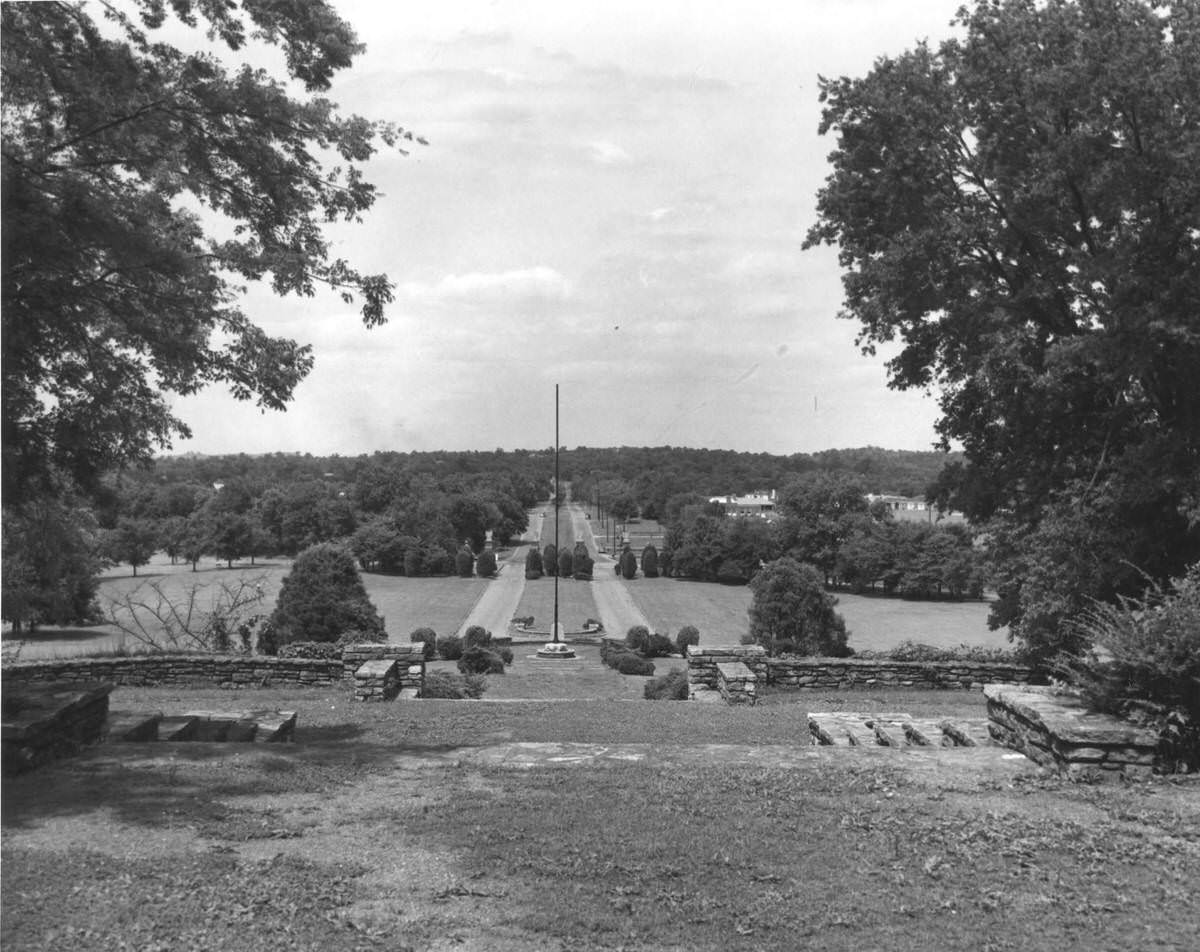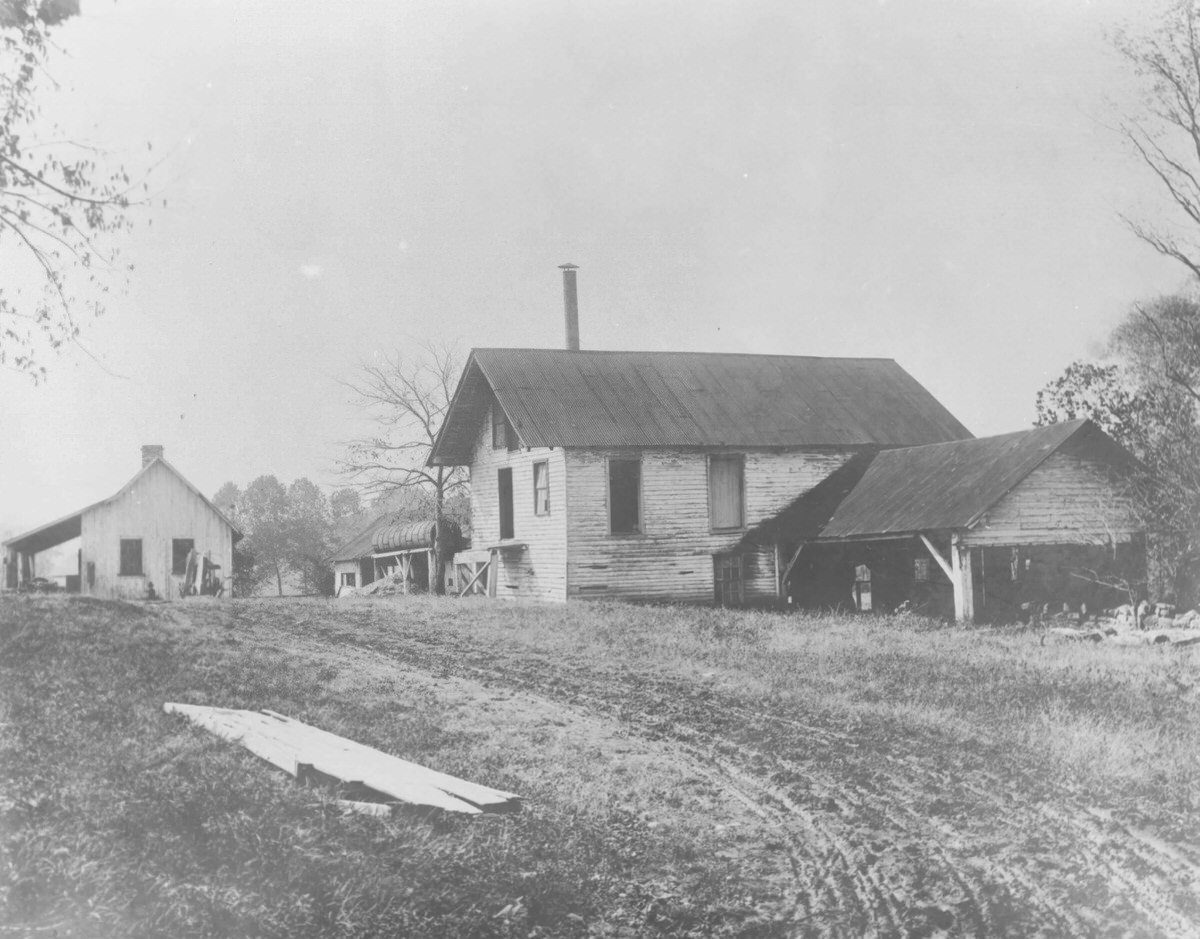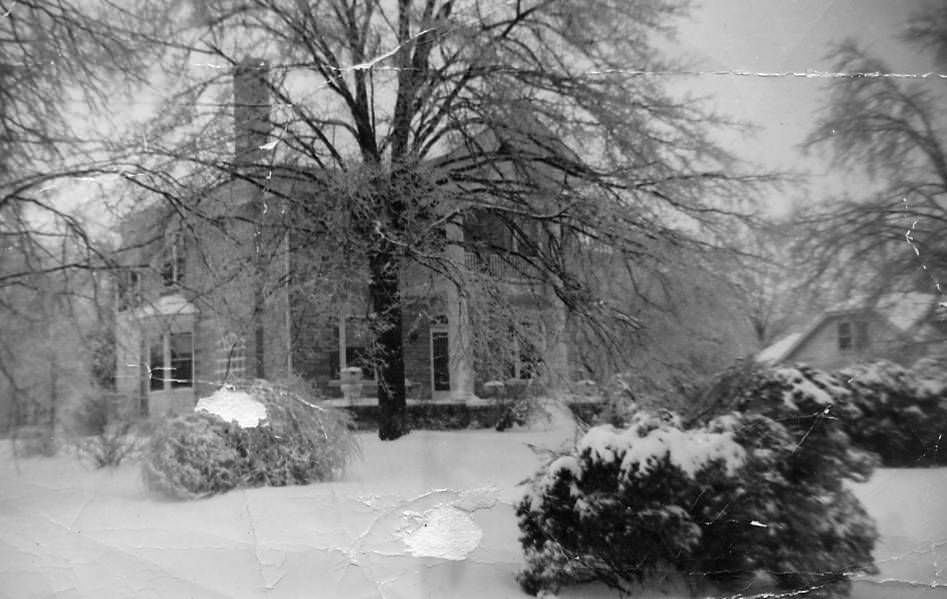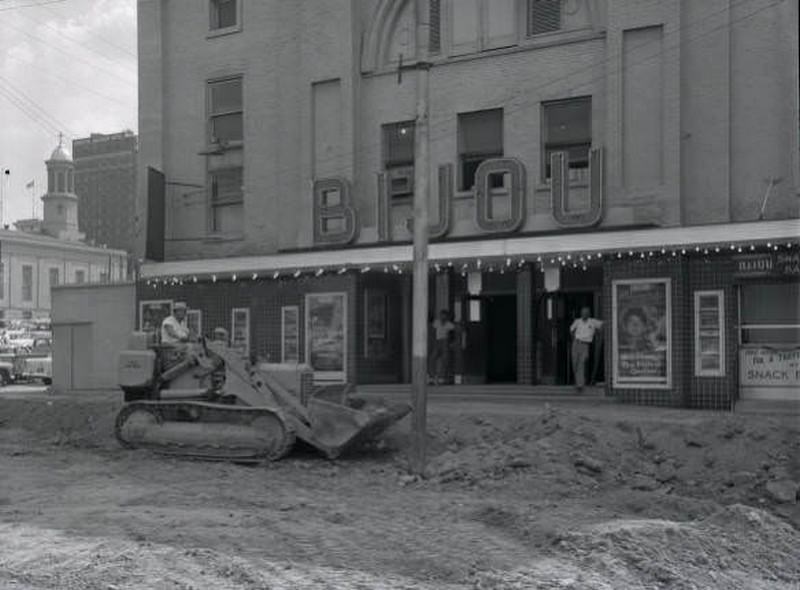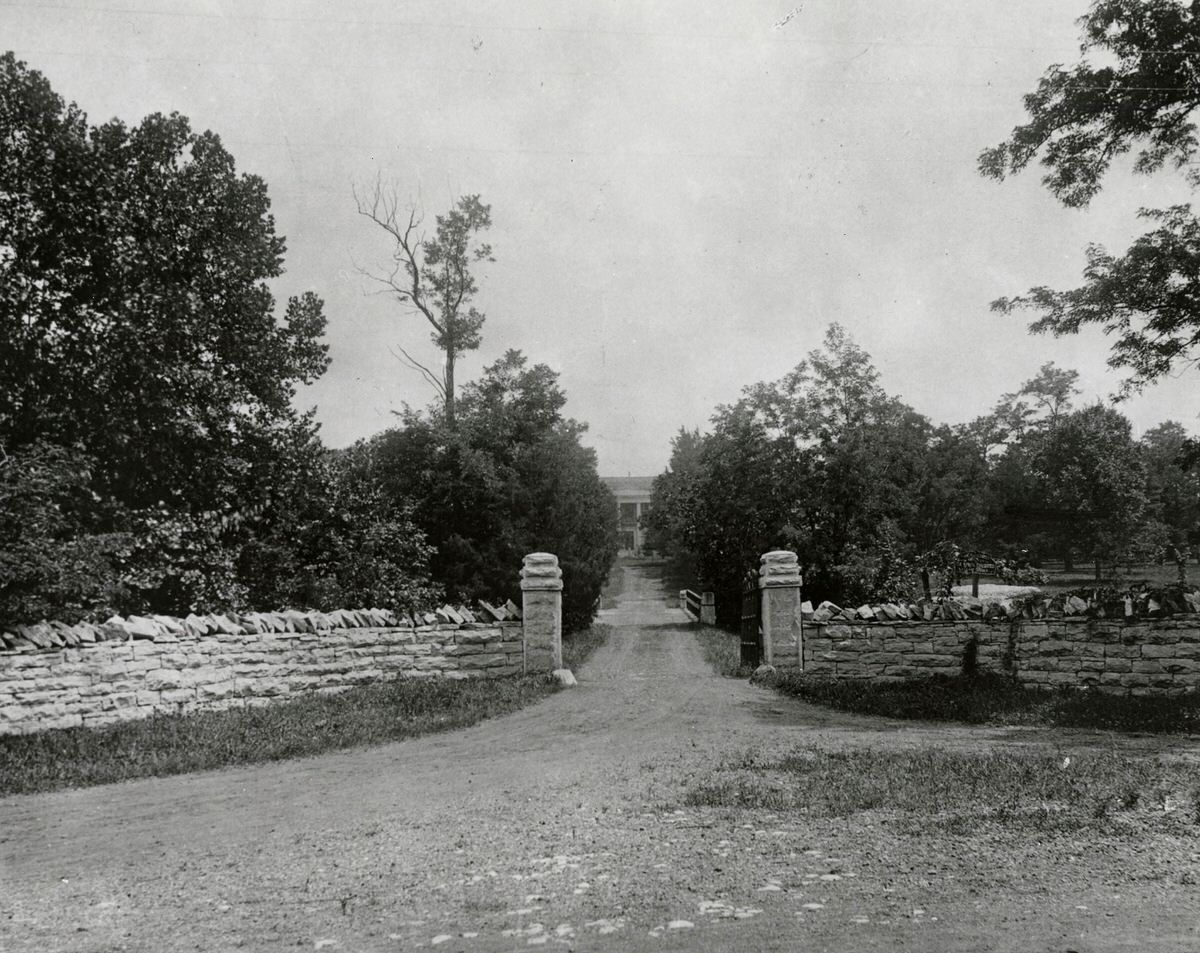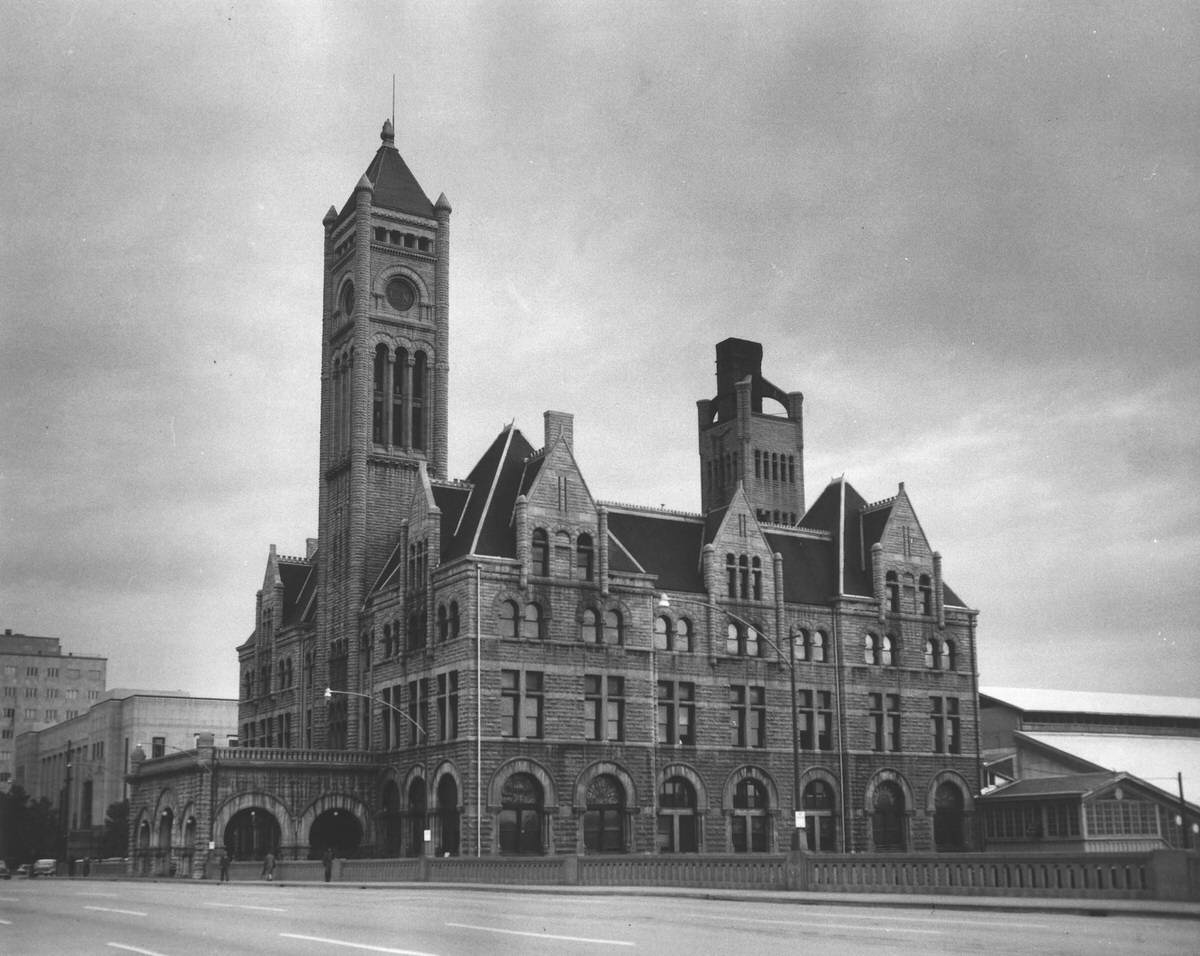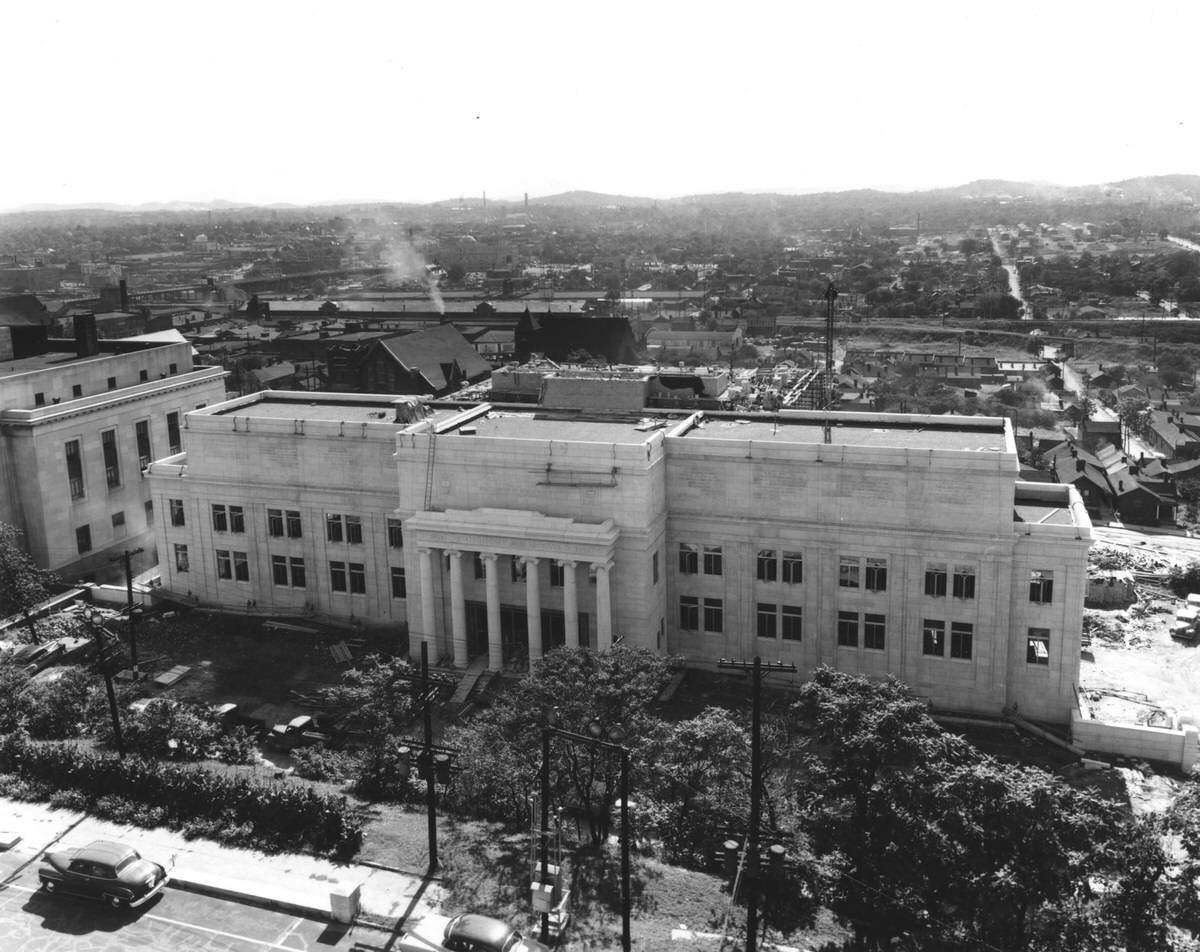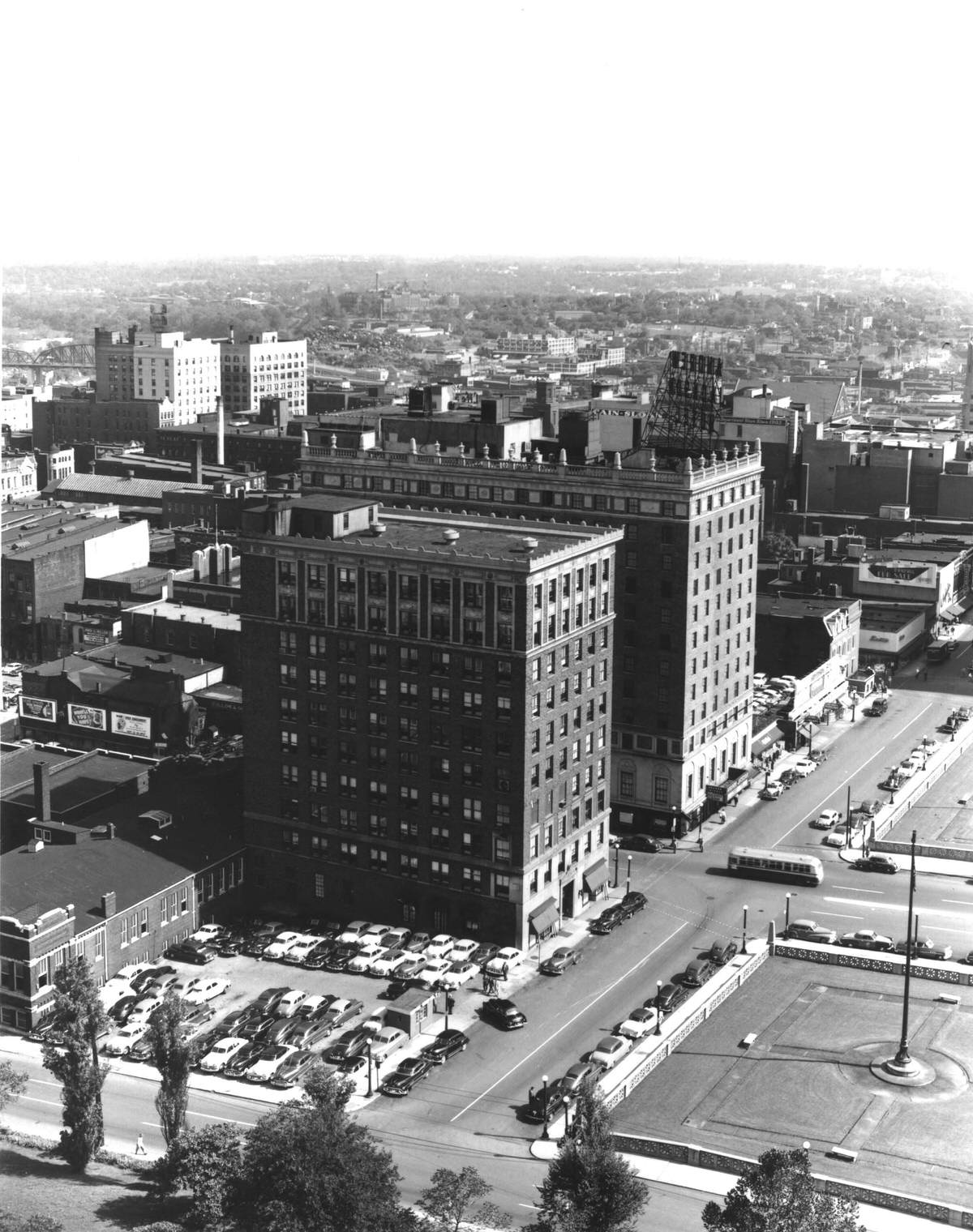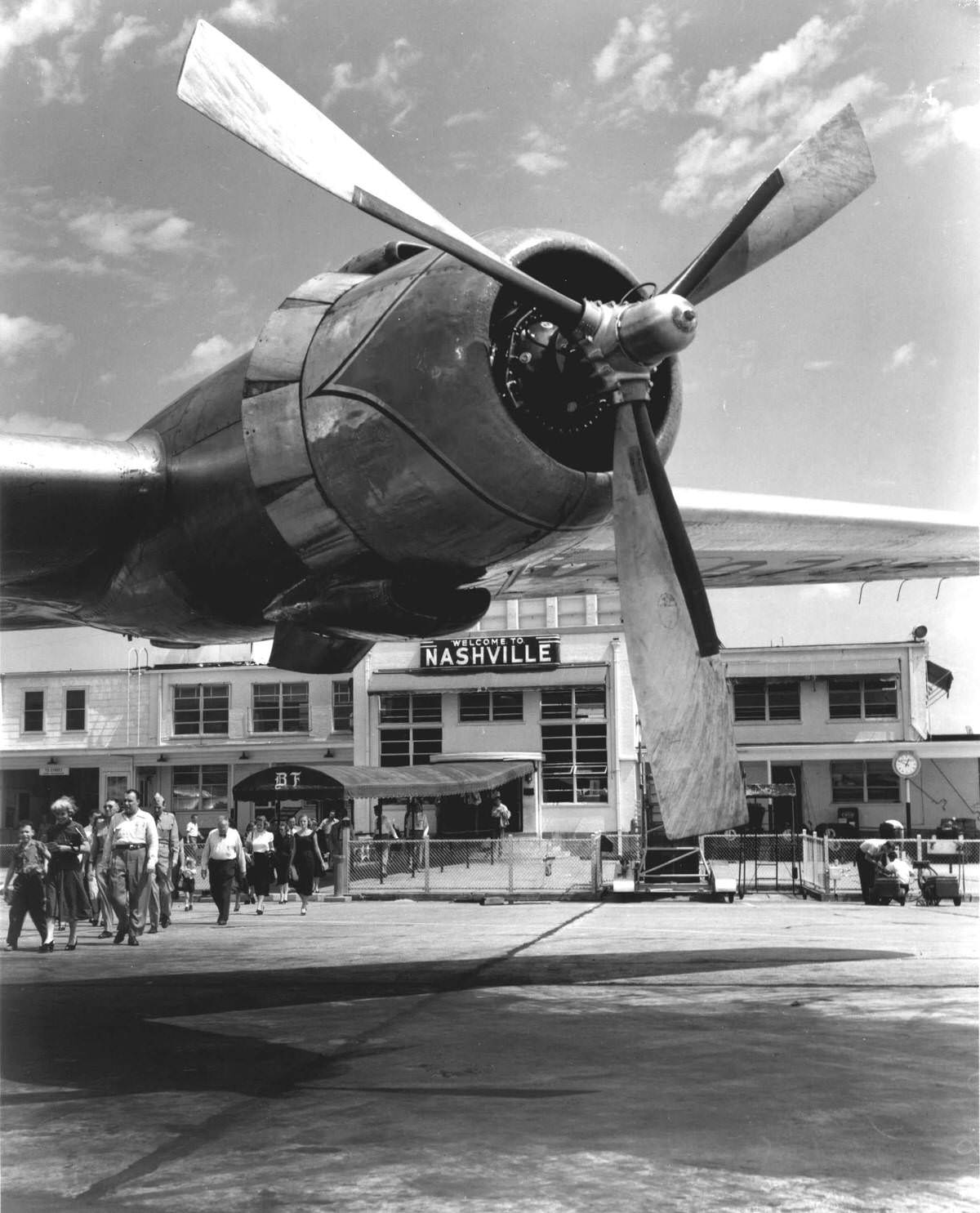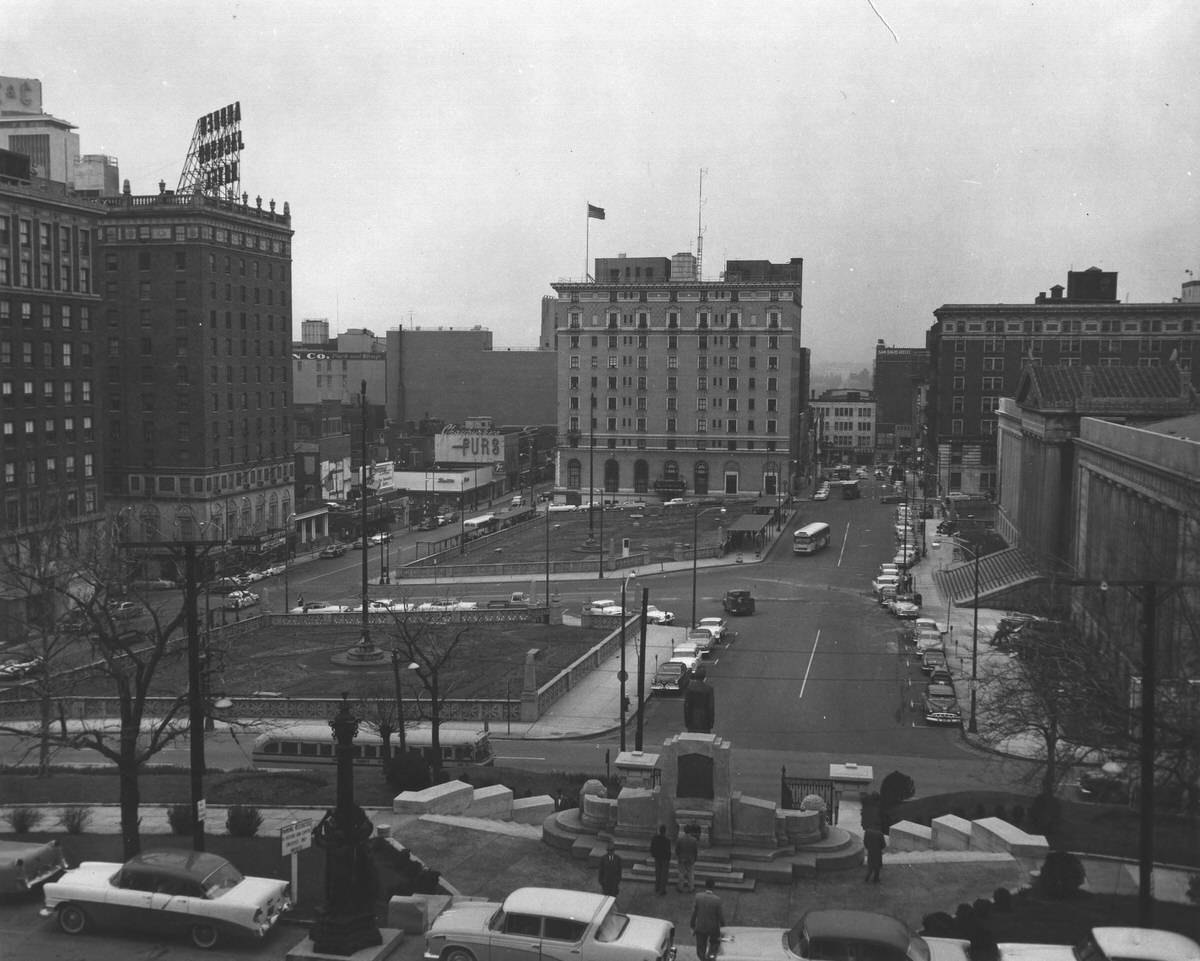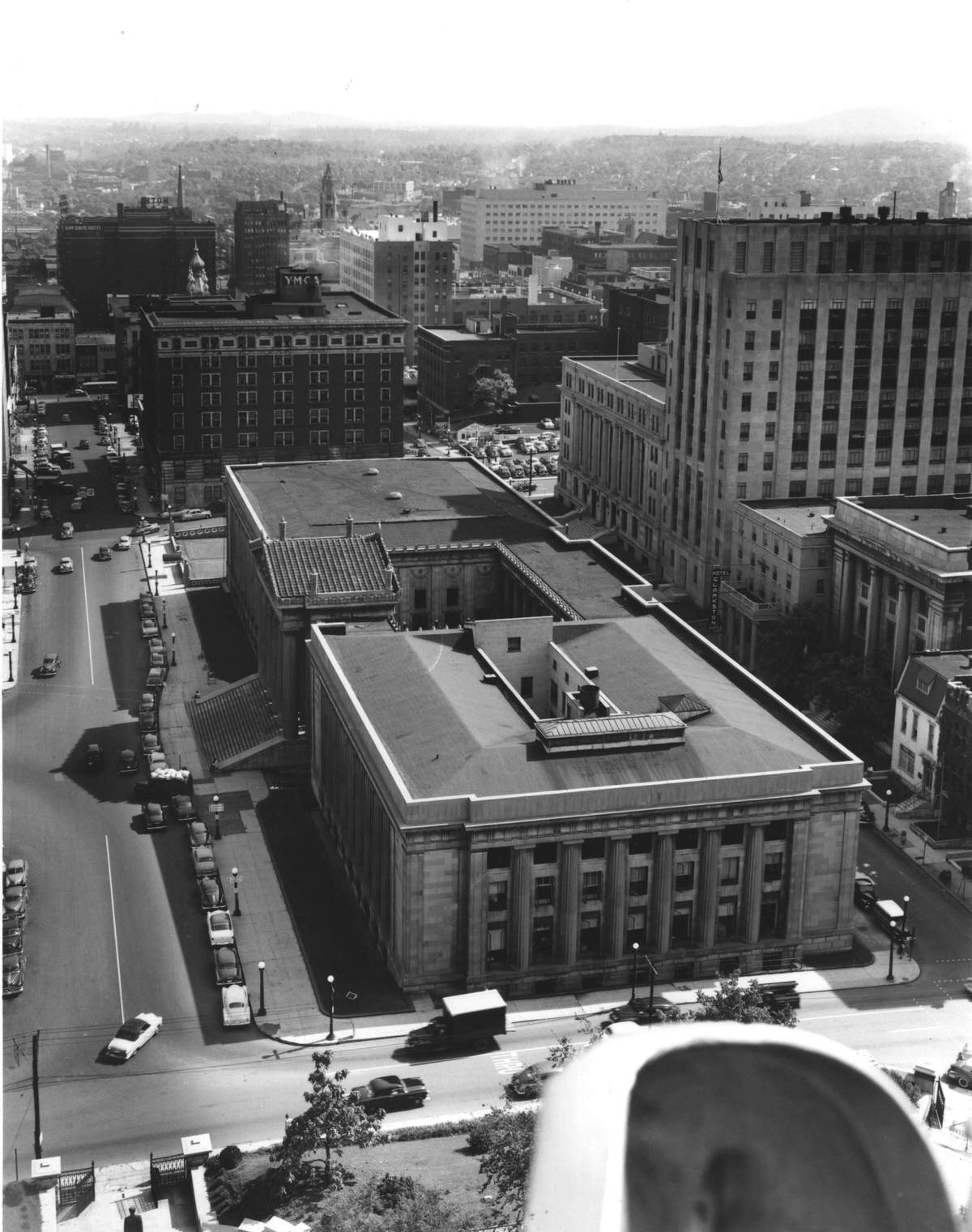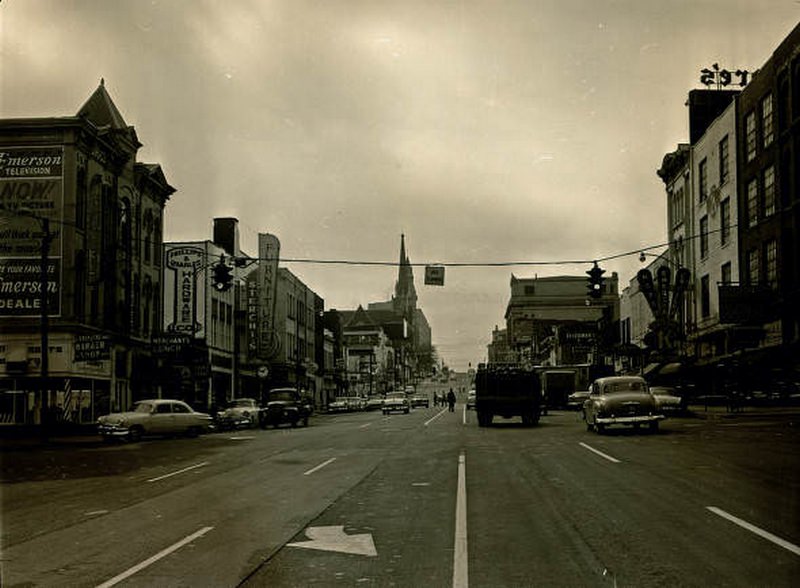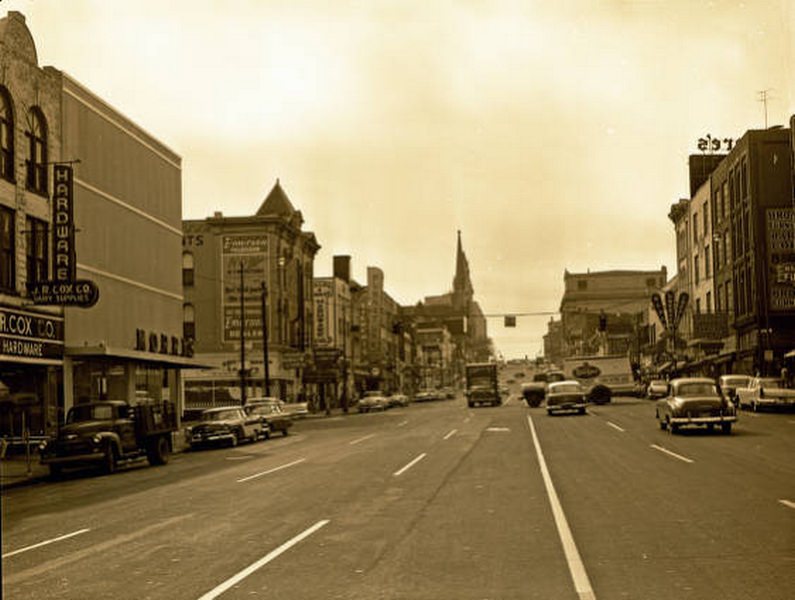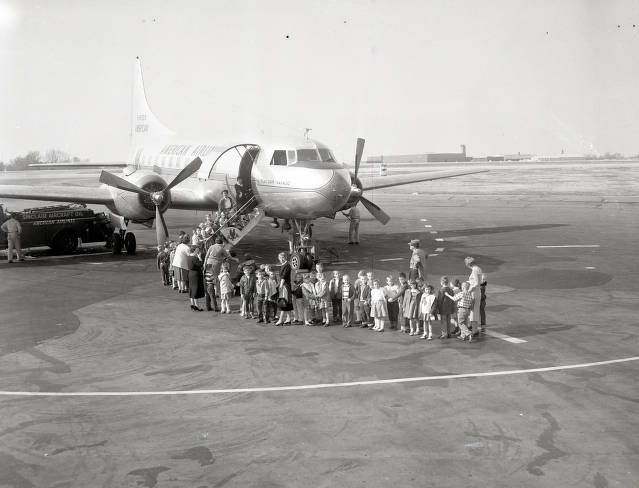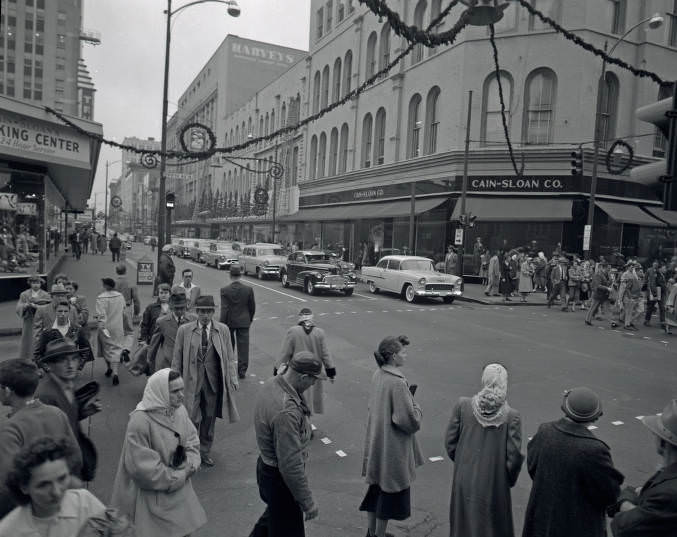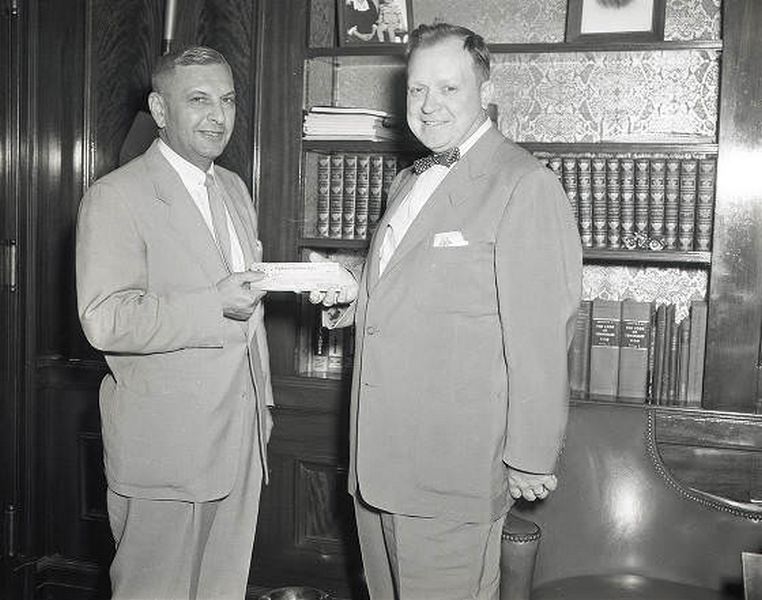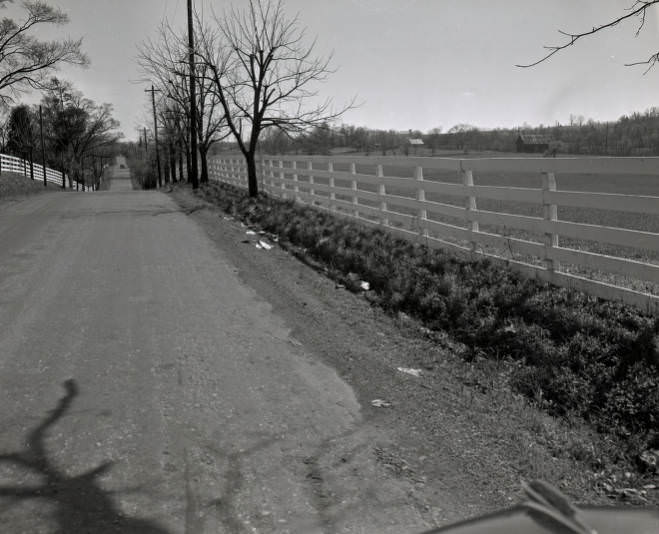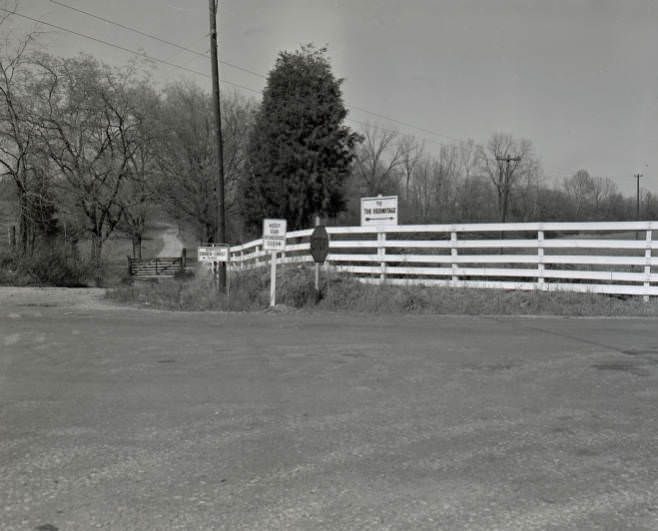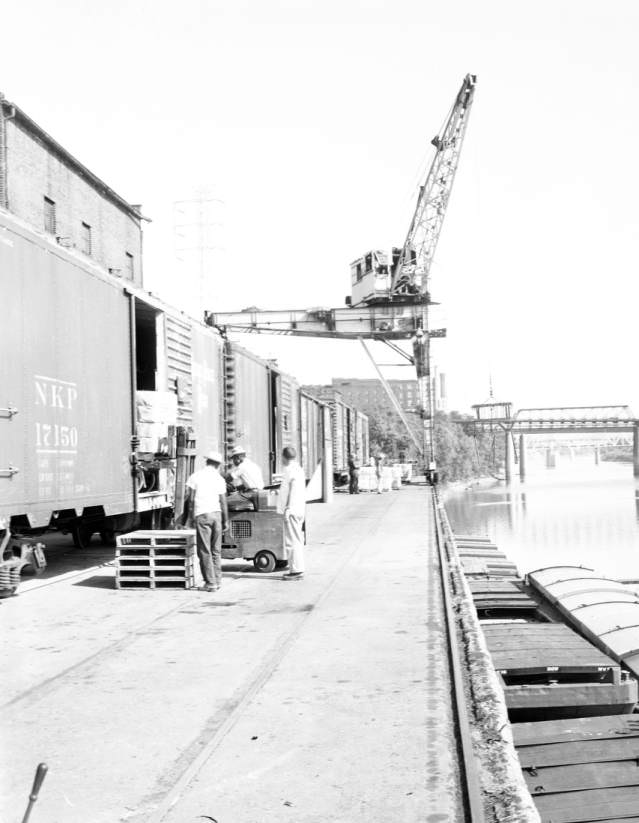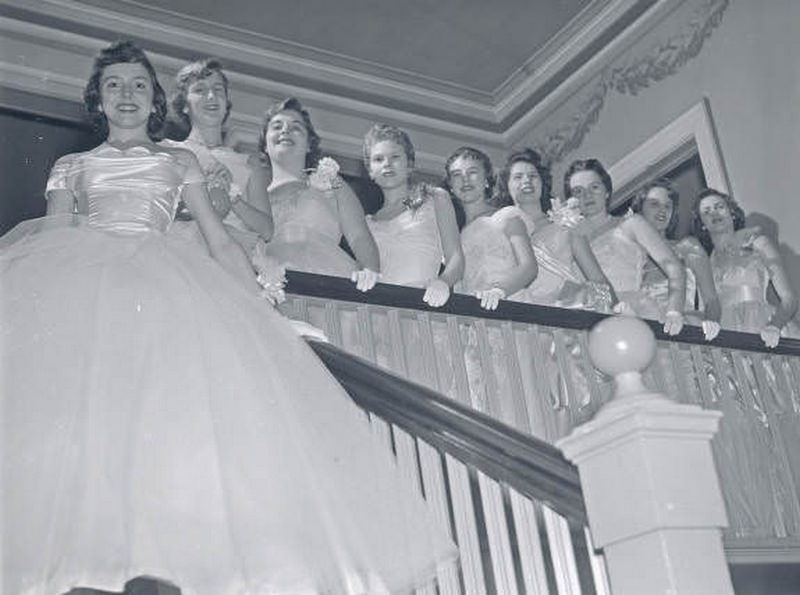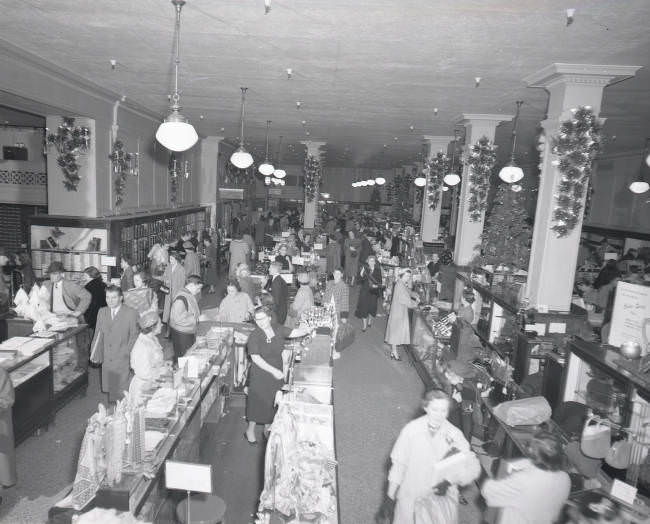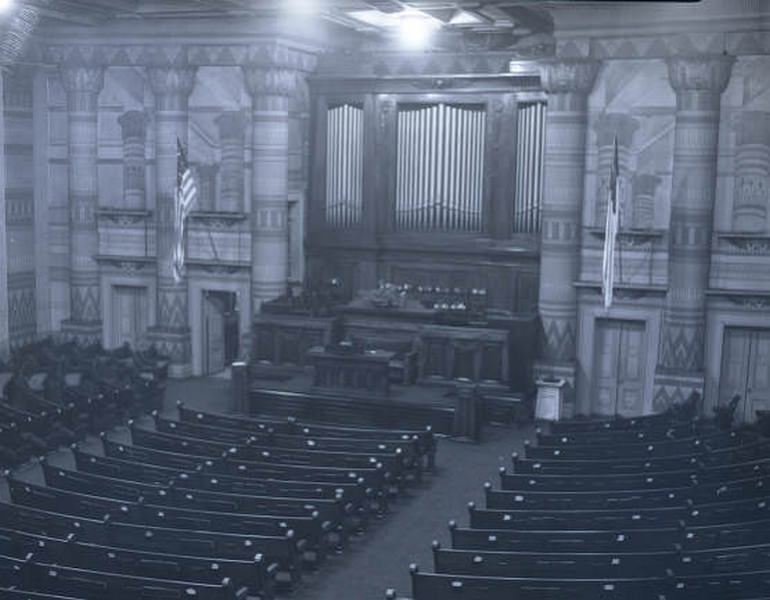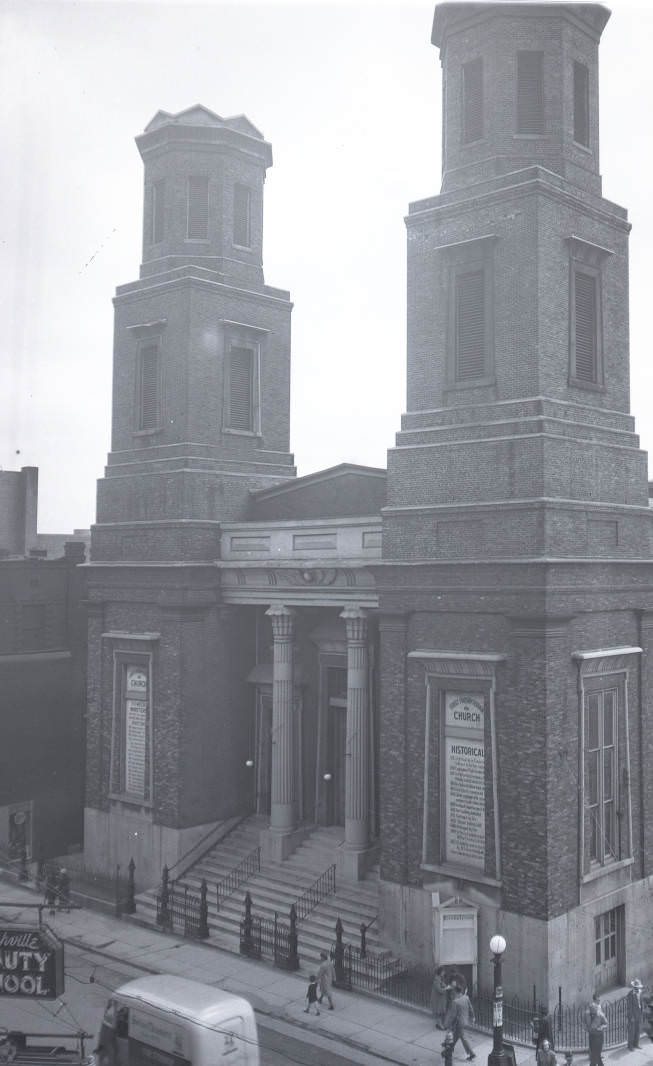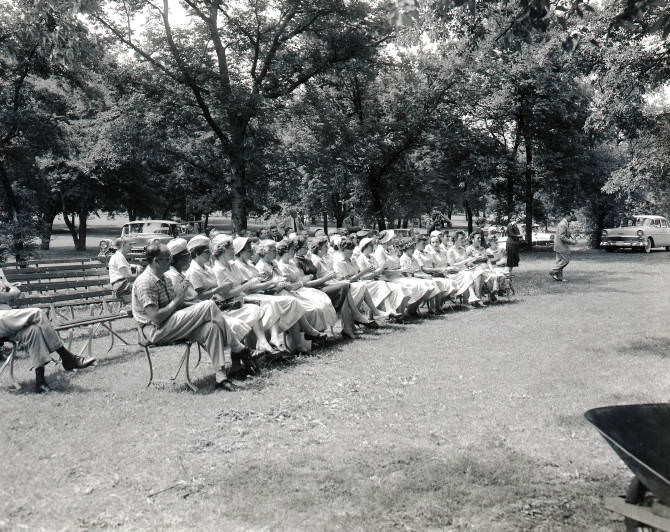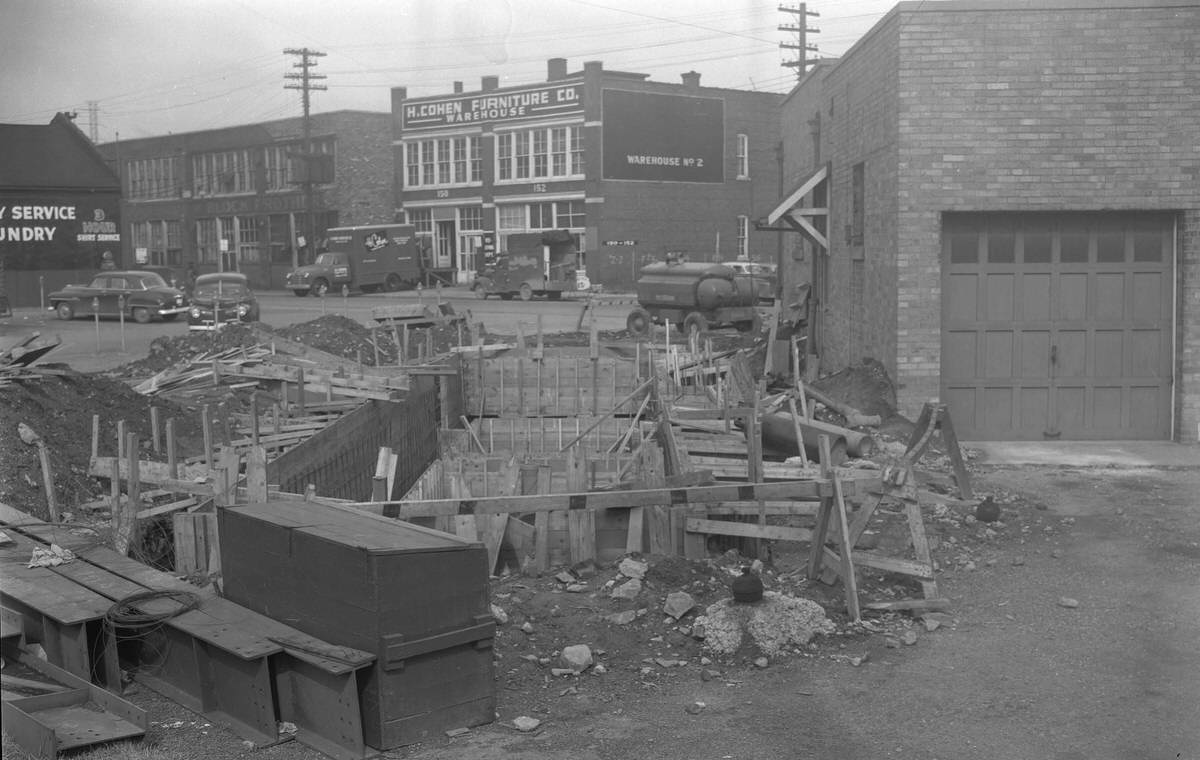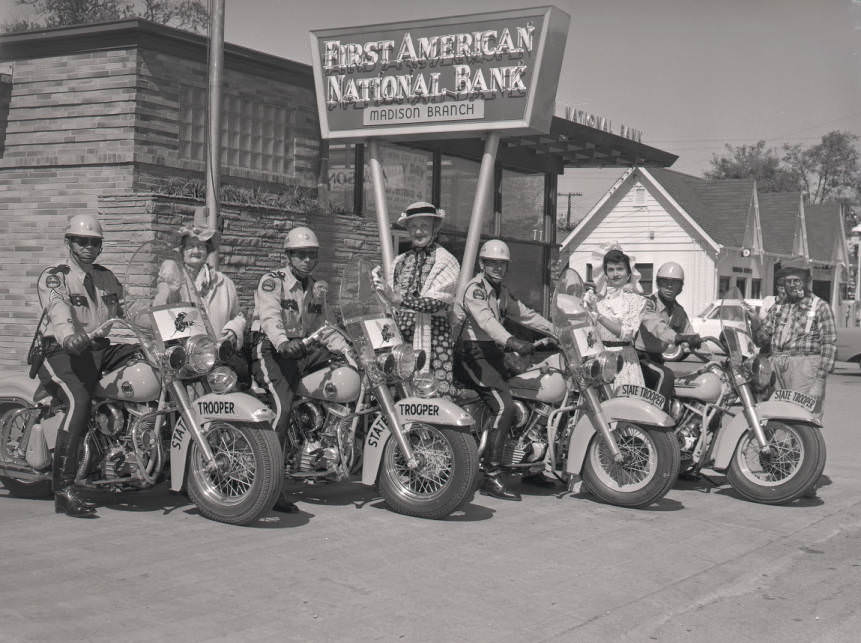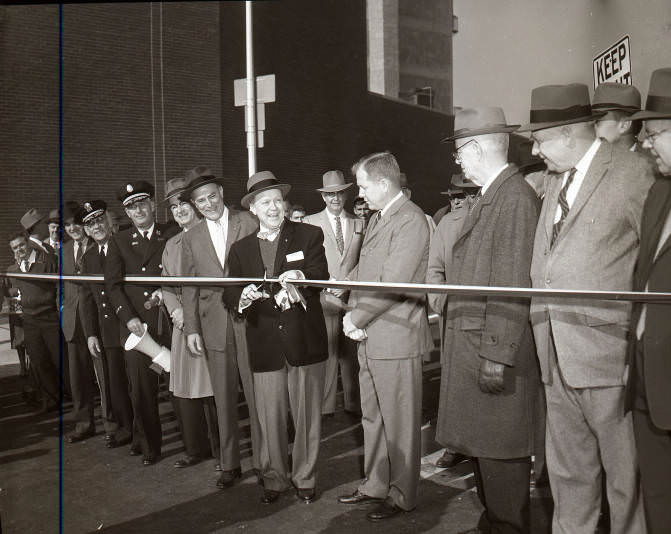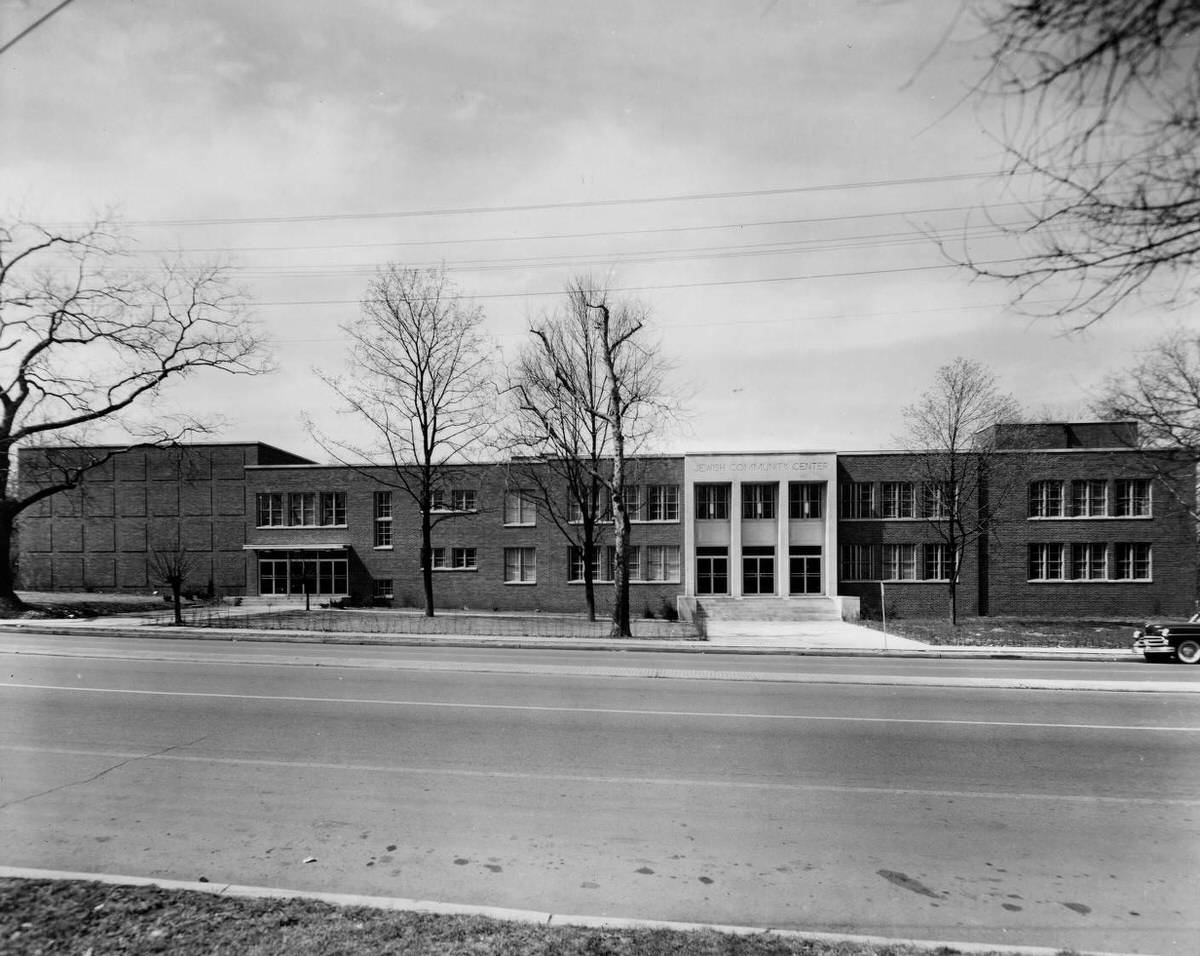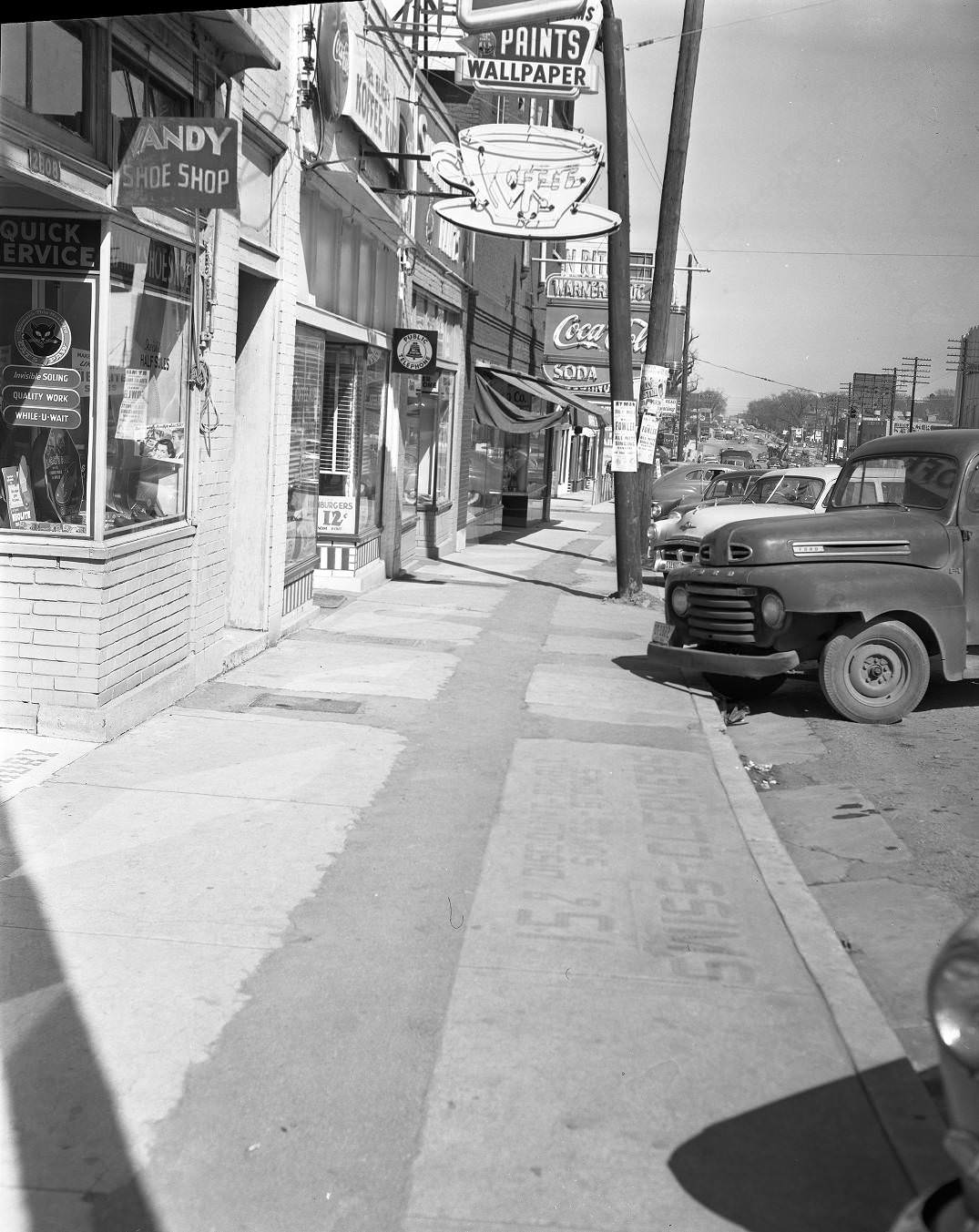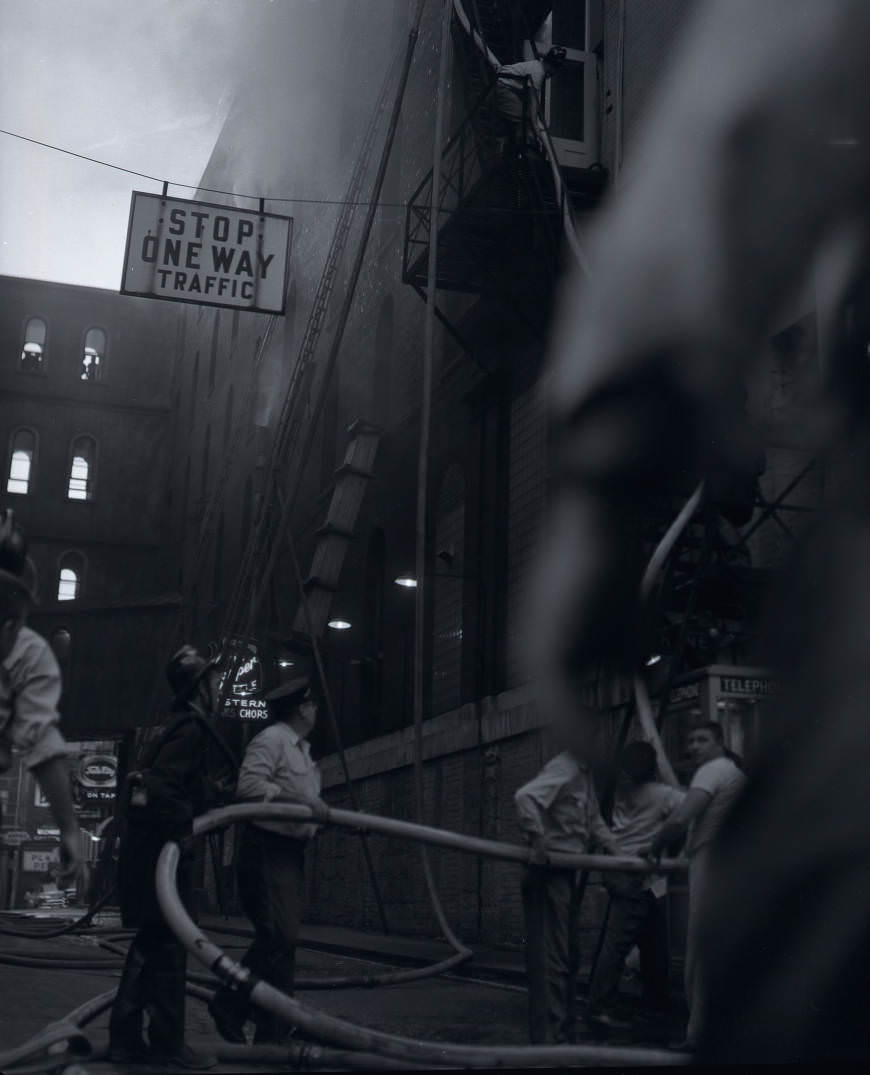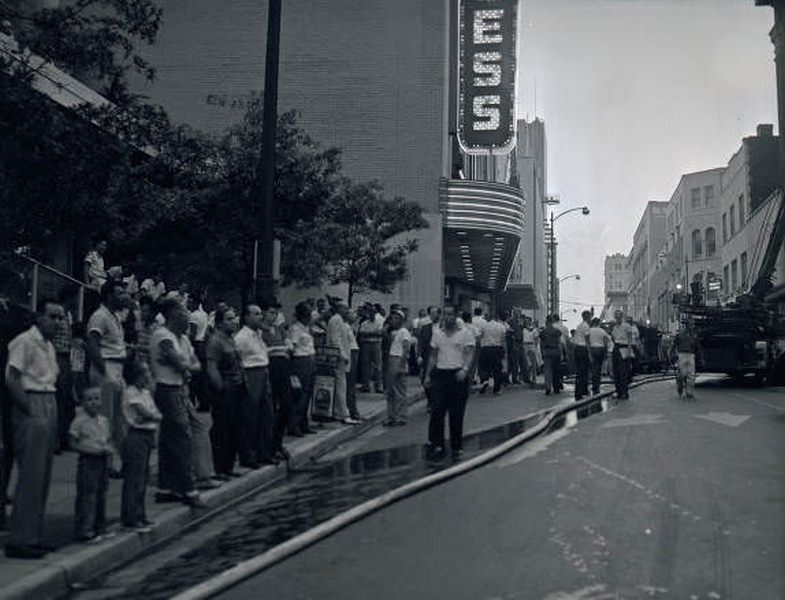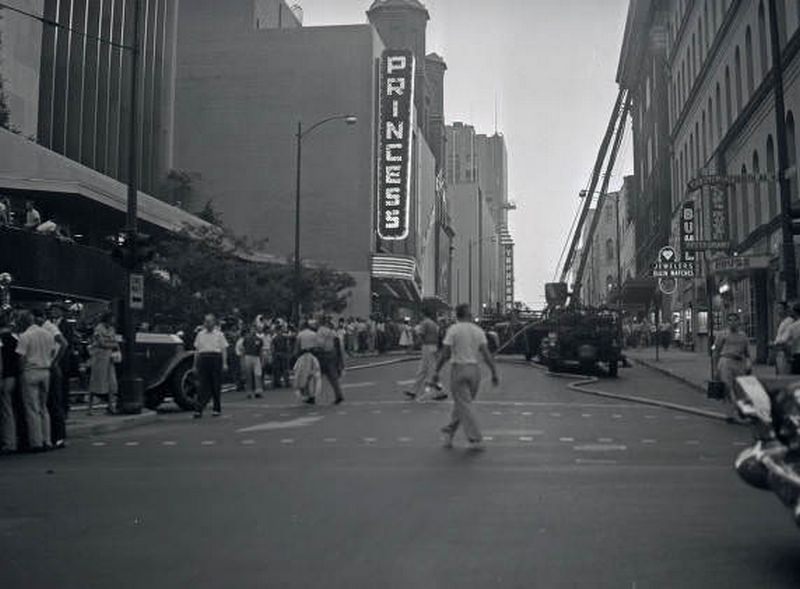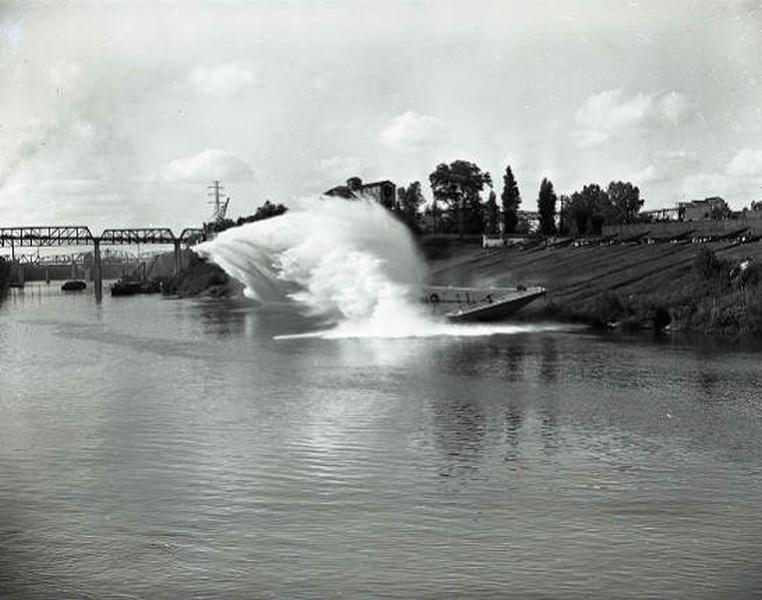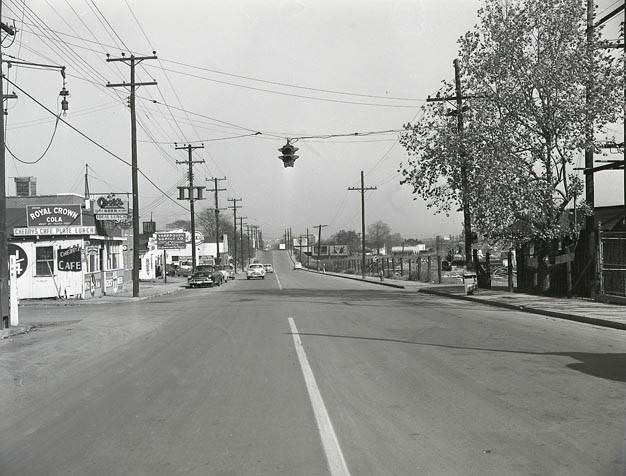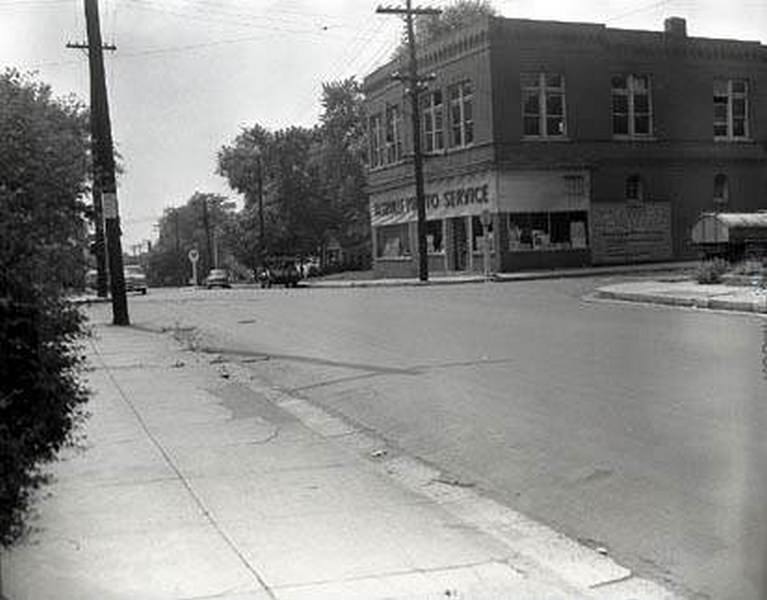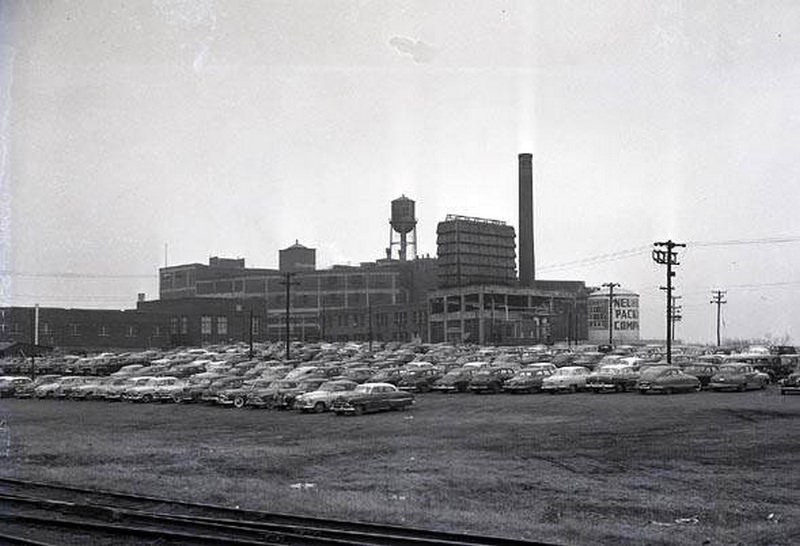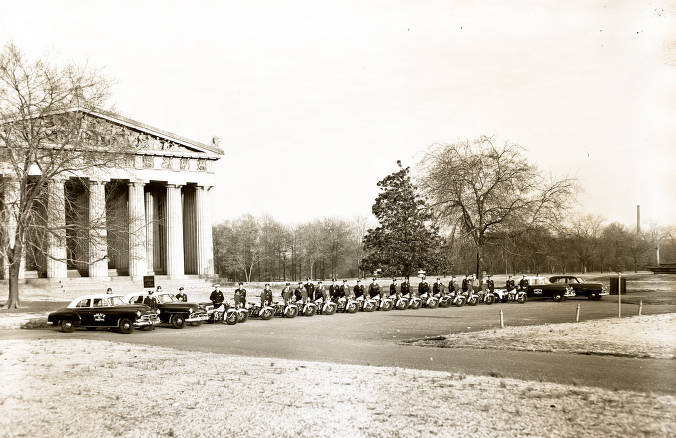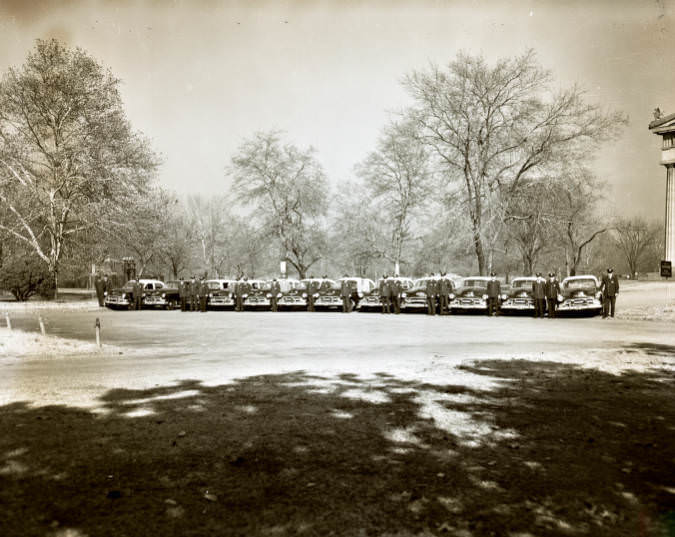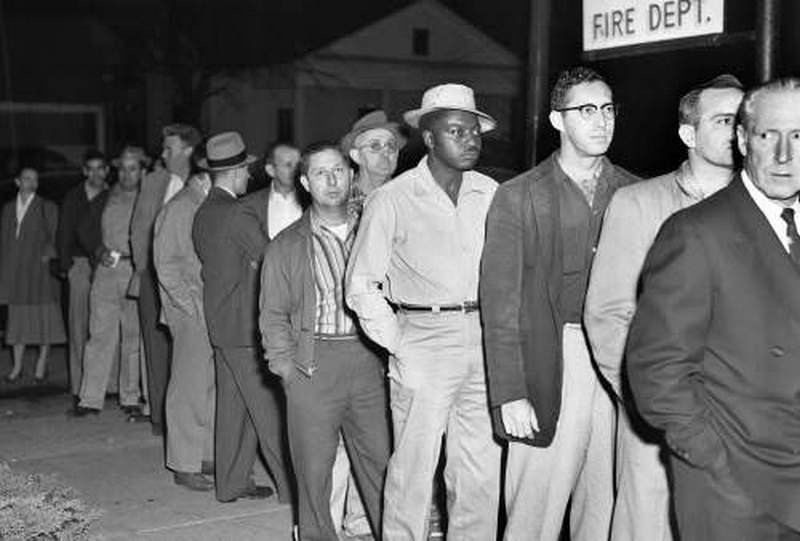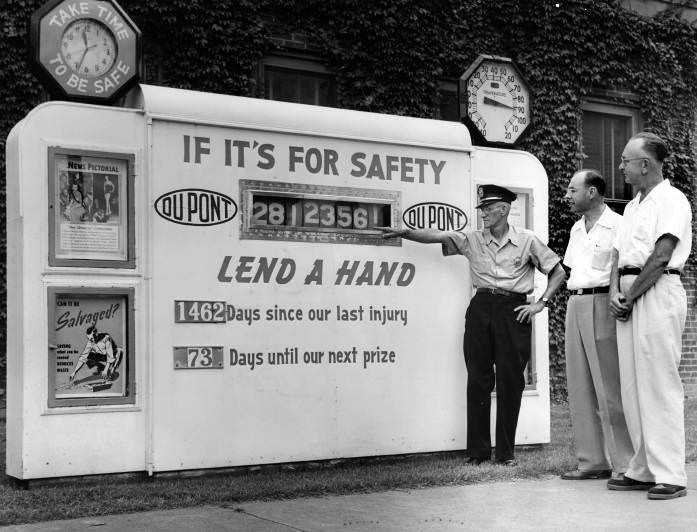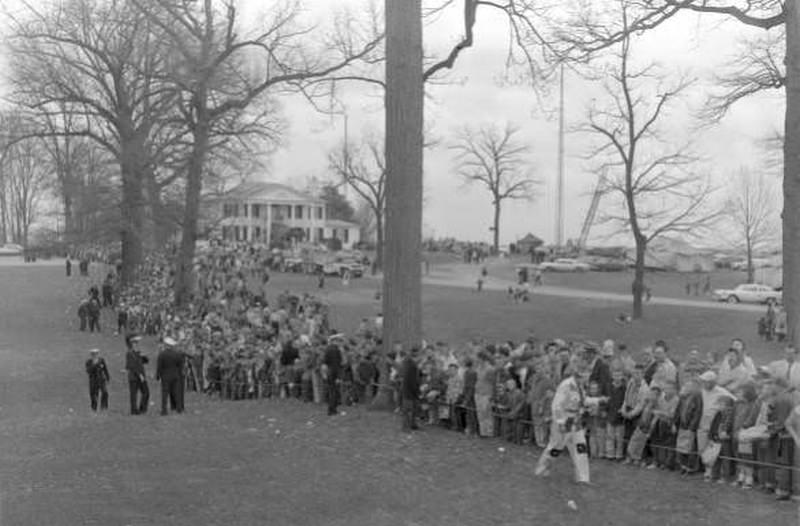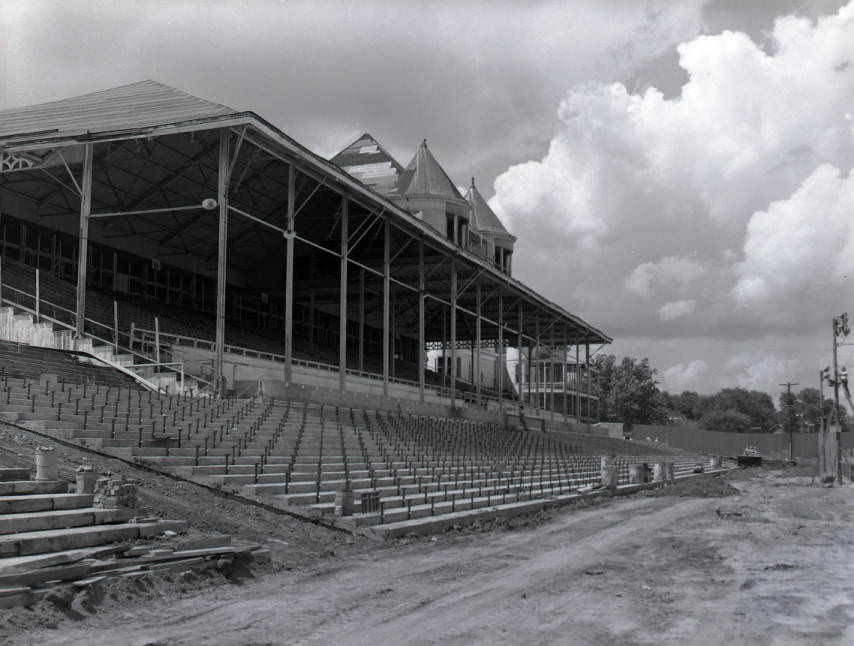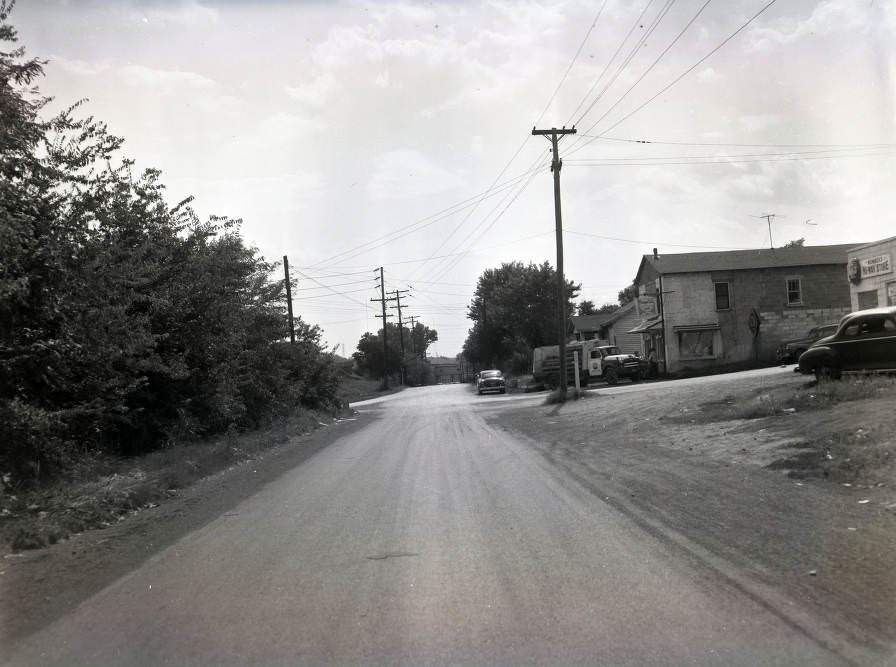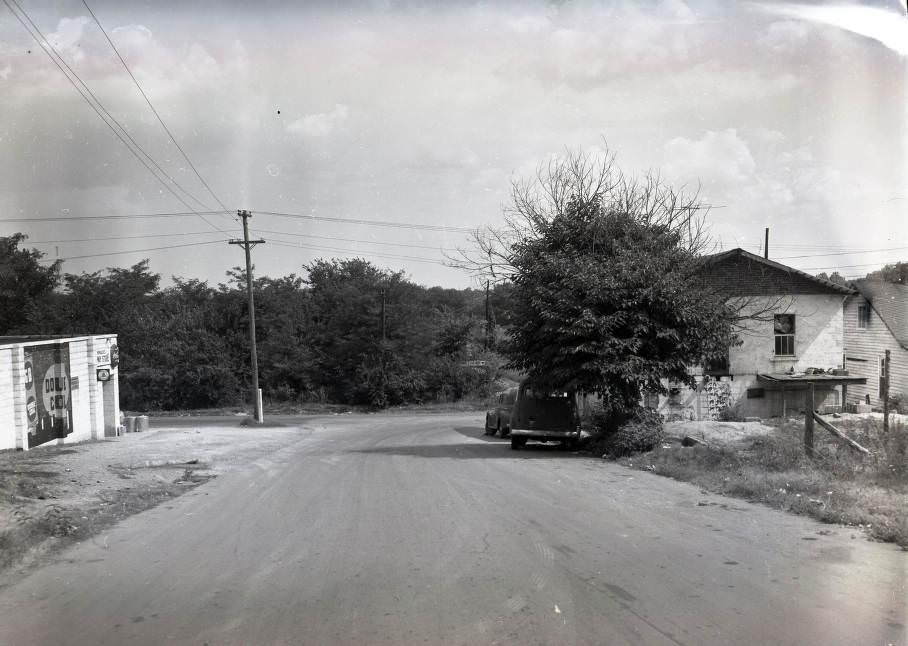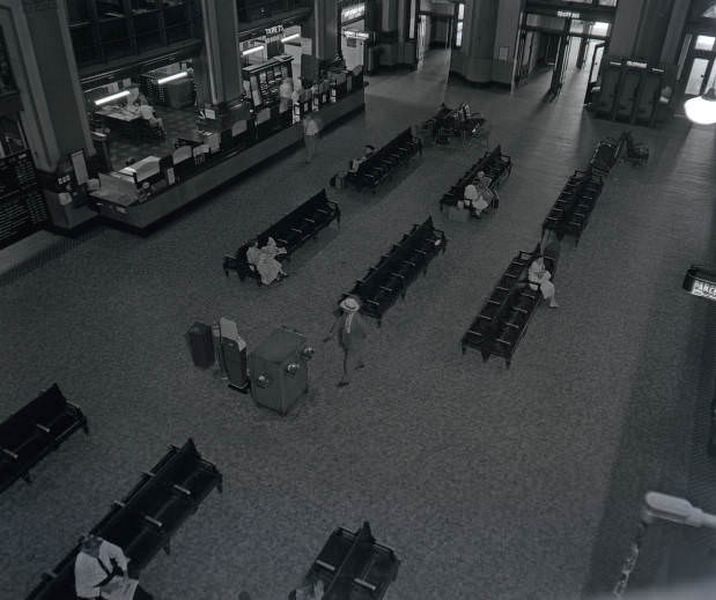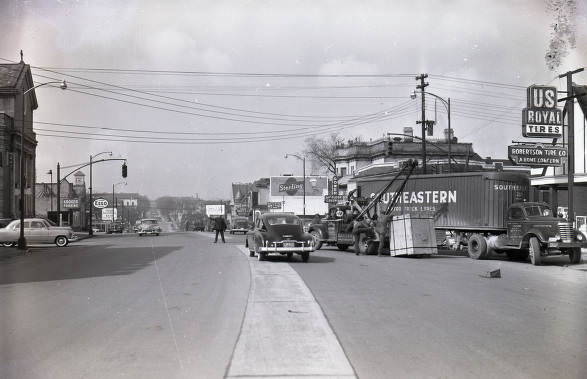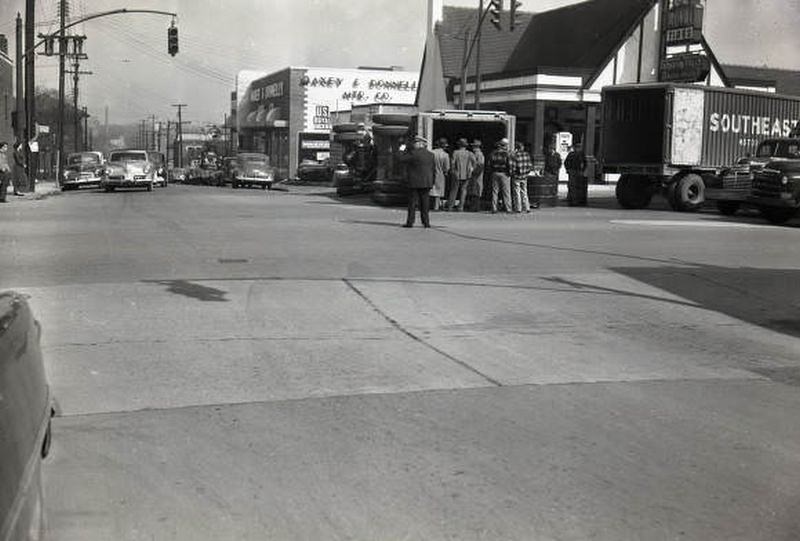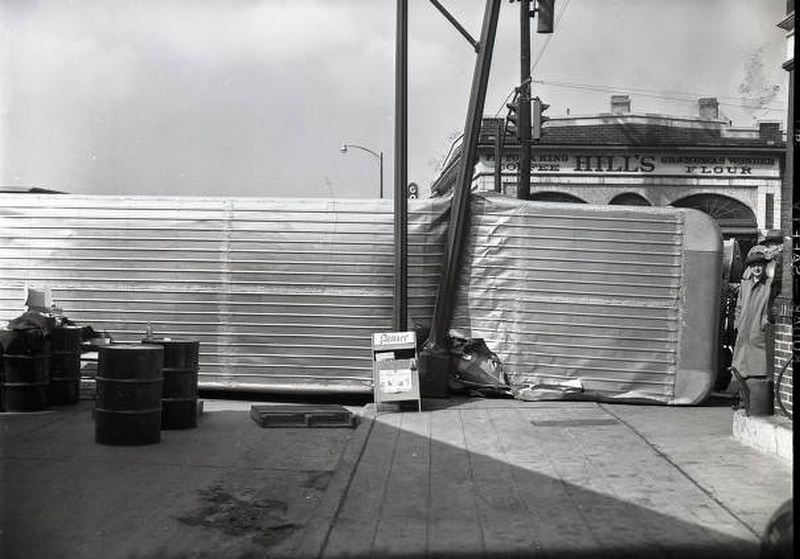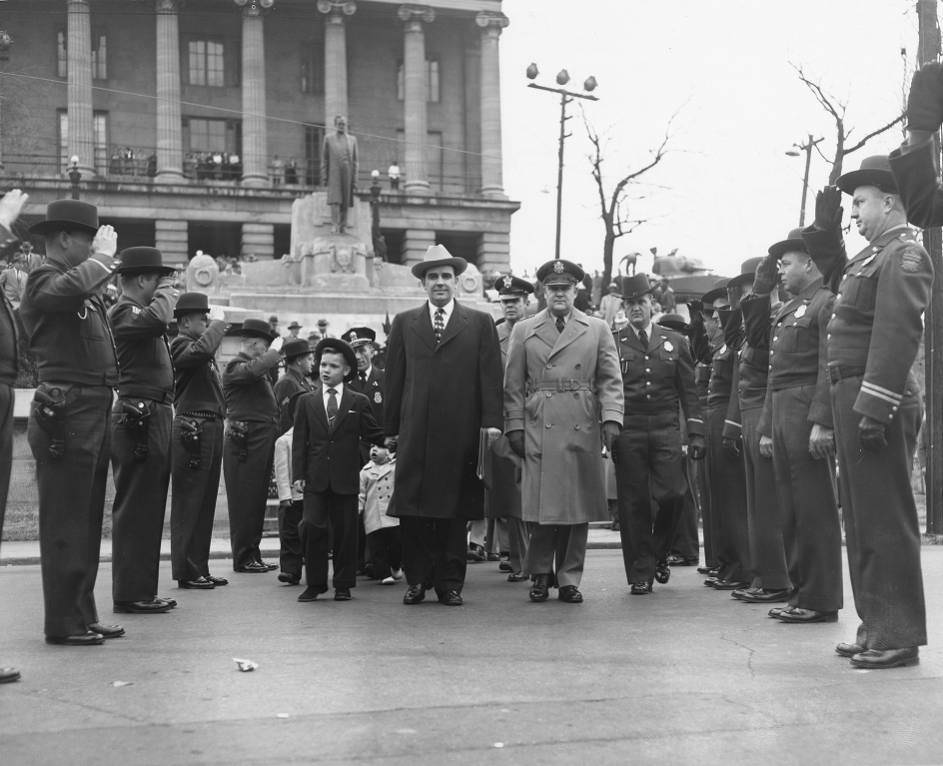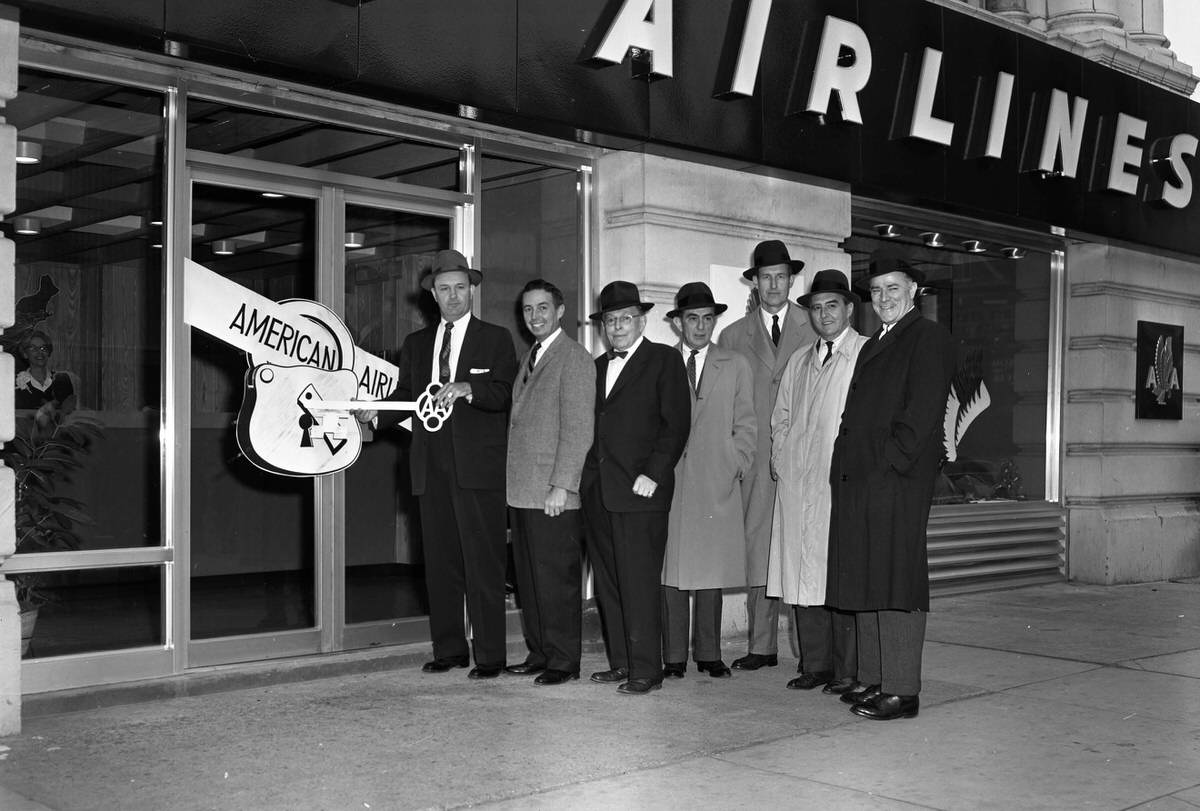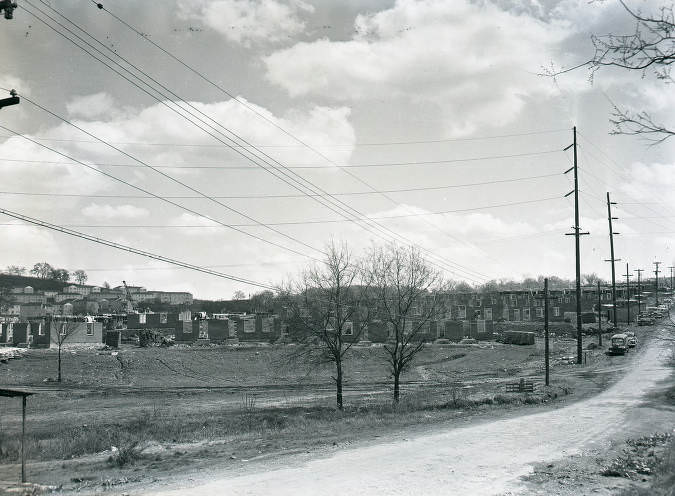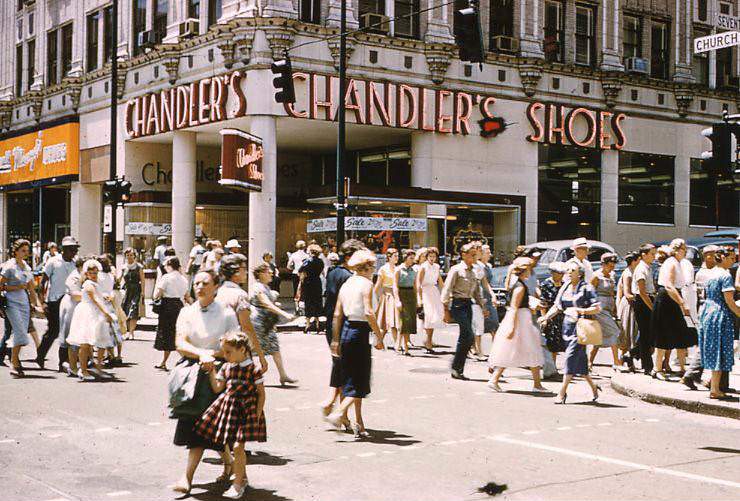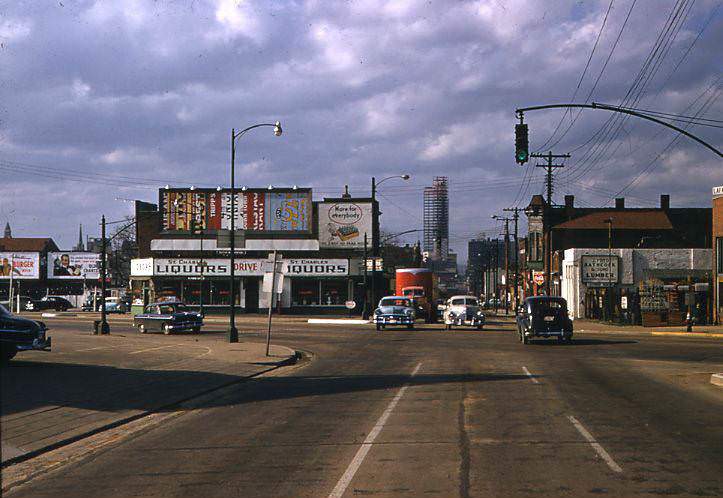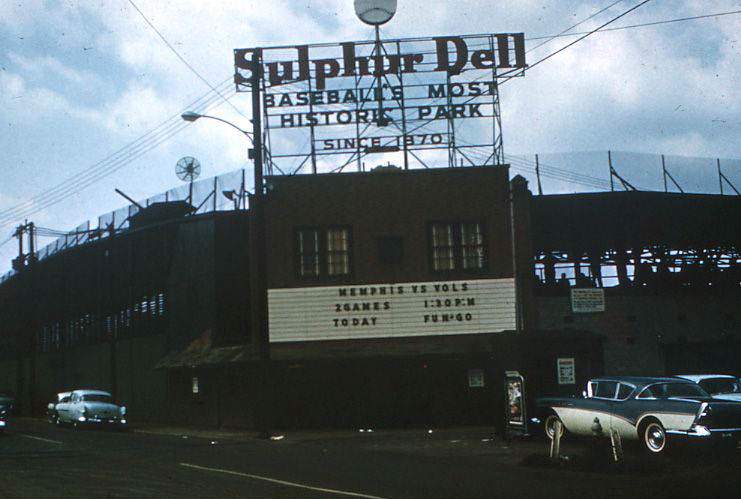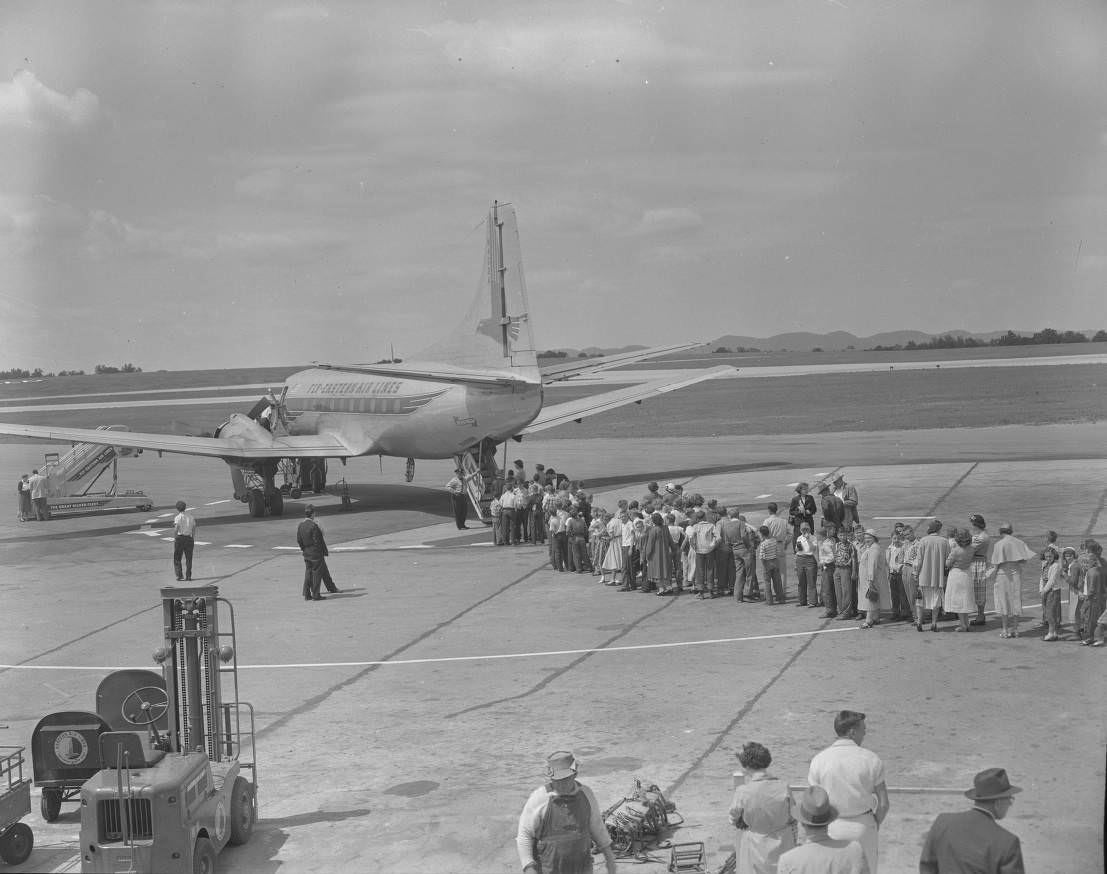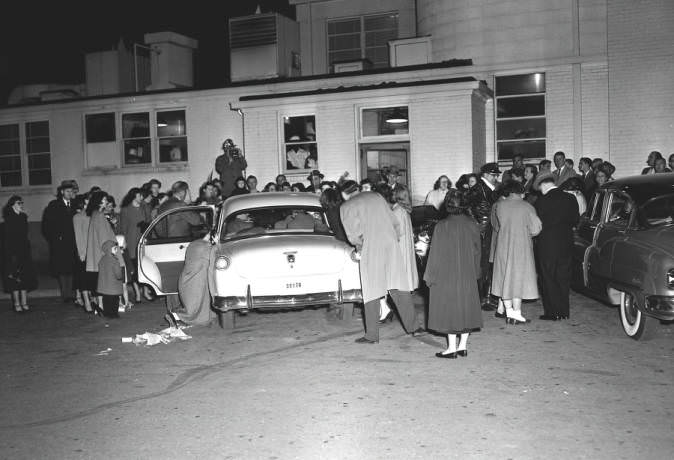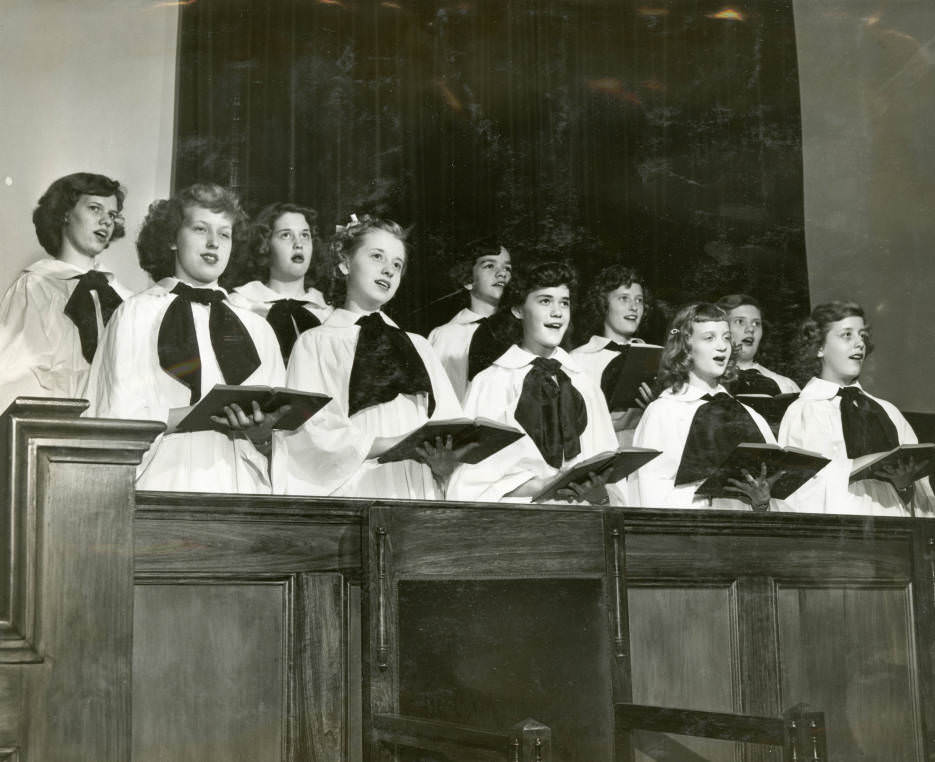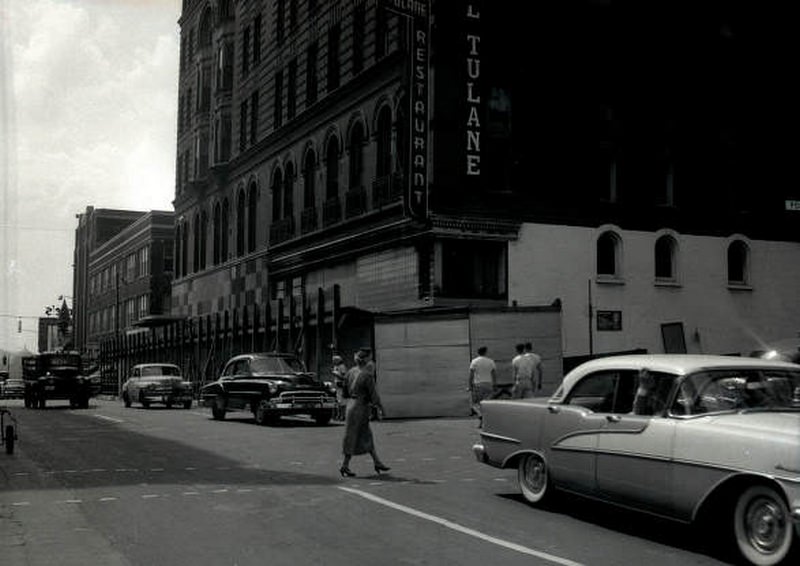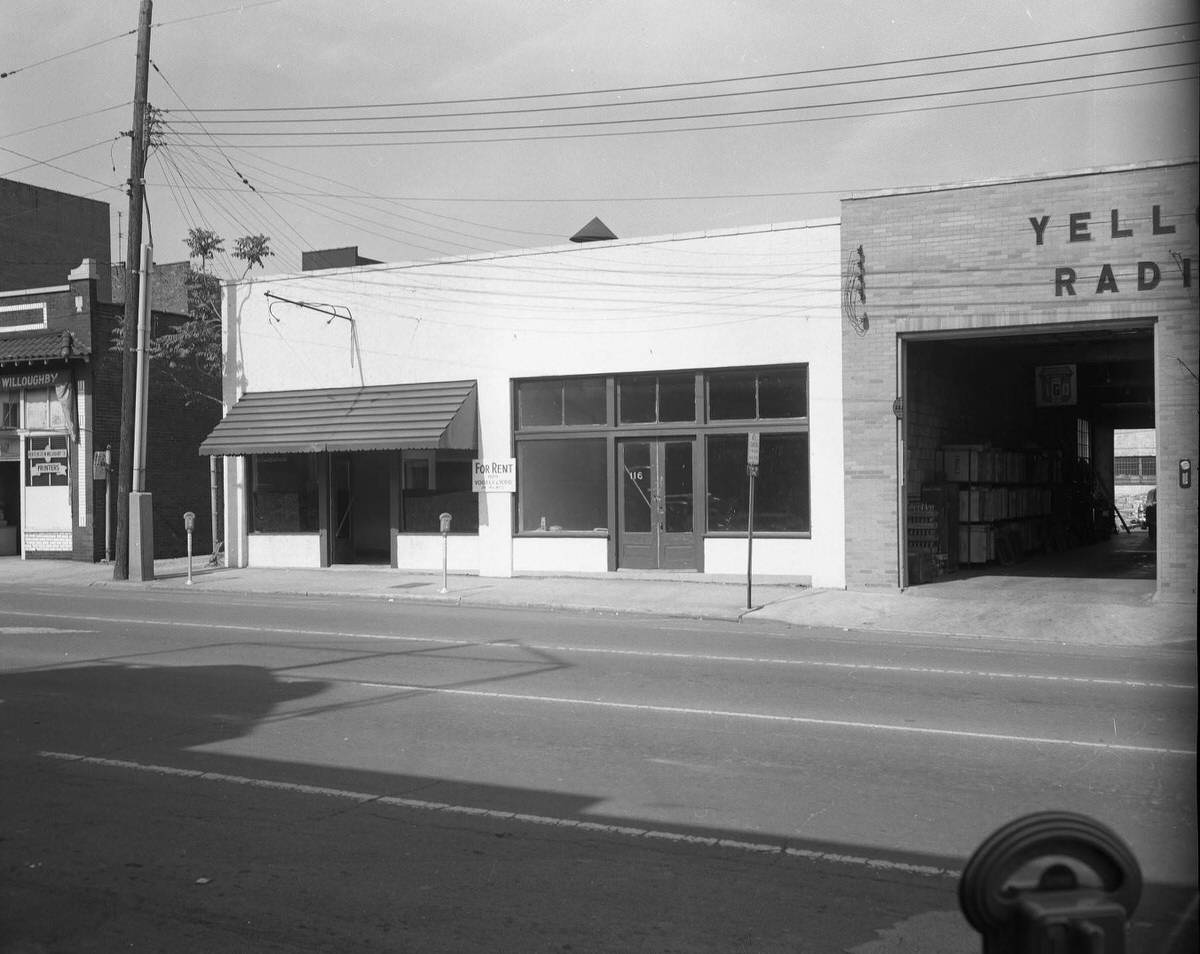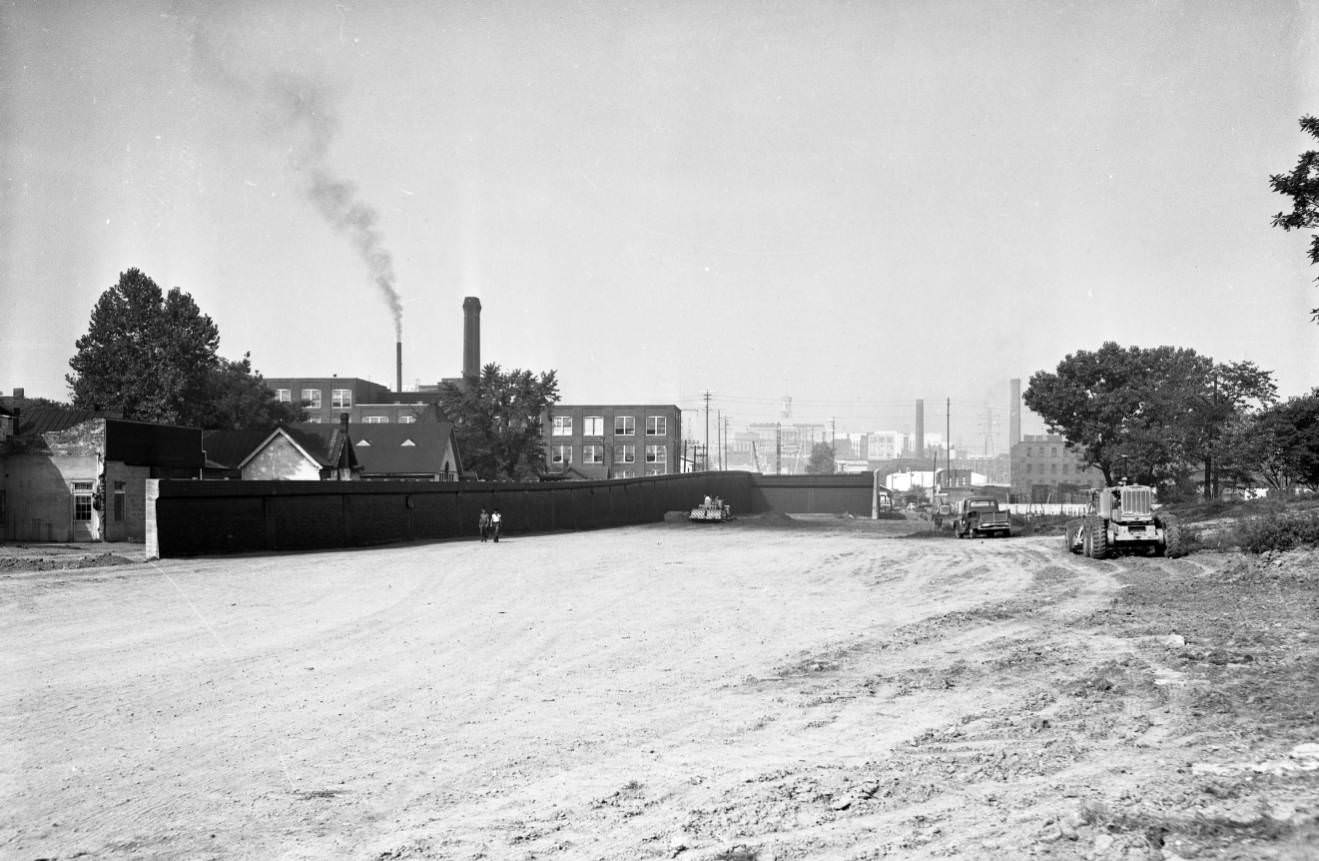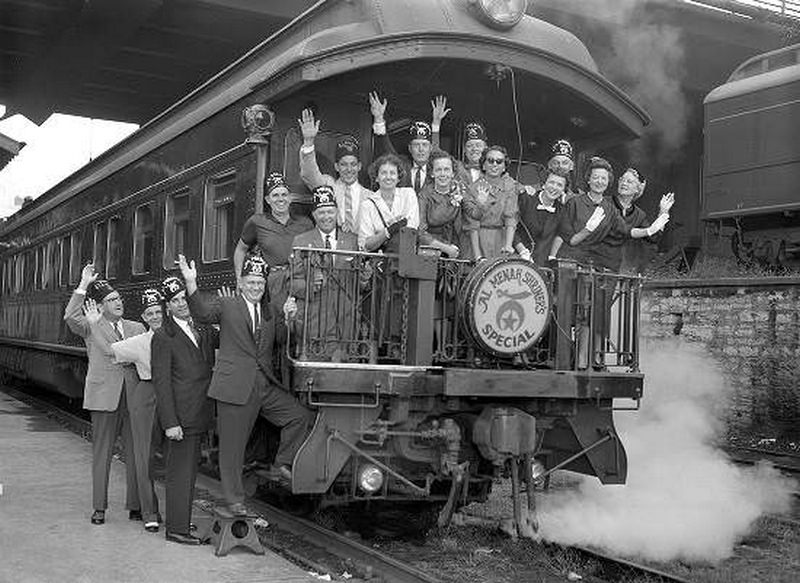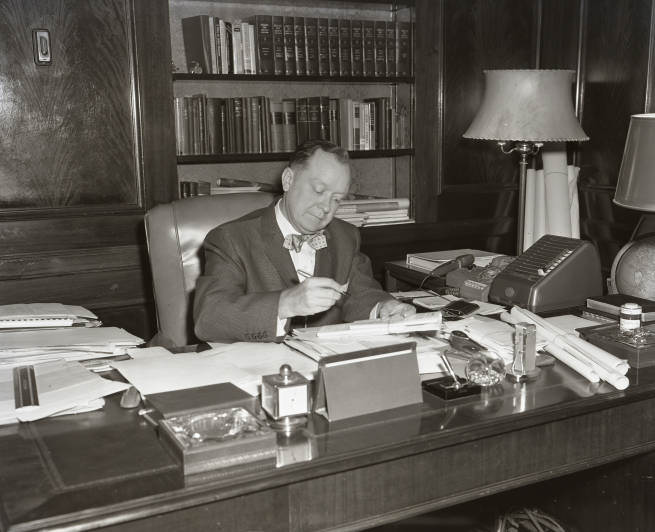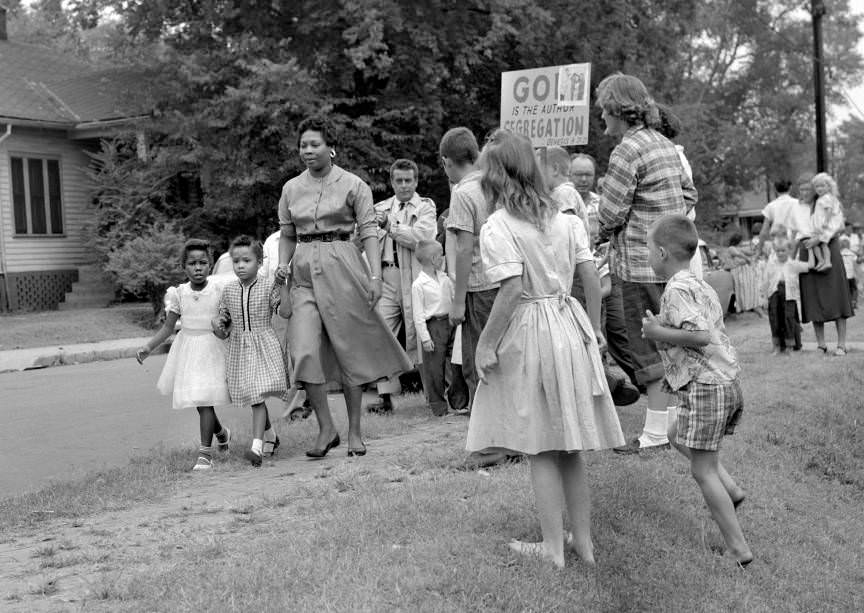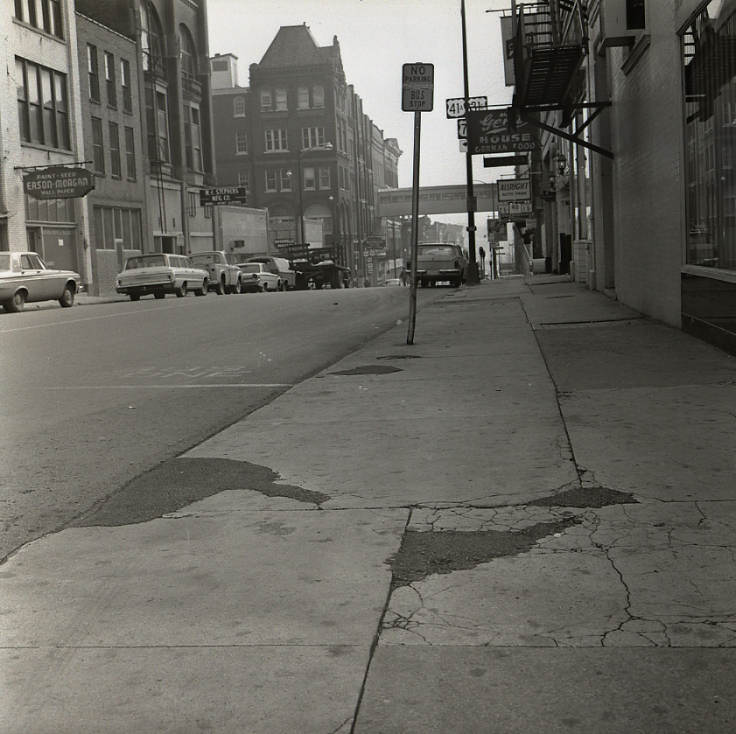Nashville experienced rapid development after World War II, and the population increased by over 4% during the 1950s. The most severe blizzard hit Nashville in its history in the winter of 1951. The power supply to many neighborhoods was cut off when an ice storm produced an inch of sleet and freezing rain from Sunday, January 28 to Tuesday, January 30. On Wednesday, January 31, a blizzard swept through the city, with winds gusting over 50 mph and visibility down to zero. Snowfall in the city was eight inches, and commutes around the city were nearly impossible.
In the late-1950s, Nashville was the center of the Civil Rights Movement. Dan May proposed the “stair-step” plan for desegregating public schools in 1957; people protested integration. The tallest commercial building, the L&C tower, was built in the late 1950s which is now surrounded by taller buildings; however, its significance to downtown Nashville has not diminished. Several other famous buildings and landmarks were built during the 1950s, including the Broadway Bridge, Tennessee Theater, Harpeth Hall School, Sixth Avenue, Downtown Intersection, and many more.
Below are some amazing historical photos that offer a glimpse into the 1950s Nashville.
#1 The entrance to Percy Warner Park, Nashville, Tennessee, looking north, 1951
#2 Exterior view of Old Mill and Blacksmith shop at Belle Meade Plantation, 1950s
#3 Home at 115 Woodmont Blvd, during the huge Nashville snow of Jan, 1951
#4 Bijou Theatre, construction in front of theater, 1957
#5 Belle Meade Mansion front gate entrance and drive, 1950s
#6 Airport radar at Berry Field, 1952
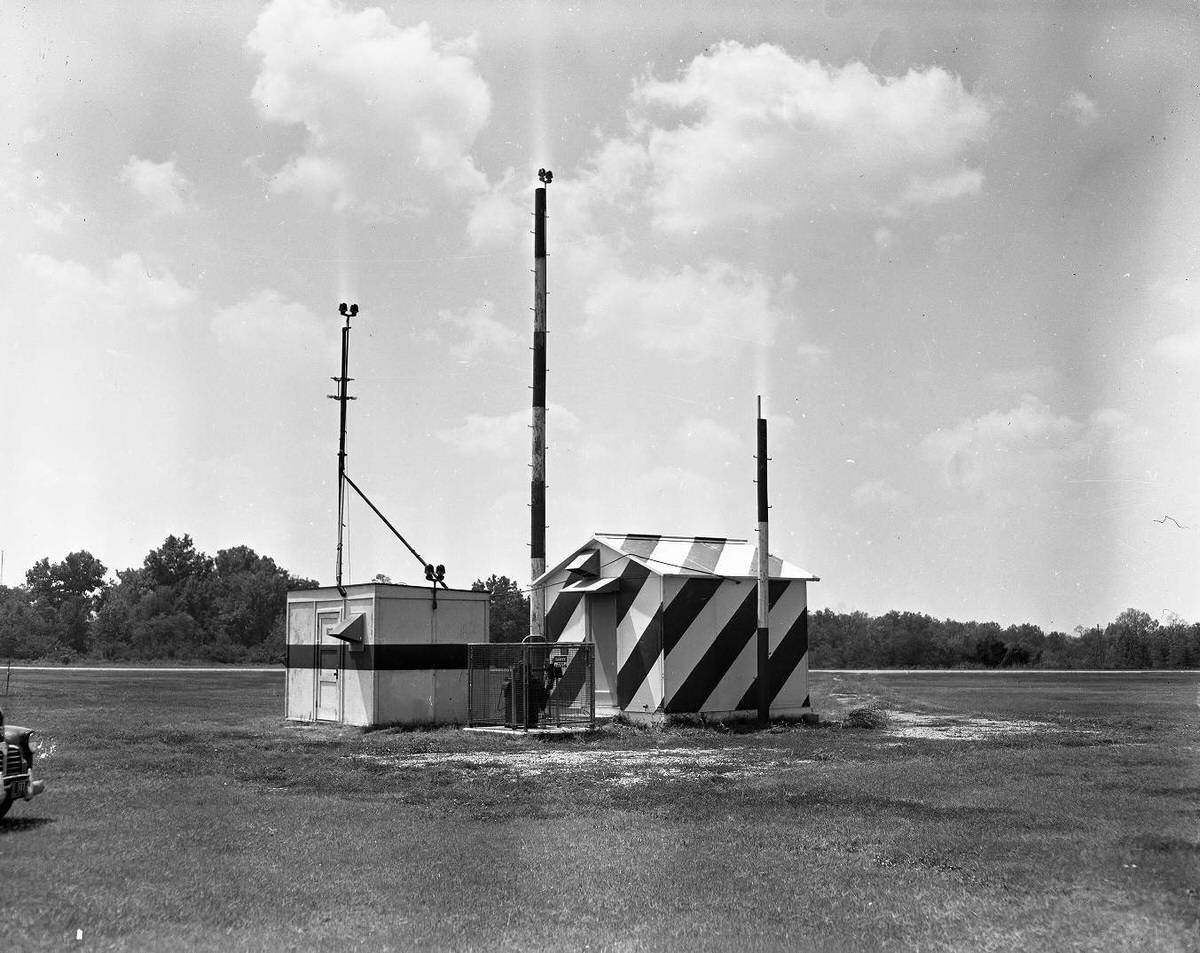
Nashville's airport officially opened in 1937 as Berry Field, in honor of Colonel Harry S. Berry, the state administrator of the Works Progress Administrator, or WPA. Berry Field became the military base for the 4th Ferrying Command during World War II and was returned to the city when the war ended.
The airport’s name was officially changed to Nashville International Airport in 1988, but the original three-letters BNA, which stands for Berry Field Nashville, remains.
#7 Nashville Electric Service Company, 1954
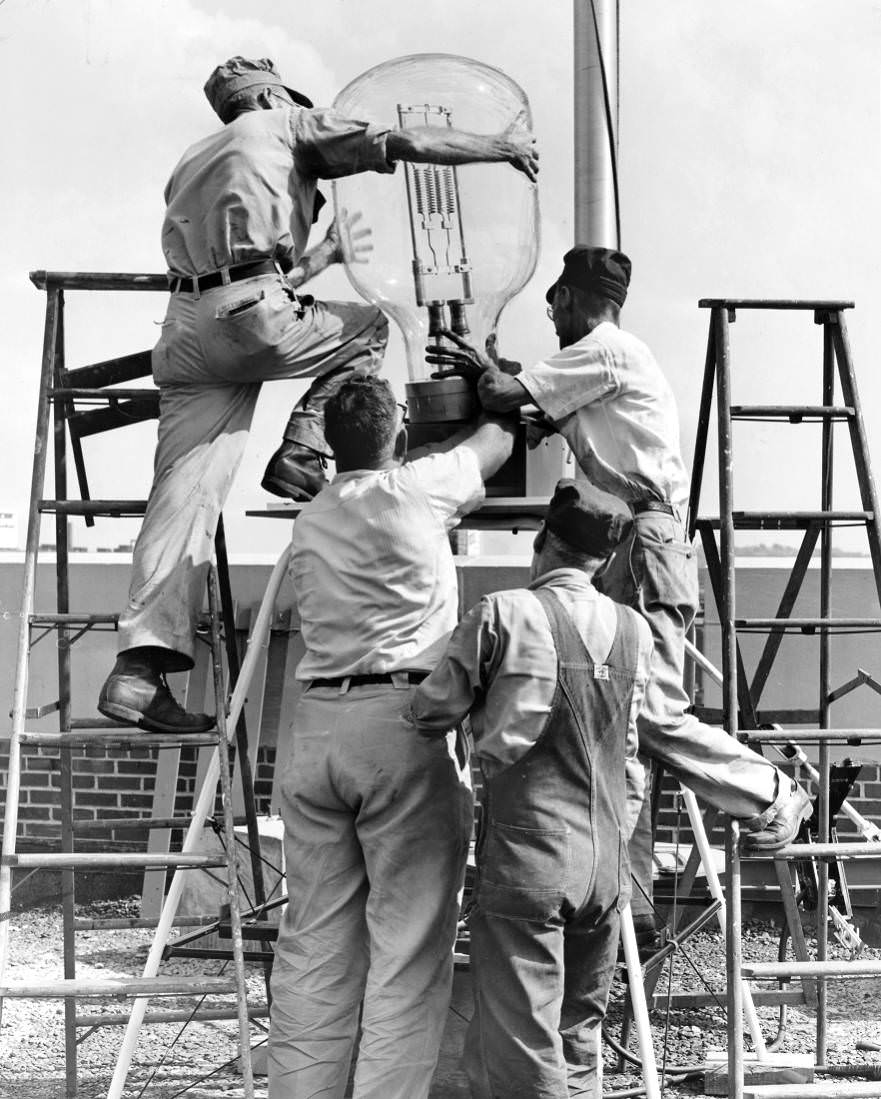
A photograph of workmen installing a 75,000-watt bulb on the roof of the Electric Center Building, Nashville, Tennessee, for a four-day celebration of the 15th anniversary of TVA electric power in Nashville and the diamond jubilee of electric light. The then largest light bulb in the world was displayed through cooperation of General Electric Company. The light was visible from a ground distance of two to three miles or more. Copies of a brochure commemorating the "15th Anniversary of Nashville Electric Service" were sent to the 105, 000 customers of NES.
#8 Two Nashville Public Library bookmobiles in Centennial Park in front of the Parthenon, 1955
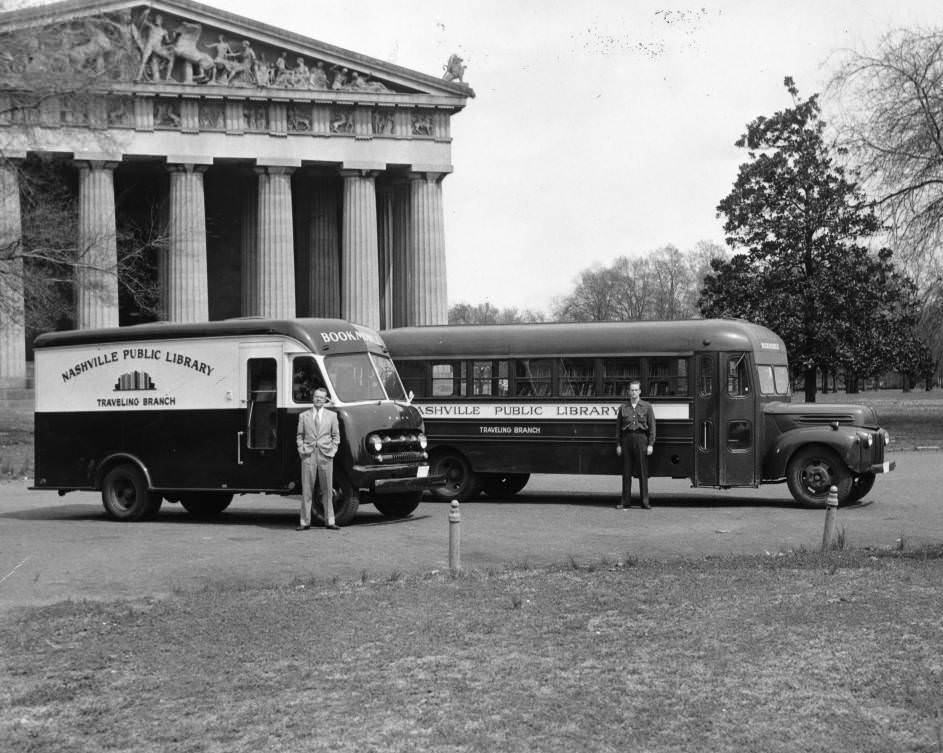
The Parthenon, originally built for Tennessee's 1897 Centennial Exposition, is pictured in the background. The bookmobile service in Davidson County, Tennessee originally began in the 1940's, when the State Library Project furnished a bookmobile which made weekly demonstration rounds through the county. In 1947, the Nashville Public Library initiated the "library-on-wheels" bookmobile service; by 1956, service had been extended to all of Davidson County.
#9 Union Station, Nashville, Tennessee, 1957
#10 Businesses at Second Avenue and Church Street, 1951
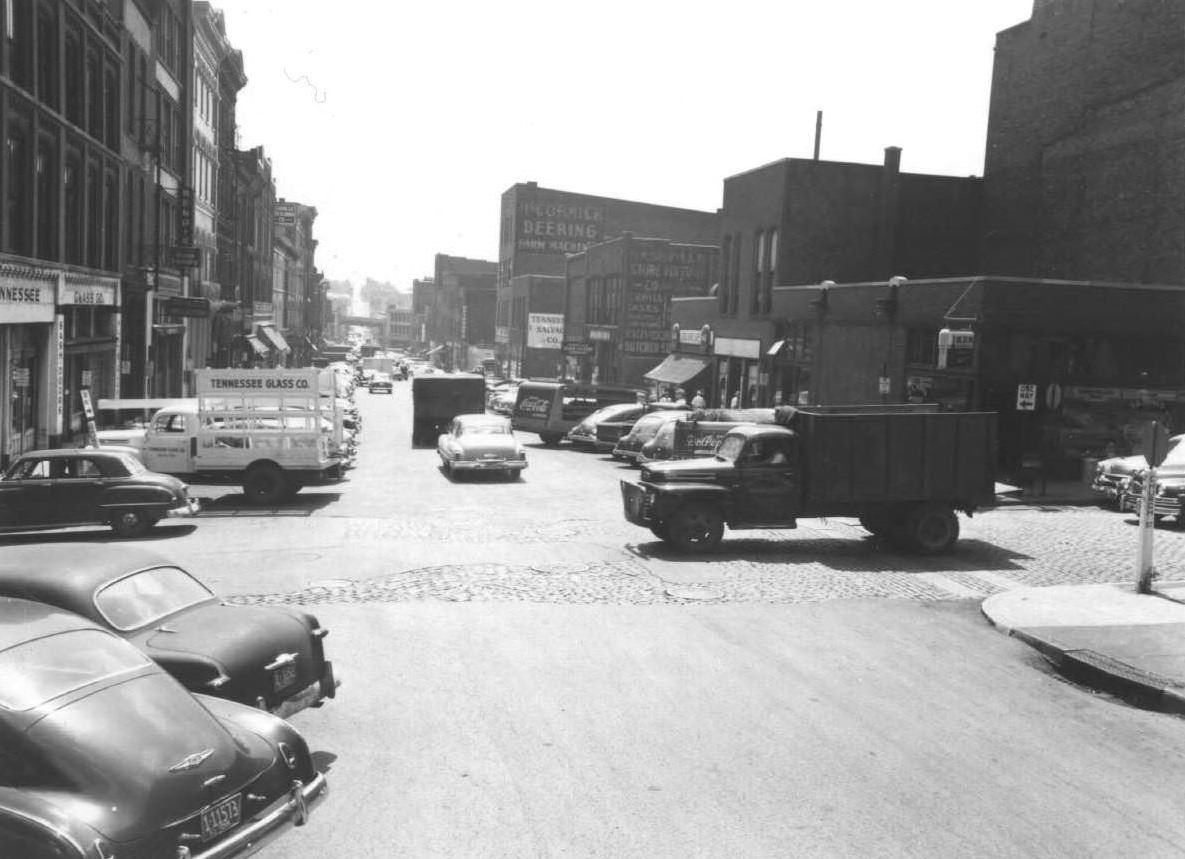
View from the south of Second Avenue, showing businesses. Signs on buildings for businesses include McCormick Deering Farm Machine Co., Nashville Store Fixture Co., Tennessee Salvage Co., Nashville Store Fixture Co., and the Tennessee Glass Co. Several cars are driving down the street, and there are cars and delivery trucks parked on both sides of the street. A work truck for Tennessee Glass Co. is parked in front of the storefront, located at 184 Second Avenue. A stop sign at the intersection has Church Street labeled.
#11 Nashville, as seen from the top of the State Capitol, 1952
#12 Nashville, as seen from the top of the State Capitol, view southeast. Cotton States Building, Andrew Jackson Hotel, 1952
#13 An American Airlines DC-6 at Berry Field, Nashville, Tennessee, 1951
#14 Memorial Square, Nashville, Tennessee, as seen from Capitol Grounds, 1957
#15 Nashville, as seen from the top of the State Capitol, 1952.
#16 Arranging for carols in business establishments, 1951
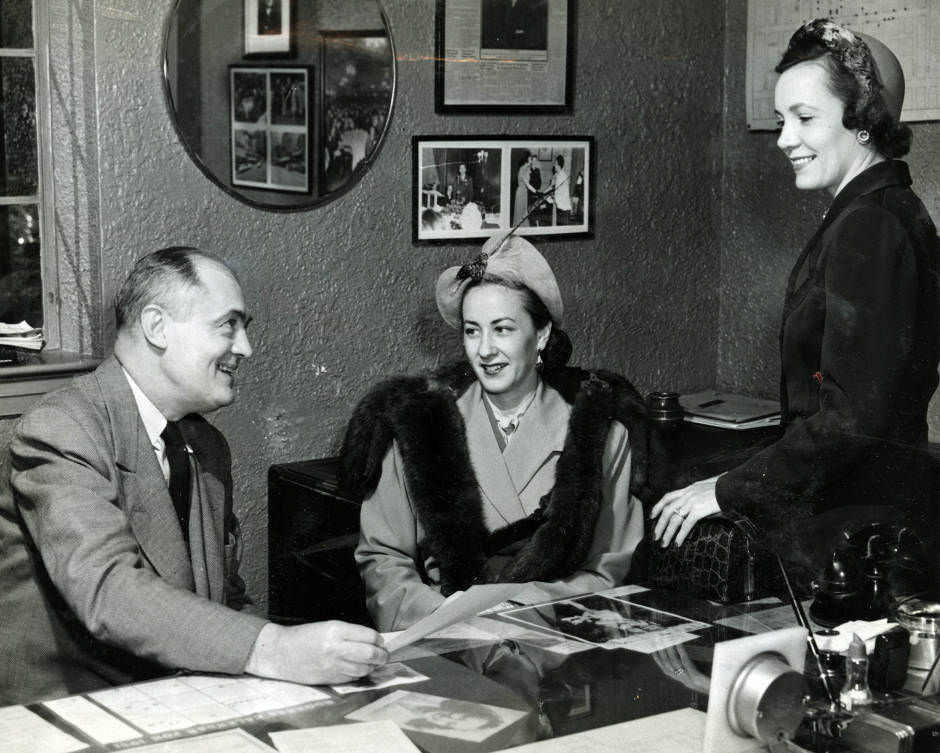
A photograph of Mrs. Francis X. O'Donnell, theater chairman, and Mrs. George Harmon, downtown chairman, of the Fannie Battle Christmas Carol Committee of 1951, seen contacting theater manager Floyd Rice to arrange for carol singing at local businesses in downtown Nashville. This photograph illustrated the newspaper article "B. Banner Gets Christmas Spirit with Carol Committee," published in the 7 December 1951 issue of the Nashville Banner.
#17 Bailey School librarian and student workers, 1954
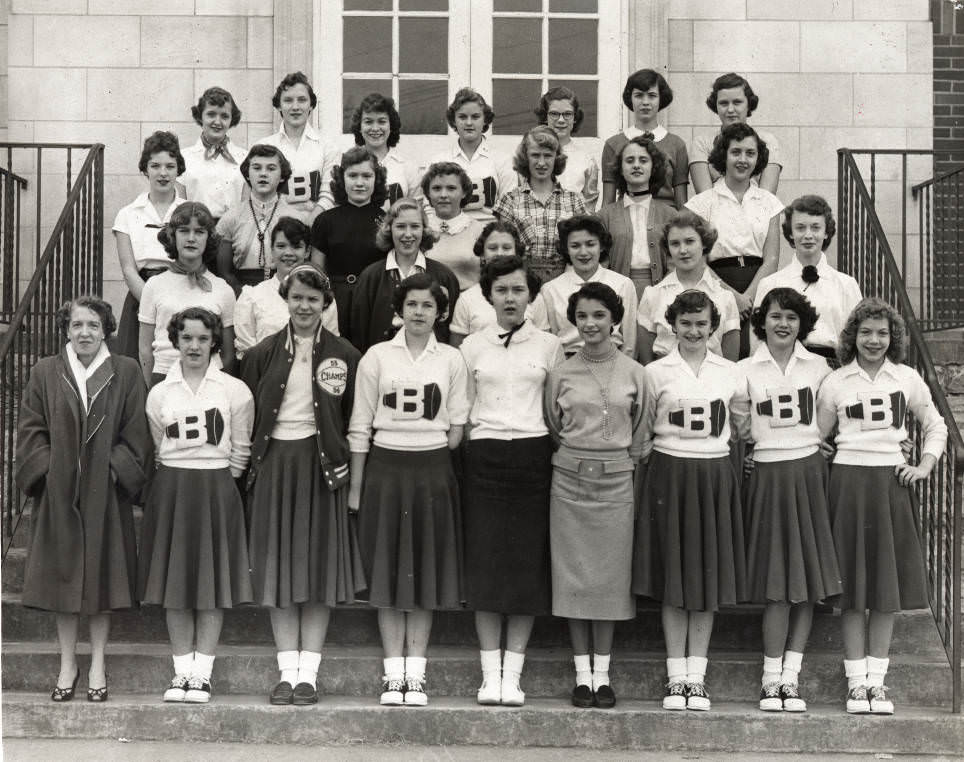
Bailey School, built in 1929, is located in the Eastwood neighborhood of East Nashville. The student library assistants were responsible for shelving books, filing cards, and arranging bulletin boards. Older students were designated as 'library helpers' to assist children in lower grades with book selection, word recognition and learned to work with teachers and other students.
#18 Banner Banquet of Champions, Nashville, Tennessee, 1956
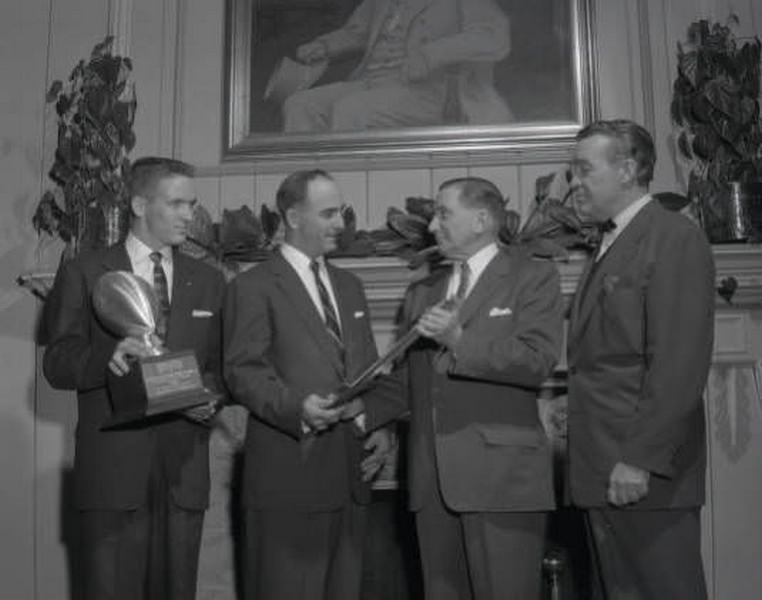
Pictured: (left to right) Johnny Majors, Player of the Year award recipient of the 1956 Banner Banquet of Champions, unidentified man, James G. Stahlman and unidentified, photographed at the Belle Meade Country Club. The award ceremony was hosted by the Banner newspaper to honor sports achievement.
#19 Broad Street off Fourth Avenue, Nashville, Tennessee, 1957
#20 Broad Street off Fourth Avenue, Nashville, Tennessee, 1957
#21 Brooklyn Dodgers baseball star James “Jim” Gilliam presented with key to City, Nashville, Tennessee, 1955
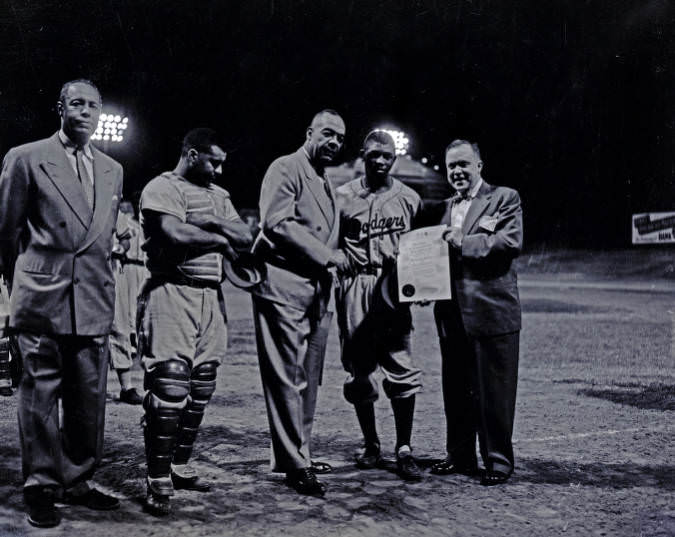
Mayor Ben West (on right) and the other officials are presenting the honor at a sports stadium in Nashville. Gilliam was born October 17, 1928 in Nashville, Tennessee and began playing on a local semi-pro team at age 14. He left high school to pursue his career in baseball. He was voted an All-Star three years from 1948 to 1950, playing in the Negro Leagues with the Baltimore Elite Giants. In 1951 he was signed as a free agent by the Brooklyn Dodgers and played for their International League farm team, the Montreal Royals. Gilliam made his debut with the Dodgers in April 1953. He continued to star with the team after their 1958 move to Los Angeles, California, retiring as a player following the 1966 season. Gilliam played in seven World Series with the Dodgers. Upon retirement, he became a full-time coach in 1967 until his death in 1978.
#22 C. T. Kirkpatrick Elementary School, Nashville, Tennessee, 1955
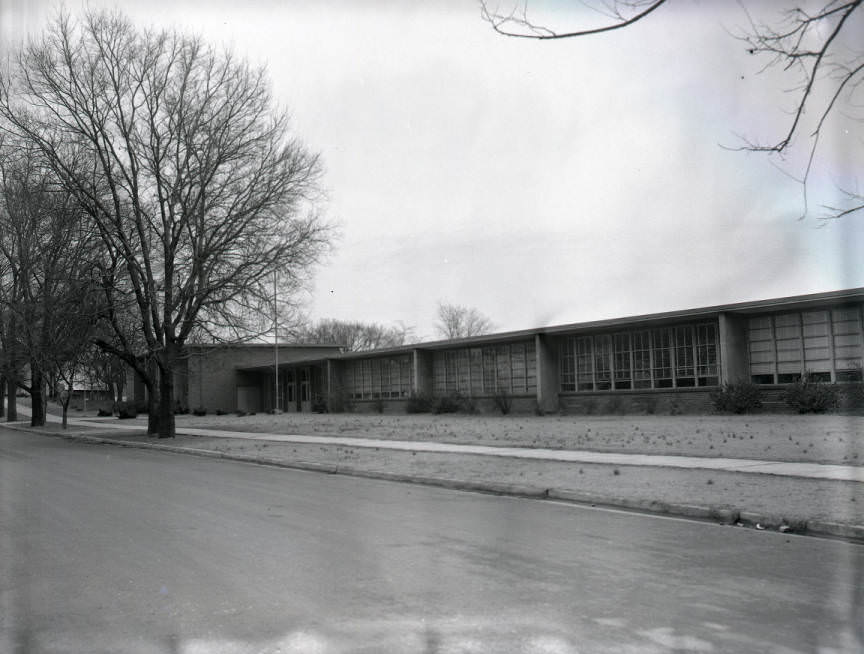
A view of C. T. Kirkpatrick Elementary School, located at 1000 Sevier Street, Nashville, Tennessee, circa January 1955. Kirkpatrick Elementary School opened in December 1952, named for C. T. Kirkpatrick who graduated from Fogg High School and Vanderbilt University, taught Latin at Fogg High School, and served as principal of Hume-Fogg High School from 1914 until his retirement in 1940. Kirkpatrick School offered grades 1-6 until 1971. At that time the school was paired with Warner School.
#23 Cain-Sloan Department Store opening ceremonies, 1957
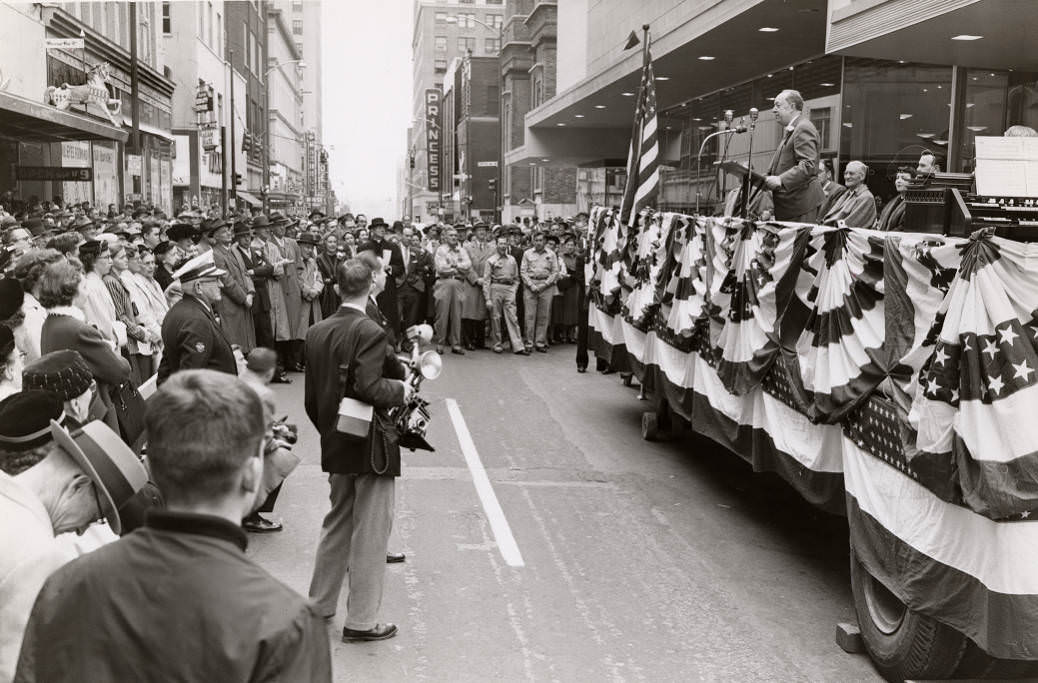
A crowd of more than 500 persons stood in the early morning chill on Church Street to hear John Sloan, president of Cain-Sloan Co., officially open the firm's new $12,000,000 department store on the southwest corner of Fifth Avenue North and Church Street in downtown Nashville, Tennessee. In this photograph only a partial view of John Sloan is visible; he is seated behind the speaker. The store opened at 9:30 a.m. and an estimated over 32,000 shoppers and visitors had passed through its doors by 9:00 p.m. that evening. Many items were sold out during the first day. The Jackson building had earlier stood on this site and was demolished to make way for the new Cain-Sloan building.
#24 Camp Boxwell, Boy Scouts of America reservation, 1958
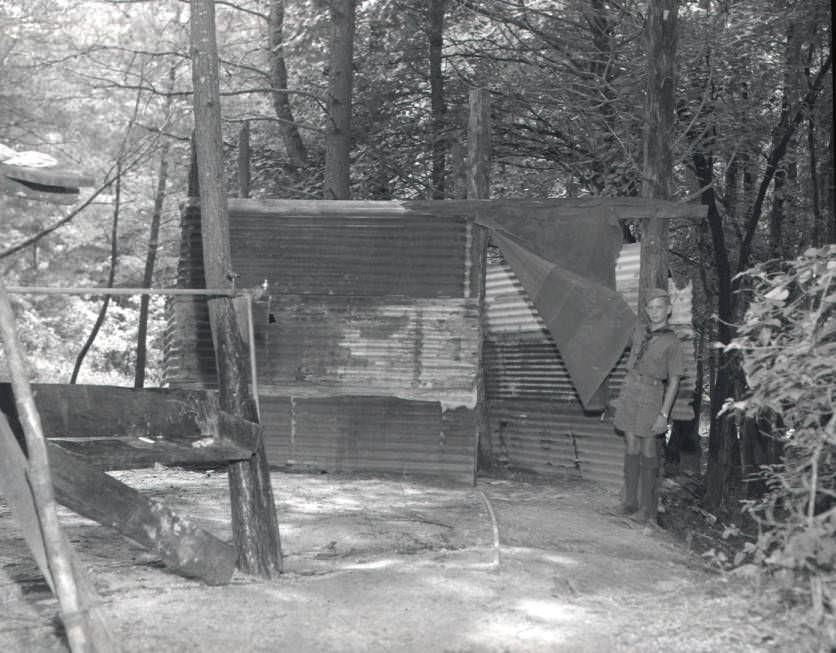
Hardcastle, Jr. was instrumental in the process to acquire the land for Camp Boxwell. This scout camp was named in honor of Mr. L. G. Boxwell, president of the Nashville-area Council of the Boy Scouts of America.
This scout camp was located at the Narrows of the Harpeth River in Middle Tennessee.
#25 Camp Boxwell, Boy Scouts of America reservation, 1958
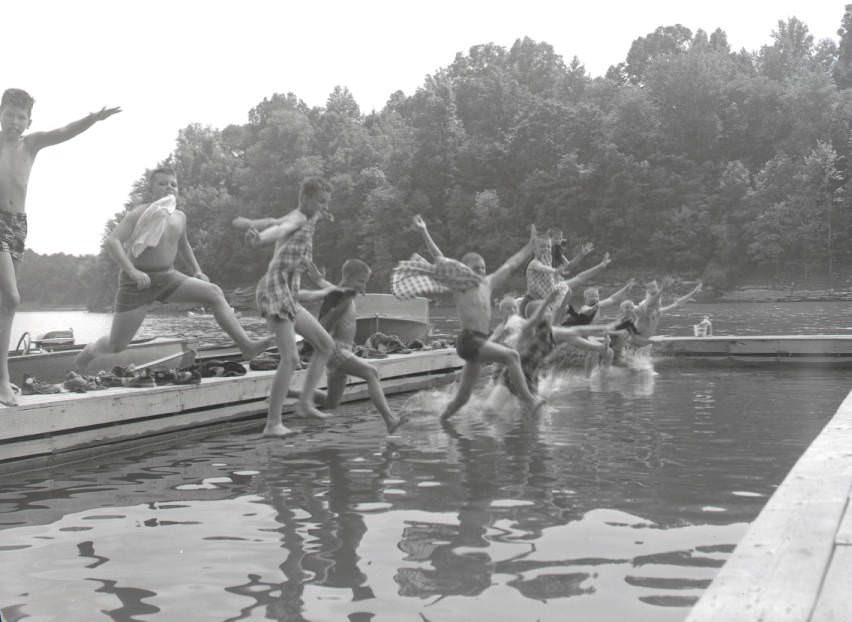
This was the third scout camp to bear the name Boxwell, in honor of Mr. L. G. Boxwell, president of the Nashville-area Council of the Boy Scouts of America from 1927-1947. K.C. Hardcastle, Jr. was instrumental in the process to acquire the land for the fourth and current Boxwell Reservation, located on Old Hickory Lake.
The Boxwell here was located in Walling, TN on the Caney Fork River and was known as Rock Island.
#26 Camp Boxwell, Boy Scouts of America reservation, 1958
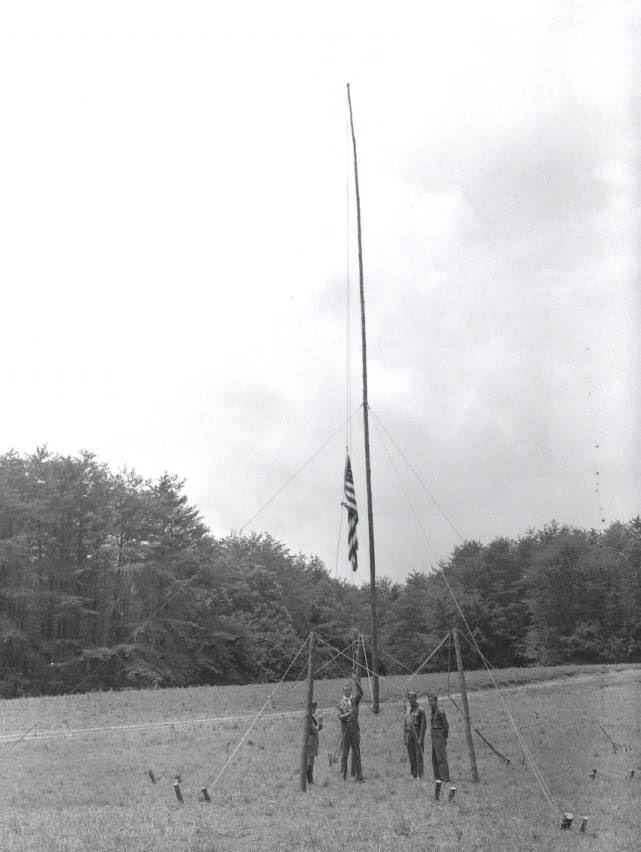
This was the third scout camp to bear the name Boxwell, in honor of Mr. L. G. Boxwell, president of the Nashville-area Council of the Boy Scouts of America from 1927-1947. K.C. Hardcastle, Jr. was instrumental in the process to acquire the land for the fourth and current Boxwell Reservation, located on Old Hickory Lake.
The Boxwell here was located in Walling, TN on the Caney Fork River and was known as Rock Island.
#27 Children touring an American Airlines flagship Susquehanna at the Nashville Airport, 1958
#28 Church Street at Fifth Avenue, Nashville, Tennessee, 1955
#29 Civil Defense check presented to Nashville Mayor West by TVA, 1954
#30 Commander William Anderson homecoming visit to Nashville, 1958
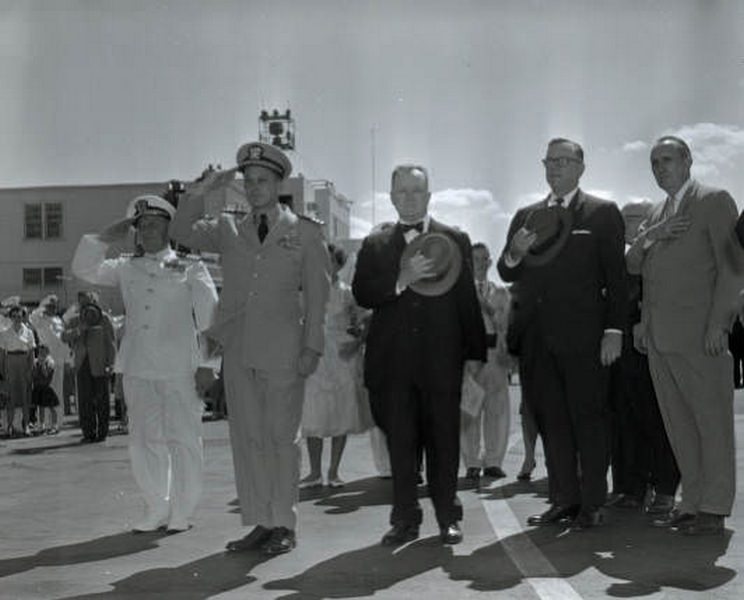
The first part of the official welcome ceremony took place at the Nashville Airport upon arrival via an American Airlines DC7. Anderson commanded the Navy’s first atomic submarine, the “USS Nautilus” on its historic cruise beneath the North Pole in August, 1958.
In addition to a distinguished military career, Anderson was a member of the U. S. House of Representatives from Tennessee’s 6th district (in office January 3, 1965-January 3, 1973.
#31 Commander William Anderson homecoming visit to Nashville, 1958
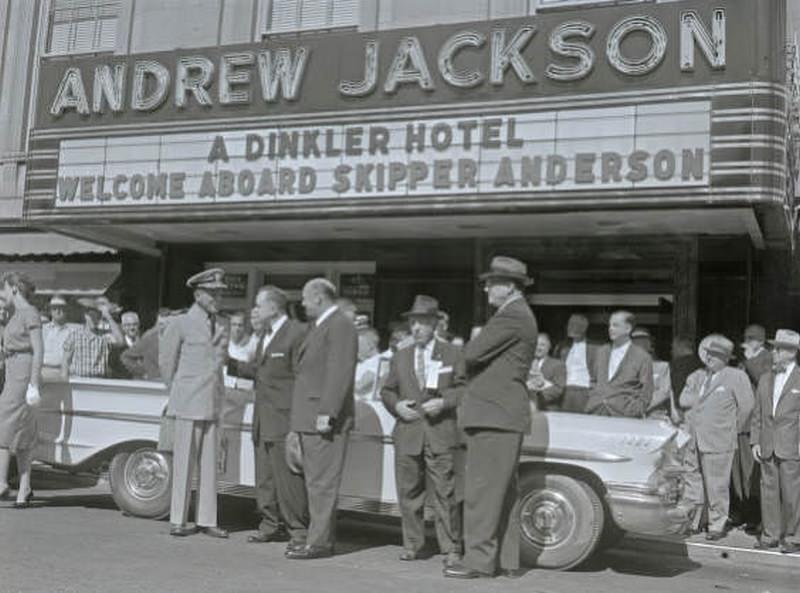
The first part of the official welcome ceremony took place at the Nashville Airport upon arrival via an American Airlines DC7. Anderson commanded the Navy’s first atomic submarine, the “USS Nautilus” on its historic cruise beneath the North Pole in August, 1958.
In addition to a distinguished military career, Anderson was a member of the U. S. House of Representatives from Tennessee’s 6th district (in office January 3, 1965-January 3, 1973.
#32 Commander William Anderson homecoming visit to Nashville, 1958
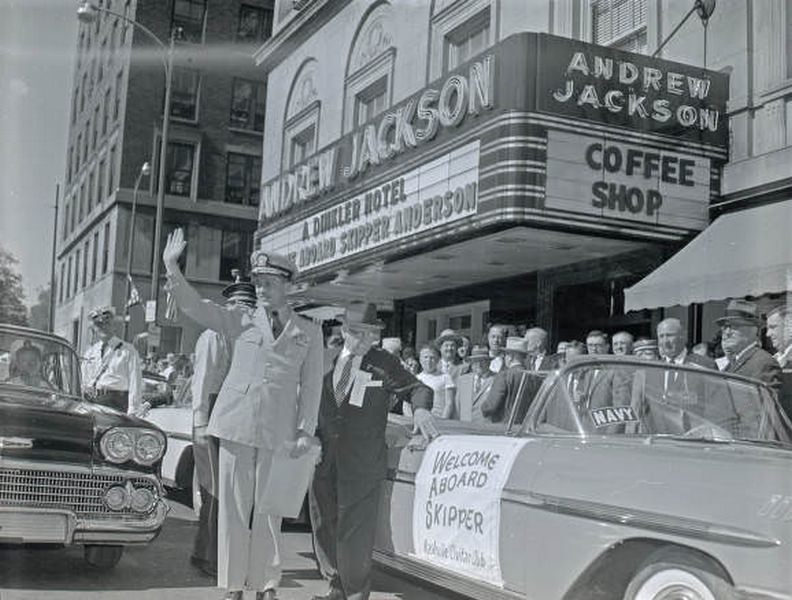
The first part of the official welcome ceremony took place at the Nashville Airport upon arrival via an American Airlines DC7. Anderson commanded the Navy’s first atomic submarine, the “USS Nautilus” on its historic cruise beneath the North Pole in August, 1958.
In addition to a distinguished military career, Anderson was a member of the U. S. House of Representatives from Tennessee’s 6th district (in office January 3, 1965-January 3, 1973.
#33 Country roads near the Hermitage, 1954
#34 Country roads near the Hermitage, 1954
#35 Crane on the Cumberland River, Nashville, Tennessee, 1956
#36 Crowd of onlookers at opening of Tennessee Theatre, 1952
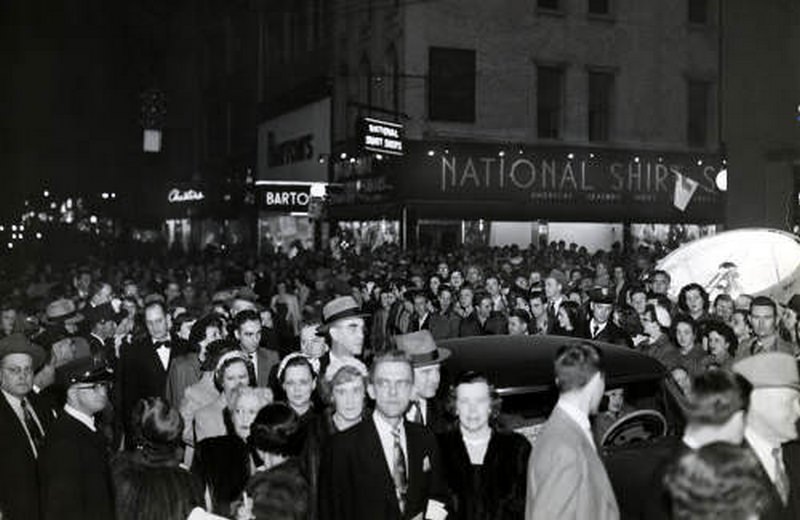
A photograph of crowd of onlookers who thronged Church Street watching the arrival of movie stars and local VIPS at the gala opening of the Tennessee Theatre February 28, 1952 in downtown Nashville, Tennessee. Outside activities included broadcasts by WSIX radio and WSM television, a concert by the American Legion Post 5 band, and the arrival of the honored guests, each with an individual police escort. Each star was introduced to the crowd from a street platform before entering the building.
#37 Delta Beta Sigma social event at Belle Meade Country Club, 1957
#38 Department store interiors at Christmas, Nashville, Tennessee, 1955
#39 Aerial photograph of downtown Nashville, Tennessee, 1954
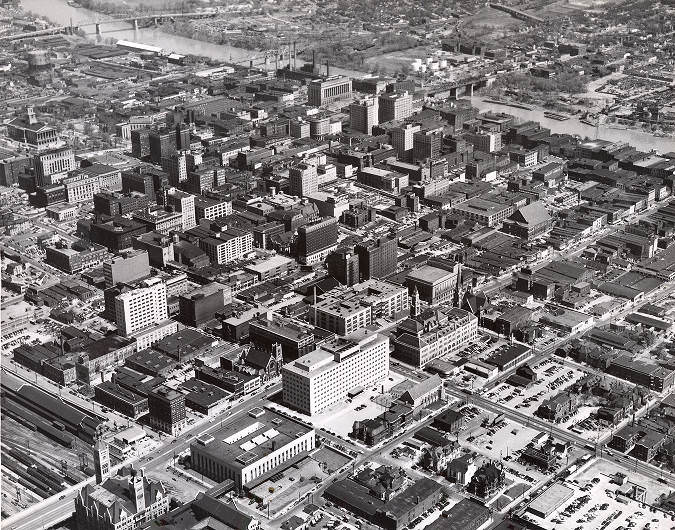
The view includes the urban landscape from the area adjacent to the Tennessee State Capitol building, south to Demonbreun Street, west to Broadway and 10th Avenue, and a view of the bridges over the Cumberland River to East Nashville. Several buildings and skyscrapers in the photograph include the Ryman Auditorium, Hume-Fogg High School, the Public Square, Union Station, Vine Street Temple (Congregation Ohabai Sholom), Cordell Hull State Office Building, Sam Davis Hotel, Andrew Jackson Hotel, St. Mary's Catholic Church, Estes Kefauver Federal Building, among several other landmarks in downtown Nashville.
#40 Aerial view of downtown Nashville, Tennessee, 1954
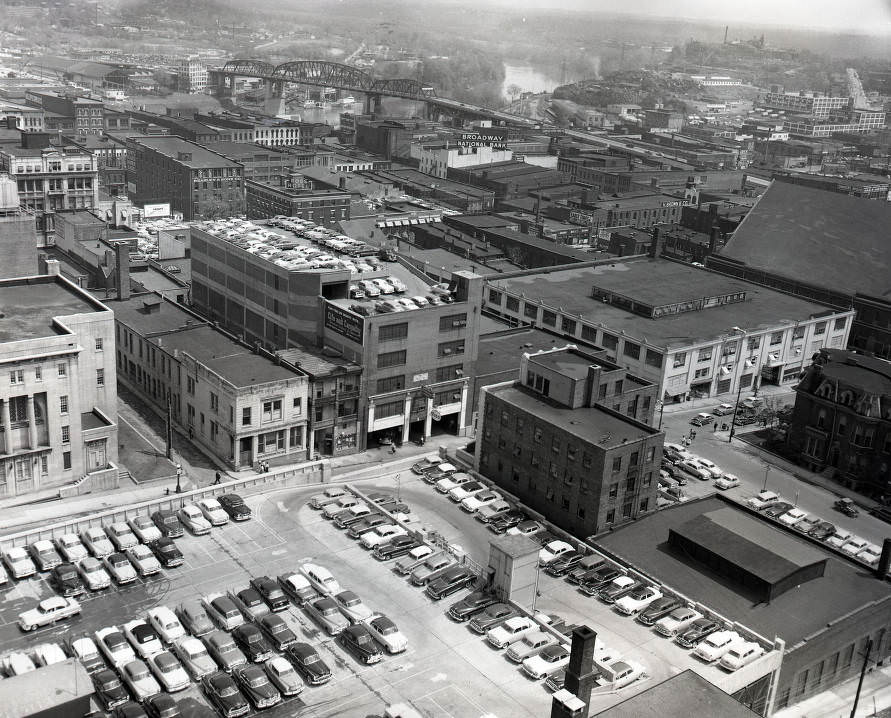
An aerial view of downtown Nashville, Tennessee circa 1954, mostly along 5th Avenue N in the foreground, with a partial view of First Presbyterian Church, L & C Garage, and Church of Christ Girls Home. Other landmarks of the central business district include Ross Hotel, Beasley & Sons Company, Broadway National Bank, H. G. Lipscomb & Company and others. Includes a view of the Cumberland River, the Shelby Street Bridge, the Nashville Bridge Company and some of East Nashville in the distance.
#41 Aerial view of downtown Nashville, Tennessee, 1954
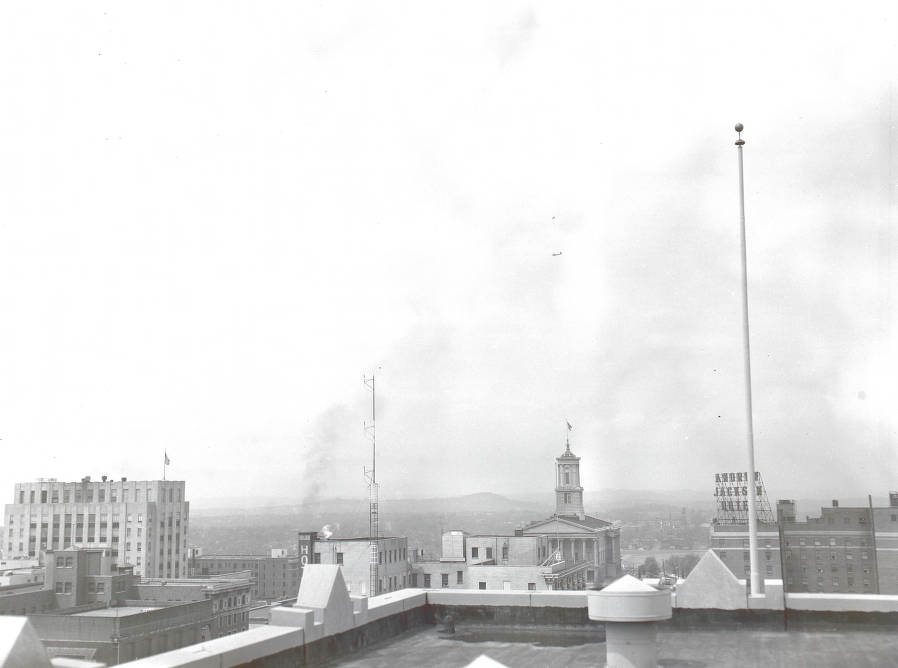
Part of the Andrew Jackson Hotel is pictured (on right). The State Capitol was constructed between 1845 and 1859. It was designed in Greek Revival style by architect William Strickland (1788-1854). Strickland died before construction was completed and was interred in the walls of the north portico. His son, Francis W. Strickland, oversaw the completion of the project.
The cupola was reputedly modeled on a Greek monument to Lysicrates and designed to be illuminated at night like a lantern. The building was constructed of Tennessee Limestone and underwent major restoration for 1956-1960. During the restoration, much of the limestone, including most in the cupola and the Ionic columns and capitals, was replaced with Indiana limestone.
The grounds contain monuments to famous people and events in Tennessee history. The Capitol was placed on the National Register of Historic Places in 1970. North Nashville can be seen in the distance.
#42 Aladdin Industries on Murfreesboro Road, Nashville, Tennessee, 1956
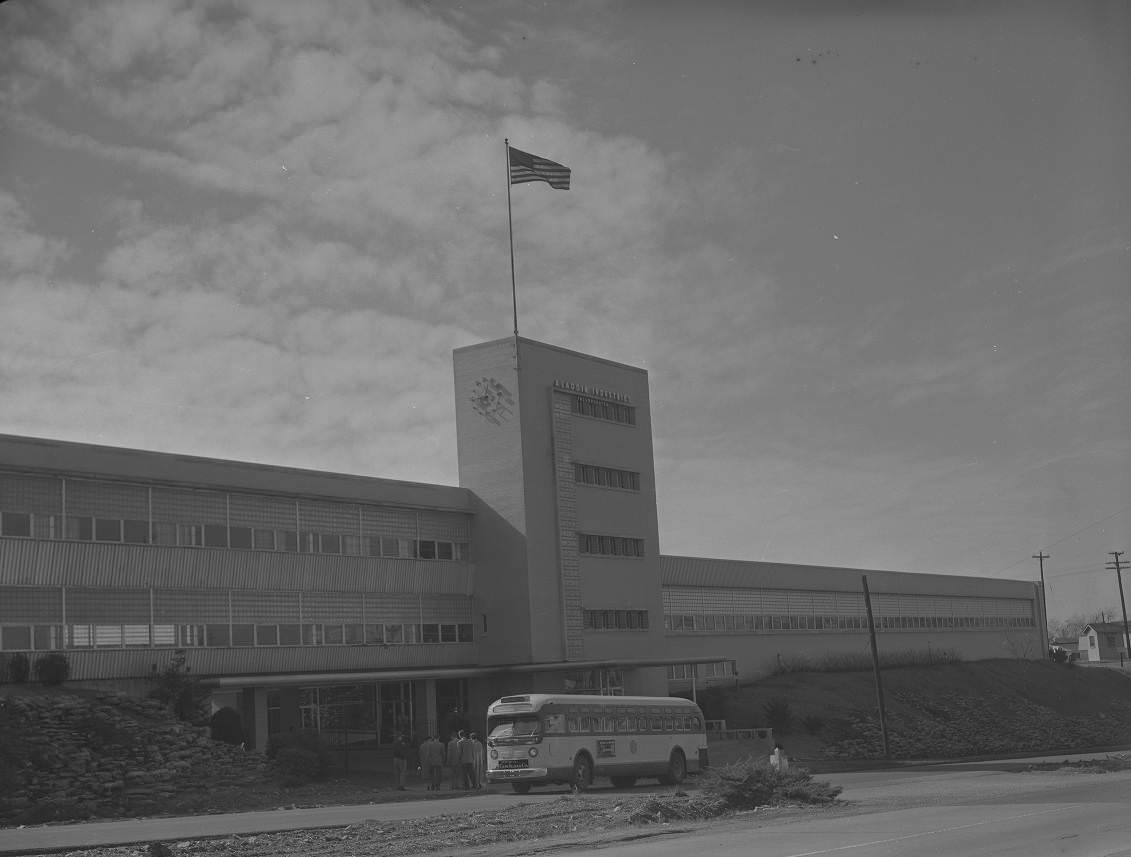
The company site was built in 1949 when they moved from Chicago to Nashville. Listed in the 1956 City Directory with Victor S. Johnson, Jr., President; T. A. Blain, Vice-President, Purchasing and Traffic; Carl Bramming, Vice-President, Research and Product Development, with other staff listed.
The company produced Aladdin Kerosene Lamps, Aladdin Electric Lamps, vacuum bottles, and related products.
The affiliated Aladdin Radio Industries, Inc. was located at the same site, manufacturing radio and television products. In 1950, Aladdin made the first licensed character lunch box, featuring Hopalong Cassidy. Sales skyrocketed from 50,000 to 600,000 units in one year, making Aladdin the leader in lunch.
#43 American Cancer Society National Officers visit Nashville, Tennessee, 1955
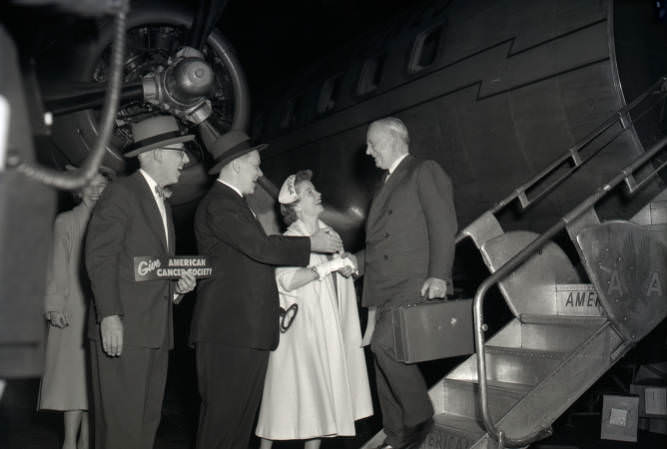
The American Society, a volunteer agency, was formed in 1913 and reorganized in 1945. The Society’s governing body consisted of a Board of Directors of men and women, many from the medical and scientific professions. Gen. William J. Donovan served as ACS Honorary Director of the American Cancer Society, Inc. During his visit with the group, Gen. Donovan was presented an Honorary Citizen of Nashville award by Mayor Ben West and the City of Nashville.
The local Cancer Crusade in Nashville was chaired by Mrs. Robert J. Anderson.
#44 Andrew Jackson equestrian statue at Tennessee State Capitol Building, 1953
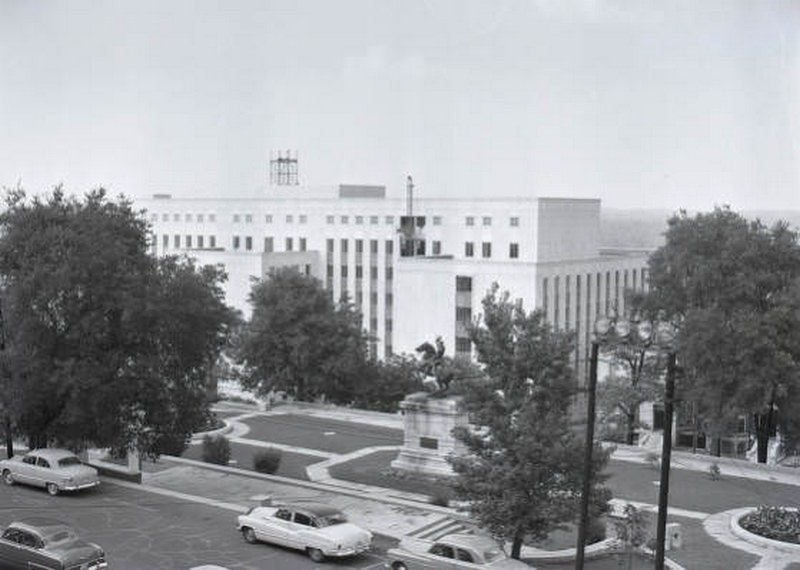
This statue stands upon the front lawn to the Tennessee State Capitol Building in downtown Nashville. The other two statues are at New Orleans, Louisiana and Washington, D. C. It is the first design of a person on horseback ever cast in the United States.
The monument was dedicated during Nashville’s centennial celebration in May 1880.
#45 First Presbyterian Church, Nashville, Tennessee, 1951
#46 First Presbyterian Church, Nashville, Tennessee, 1951
#47 Fourth Avenue, Nashville, Tennessee, 1959
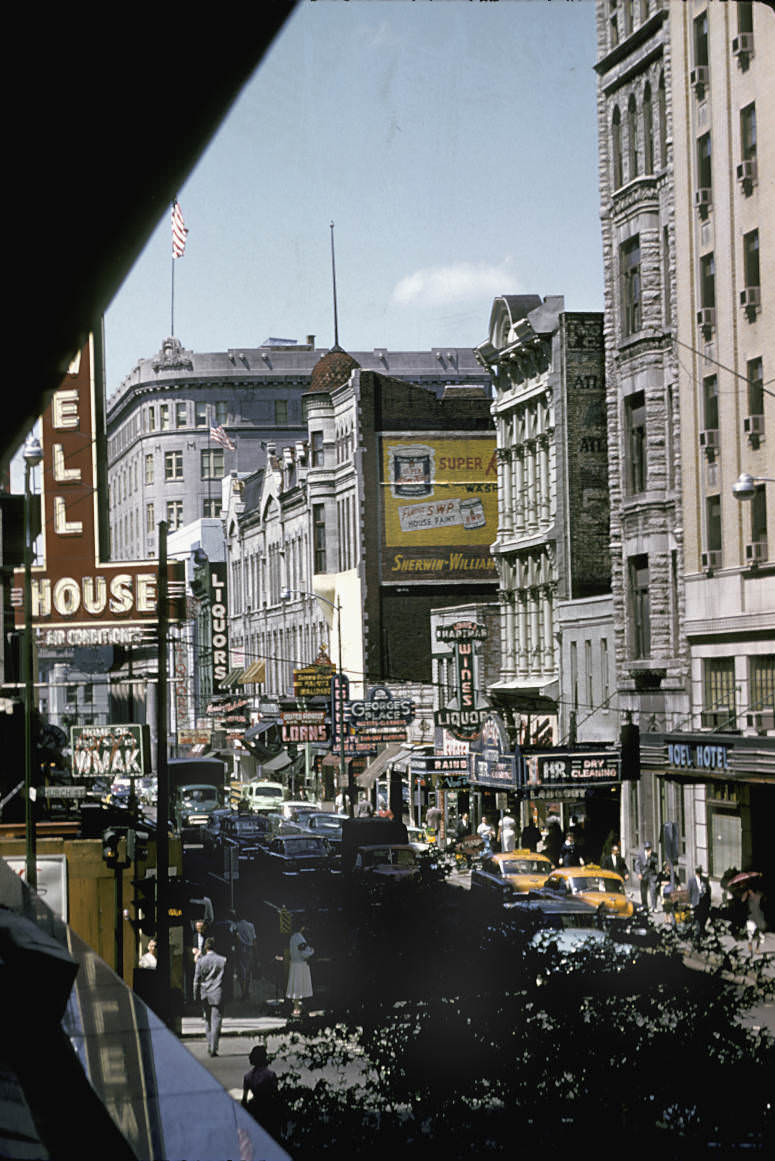
Downtown Nashville along Fourth Avenue North of Church Street from the corner of the Maxwell House Hotel. Several buildings and landmarks may be seen, such as the Maxwell House Hotel's marquee sign and the very popular radio station WMAK that broadcast from the studios in the lower floor there. Additional commercial enterprises across the street are the Noel Hotel (200 Fourth Avenue North), the Palace Hatters & Cleaners, Louis J. Hartman Liquors, George's Place (hatters), Sherwin Williams Company, and the First American National Bank at Fourth Avenue, North, and Union Street.
#48 Gas war in Nashville, Tennessee, 1955
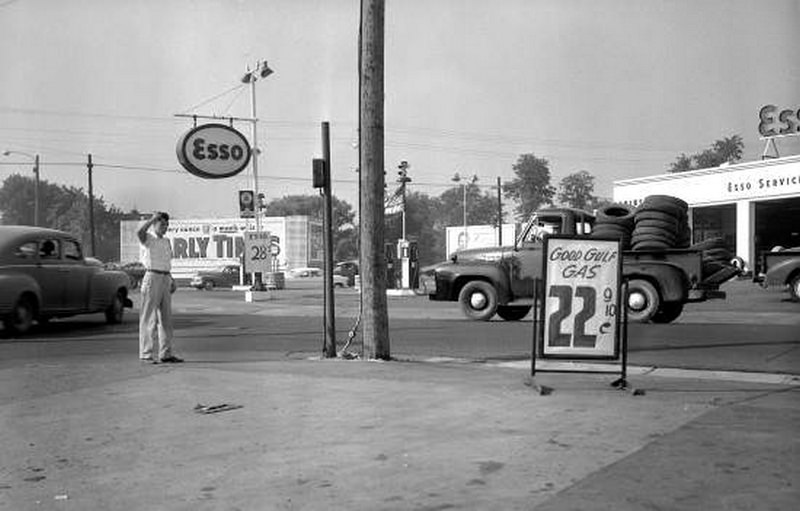
This photo appeared on the front page of the 8 September 1955 edition of the Nashville Banner. The caption states, "Confusion in the gas war - John W. Thomas scratches his head in amazement at the conflicting gasoline prices this morning. The 22.9 cents a gallon sign is at Doc Byrd's Gulf Service Center at 16th Avenue and Demonbreun Street. Across the street, Robinson Service Station went along with a number of other stations in boosting its price to 28.9 cents a gallon." The two brands of gas in the photograph are Esso and Gulf. Forms part of the Nashville Banner Archives.
#49 General Douglas and Jean Faircloth MacArthur and son visit Murfreesboro, Address at Middle Tennessee State College, 1951
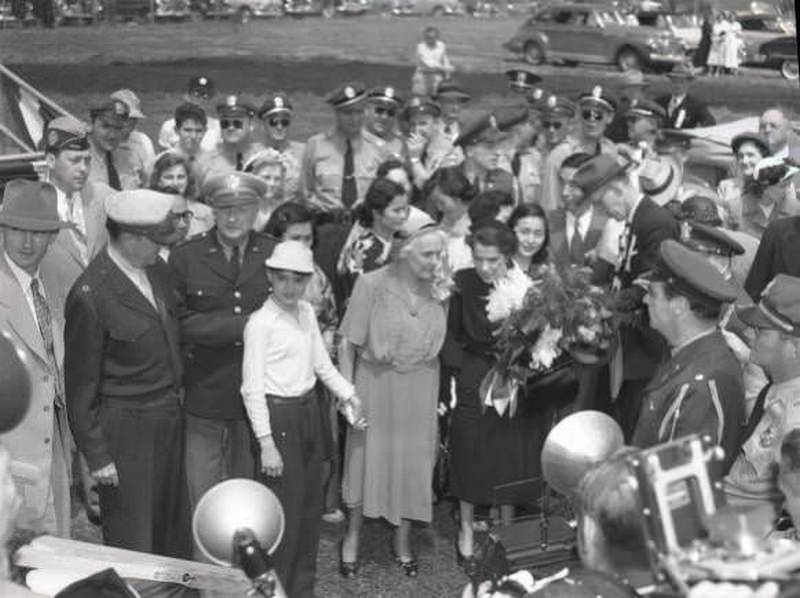
Pictured: Gen. Douglas MacArthur and wife Jean Faircloth MacArthur and young son (Arthur) among a group of military officers and civilians, upon their arrival to speak at Middle Tennessee State College in 1951. Both General MacArthur and his wife spoke at the outdoor football stadium event. And the city of Murfreesboro welcomed the couple with a parade and celebration in honor of the couples’ 14th wedding anniversary. Jean was a great-granddaughter of a former Mayor and she had lived for 34 years in a pillared mansion on East Lytle Street. The head of the Murfreesboro household was her grandfather, Capt. Richard Beard, a Confederate veteran.
#50 Golf Course and Club House at Shelby Park, Nashville, Tennessee, 1950s
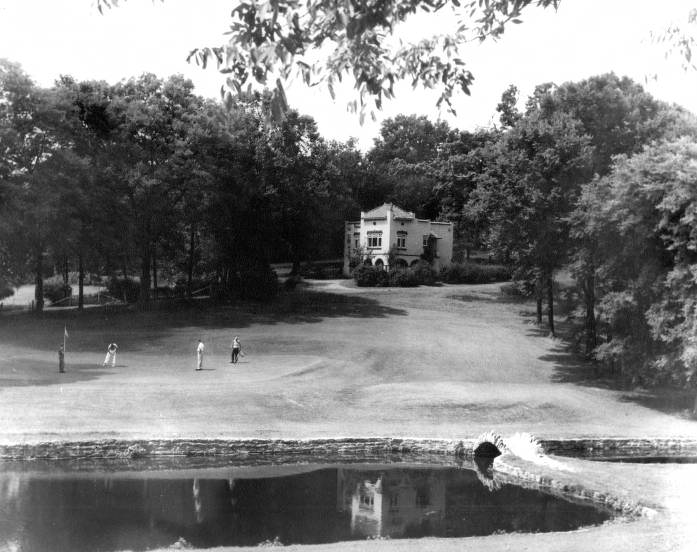
Shelby Park is a large urban park located approximately three miles east of downtown Nashville, Tennessee in East Nashville, along the Cumberland River. The Nashville Park Commission acquired the initial land, approx. 151 acres, for the park in 1909. The official opening was on July 4, 1912. Shelby Park is operated by Metropolitan Nashville Department of Parks and Recreation.
#51 Groundbreaking ceremony of the Nashville Children’s Theatre, Nashville, Tennessee, 1959
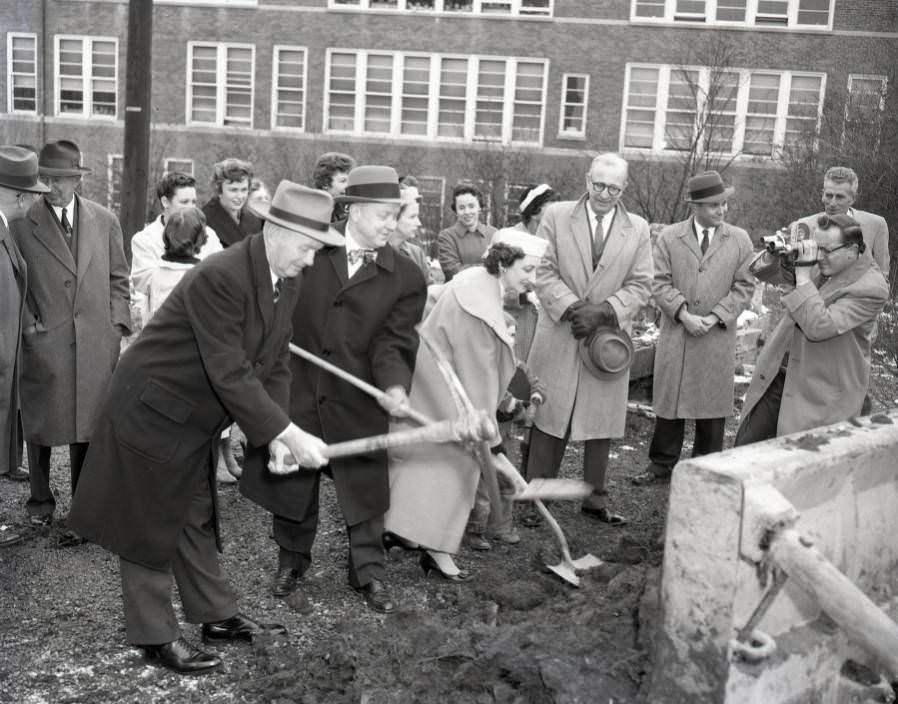
The Nashville Children’s Theatre was formed by the Junior League of Nashville as an amateur theatre in 1931. At that time, the Junior League was fulfilling a commitment to establish children’s theatre in many U.S. cities. For years, NCT performed in numerous local landmarks, including Belcourt Theatre, and at Vanderbilt and Belmont Universities. In the late 1950s, Ann Stahlman Hill undertook the monumental task of creating a permanent home for NCT, with many other civic-minded individuals, and with her leadership they petitioned legislatures and engaged in fundraising. Nashville Children’s Theatre opened in 1960 at a facility next to the Howard School building and Lindsley Hall.
#52 Groundbreaking of the Lentz Center, Nashville, Tennessee, 1958
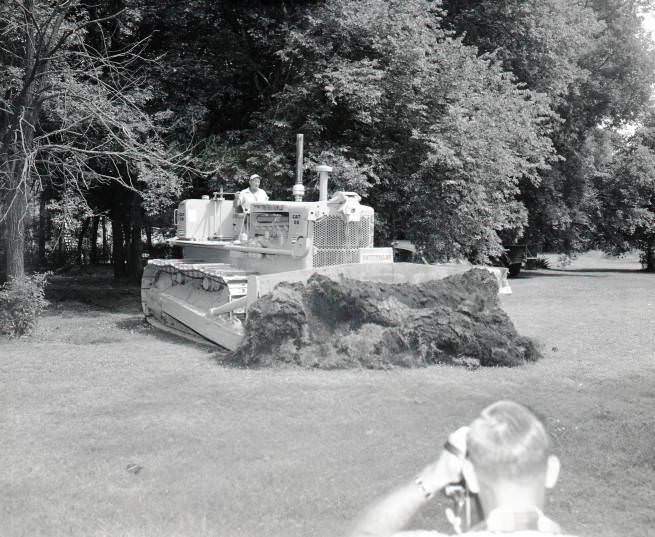
Dr. John J. Lentz was director of Health for the Davidson County Health Department. The new facility became the main clinic for public health activities of Nashville and Davidson County, located at 311 23rd Avenue N. Dr. Lentz started his career as a country doctor in 1906 and became director of public health for Davidson County in December, 1920.
#53 Groundbreaking of the Lentz Center, Nashville, Tennessee, 1958
#54 Guilford Dudley, Jr. and “This is Your Life,” 1957.
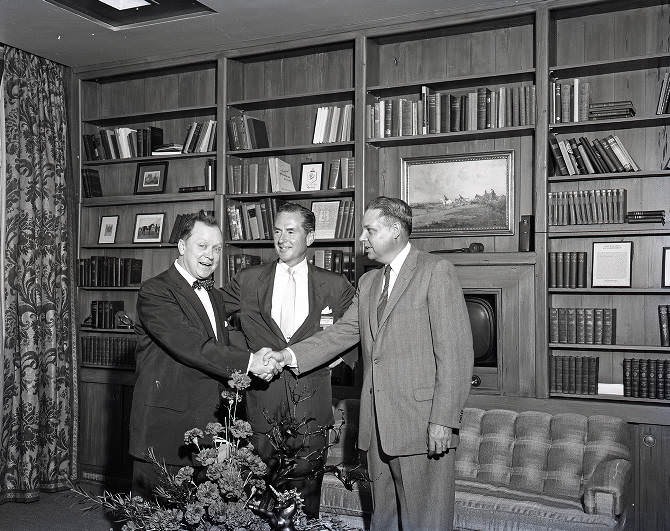
Guilford Dudley, Jr. (1907-2002) was the United States ambassador to Denmark under the Nixon and Ford presidential administrations. From 1952 until 1969, Dudley served as president of Life & Casualty Insurance Company. Dudley was the youngest child, and only son of Guilford Dudley (1854-1945) and Anne Dallas Dudley (1876-1955), a leading activist in the women’s suffrage movement in the United States. He was born and died in Nashville, Tennessee. He is buried in Mount Olivet Cemetery.
#55 H. Cohen Furniture Company warehouse, Nashville, Tennessee, 1953
#56 Hillbilly Day, Madison, Tennessee, Nashville, Tennessee, 1958
#57 Interior of West End Synagogue, Nashville, Tennessee, 1951
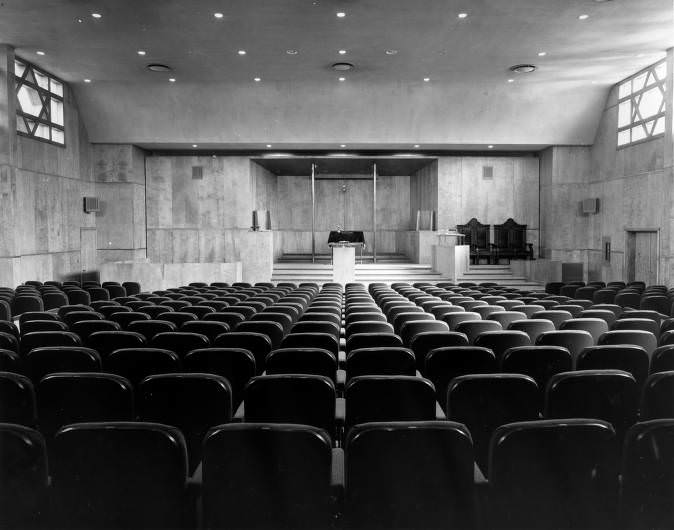
Originally founded as Khal Kodesh Adath Israel in 1874 in downtown Nashville. This modern structure was designed by architect Percival Goodman of New York City. Upon completion of the new building, it was dedicated in 1951. West End Synagogue is affiliated with the United Synagogue for Conservative Judaism. The Foster & Creighton construction contracting firm was founded in 1885 by Wilbur F. Foster and Robert T. Creighton, who had both served as City Engineer of Nashville.
#58 Italian Street Fair event sponsored by the Nashville Symphony Guild benefiting the Nashville Symphony Orchestra, 1956
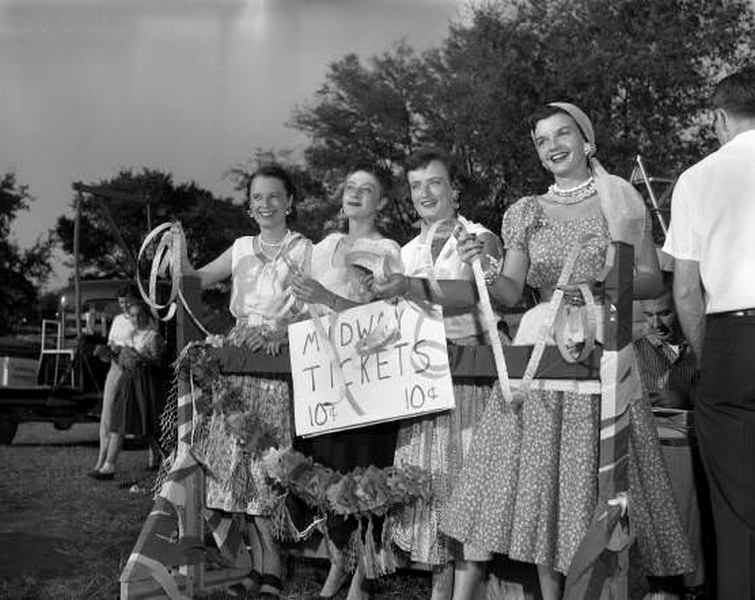
An article about the event appeared in the Nashville Banner newspaper on October 8, 1956, citing: "Pizza, pepperoni and puppets abounded Saturday afternoon and evening as the gates of the second annual Italian Street Fair swung open at the corner of Natchez Trace and West End Ave, (Nashville, TN). All the color and charm of the boot country were transported to the Nashville scene as gaily costumed workers for the Nashville Symphony Association hawked everything from succulent spaghetti to baby bootees midst a scene made gay by folk dances, strolling street singers, and contests galore designed to catch the eye of toddlers, teenster et al.
#59 James Melton arrives with his English car, 1951
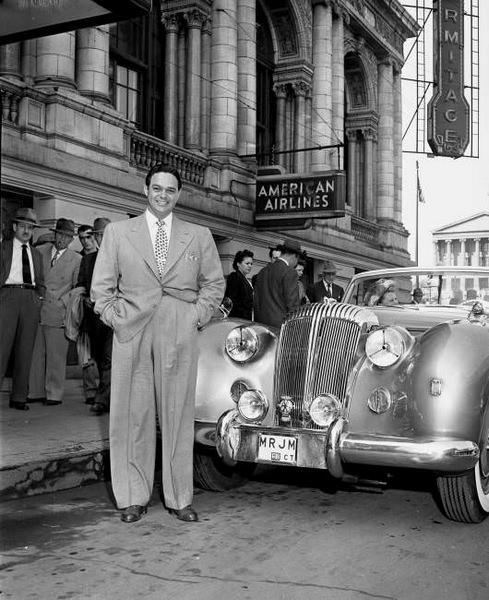
James Melton was in town to speak at his alma mater Vanderbilt and visit old friends. In the start of his career he played saxophone and sang with Francis Craig's orchestra which was the house band at the Hermitage Hotel for many years. Nashville Banner newspaper article that accompanied similar photo reads: "The vehicle is a new English Daimler the largest automobile in the world with a 147-inch wheel base and weight of 6,800 pounds. It travels by the way about six miles to a gallon of gasoline."
#60 James Robertson Parkway ribbon cutting ceremony with Mayor Ben West, Nashville, Tennessee, 1958
#61 Jewish Community Center, Nashville, Tennessee, 1951
#62 Jewish Community Center, Nashville, Tennessee, 1951
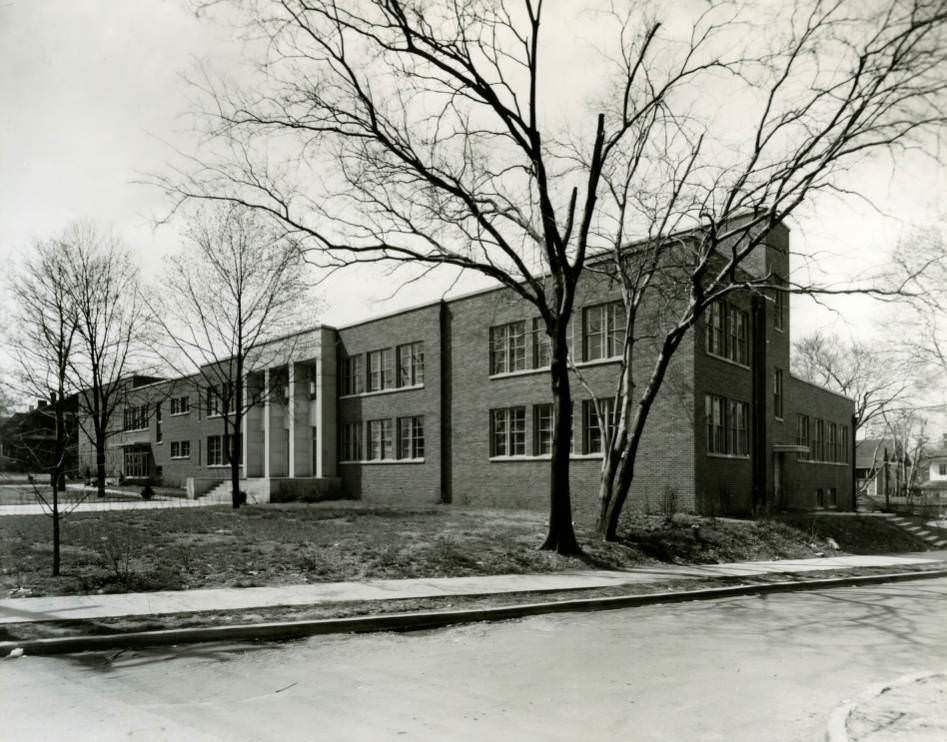
The architectural design was by Hart, Freeland & Roberts. This building was constructed by Foster & Creighton Company. The dedication for the laying of the cornerstone of the Jewish Community Center occurred on September 9, 1951 under the chairmanship of Dr. Sam Riven. The new Center opened in 1952.
#63 Kirkland Hall, Vanderbilt University Campus, Nashville, Tennessee, 1955
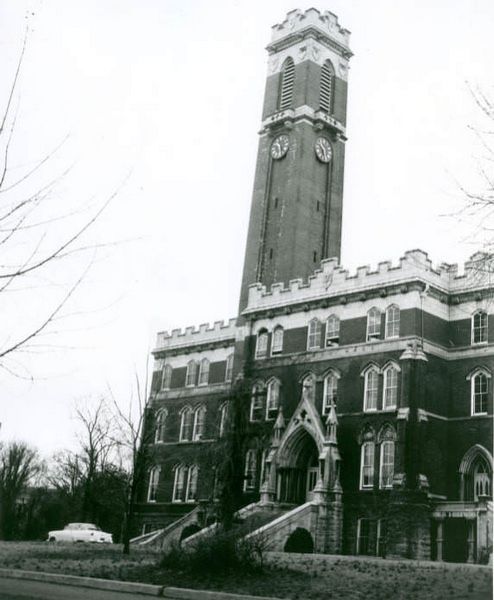
Kirkland Hall is one of the original buildings of Vanderbilt University. It was built to replace Vanderbilt's Main Building that burned in 1905. Vanderbilt University was made possible in 1873 through a one-million-dollar gift from Commodore Cornelius Vanderbilt, a shipping and rail tycoon who had never even visited the South. Vanderbilt's hope in supporting a university in the South was that it would "contribute to strengthening the ties which should exist between all sections of our common country." At the University's onset, the campus consisted of the Main Building, an astronomical observatory and houses for professors. The original Vanderbilt Library was housed in the Main Building. In 1905 a fire consumed the Main Building and it was rebuilt with one tower as Kirkland Hall in honor of the school's longest serving Chancellor, James H. Kirkland. Kirkland guided the rebuilding process and also navigated the University through the separation from the Methodist Church.
#64 Koffee Kup on West End Avenue, 1953
#65 Maxwell House fire, 1958
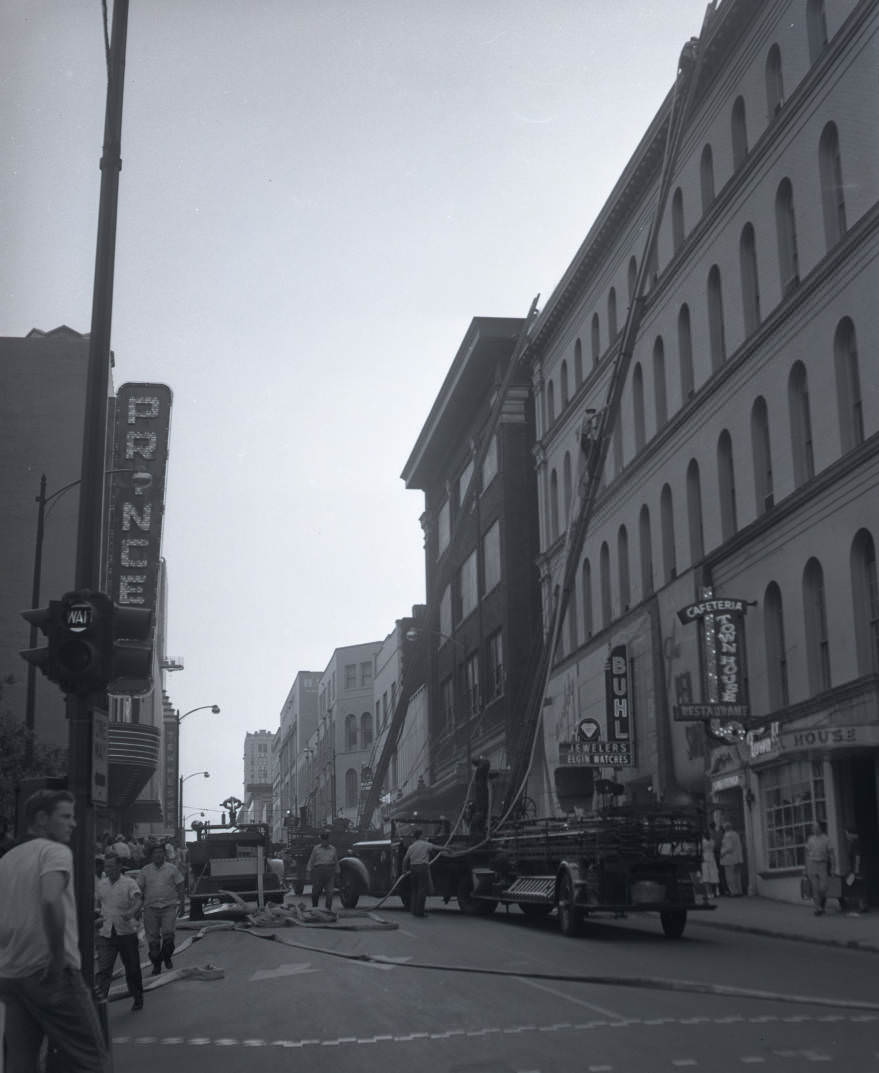
This grand hotel was located at the corner of Fourth and Church, completed in 1859. This was the first of two fires, occurring in 1958. No injuries were reported, yet the fire caused an estimated $50,000 worth of damage to the building. It caught on fire again during the Christmas night fire of 1961 and destroyed all but the structural shell.
#66 Maxwell House fire, 1958
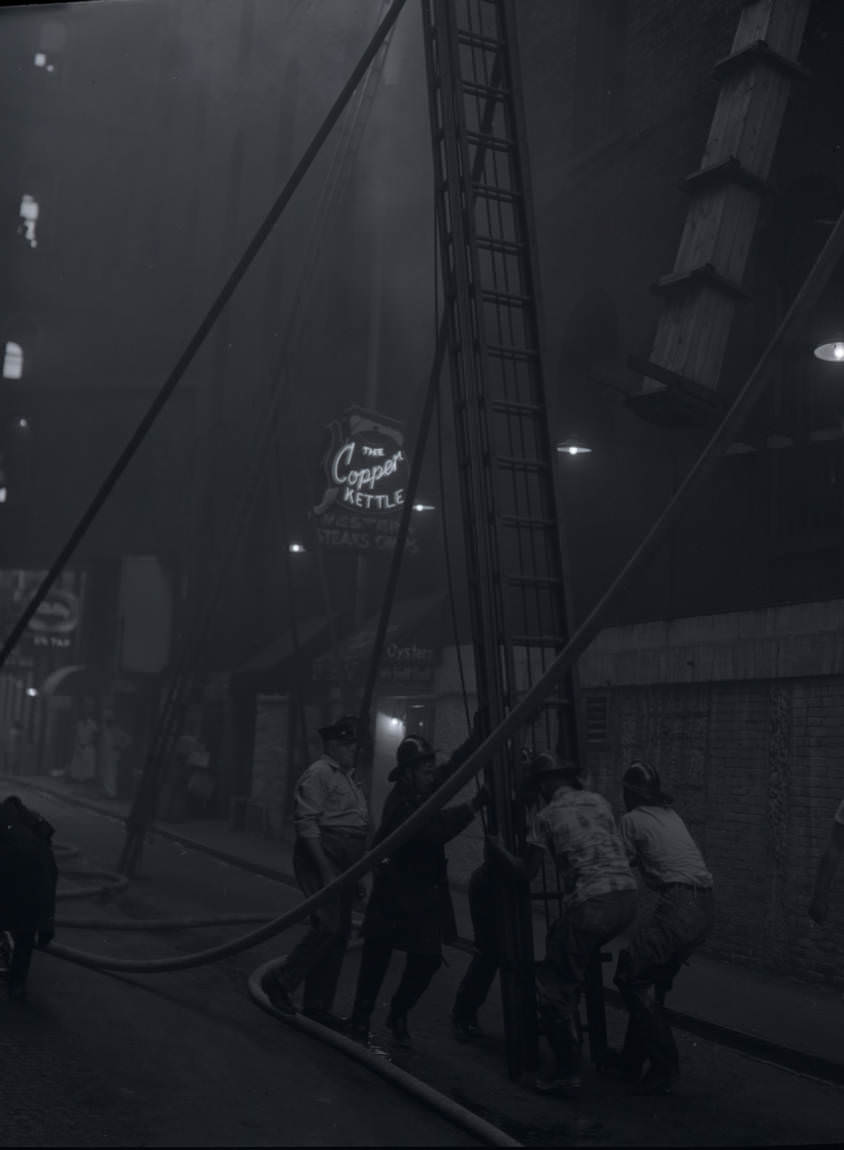
This grand hotel was located at the corner of Fourth and Church, completed in 1859. This was the first of two fires, occurring in 1958. No injuries were reported, yet the fire caused an estimated $50,000 worth of damage to the building. It caught on fire again during the Christmas night fire of 1961 and destroyed all but the structural shell.
#67 Maxwell House fire, 1958
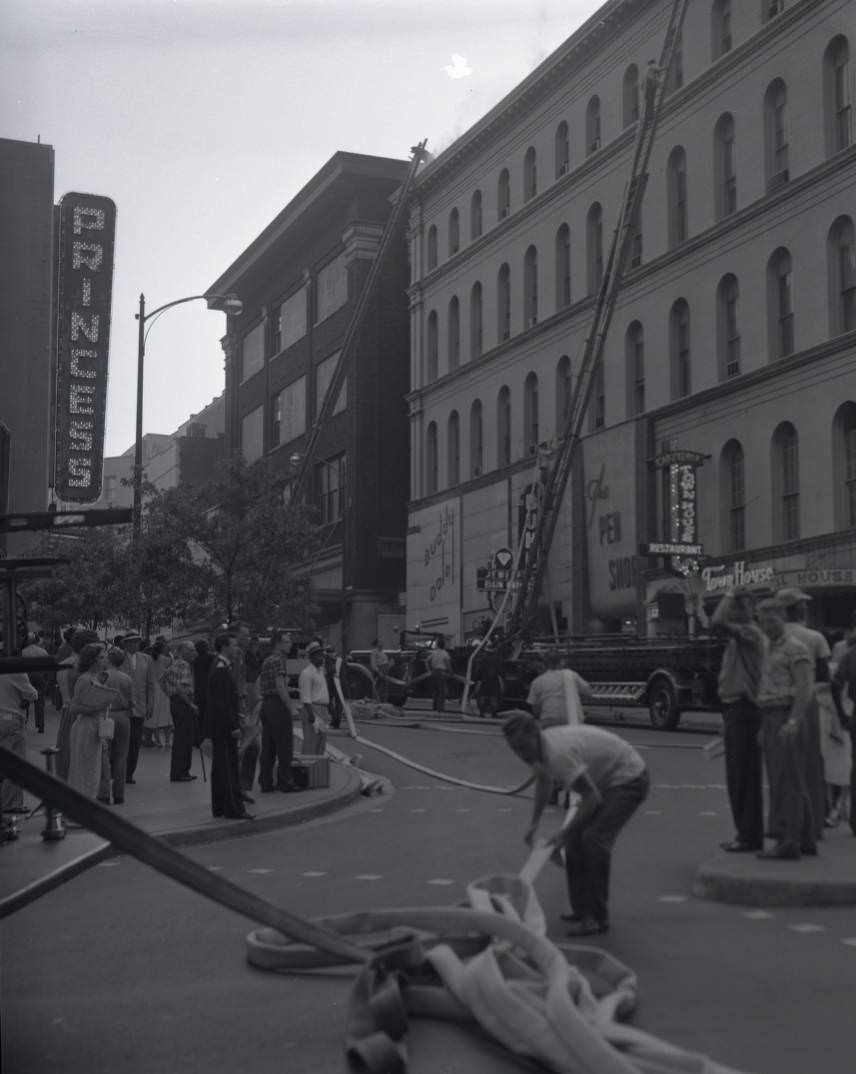
This grand hotel was located at the corner of Fourth and Church, completed in 1859. This was the first of two fires, occurring in 1958. No injuries were reported, yet the fire caused an estimated $50,000 worth of damage to the building. It caught on fire again during the Christmas night fire of 1961 and destroyed all but the structural shell.
#68 Maxwell House fire, 1958
#69 Maxwell House fire, 1958
#70 A scene from the Maxwell House hotel fire in downtown Nashville, Tennessee on June 4th, 1958.
#71 Maxwell House Hotel, 1950-1961
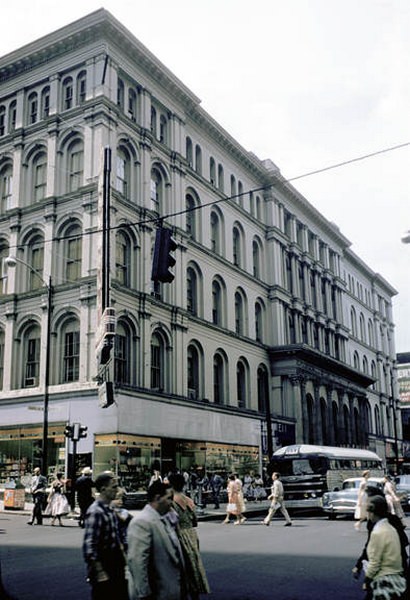
This five-story hotel was begun by John Overton in 1859, but the Civil War delayed its completion. It was used for barracks for both Union soldiers and Confederate prisoners during the war. It eventually opened for business as a hotel in 1869. The Maxwell House was known for the lavish Christmas dinners it provided and played host to a variety of dignitaries, including U. S. presidents, over the years. Joel Cheek named his blended coffee that was served in its restaurant for the hotel, creating Maxwell House Coffee. The building was located on the corner of 4th Avenue N. (formerly Cherry Street) and Church Street (formerly Spring Street) with the entrance opening onto 4th Avenue. It burned on Christmas Night, 1961 and the gutted remains were razed in 1962 for safety reasons. A bank was eventually built at the location.
#72 Mayor West with proclamation for Nashville Vols at Sulphur Dell, 1957
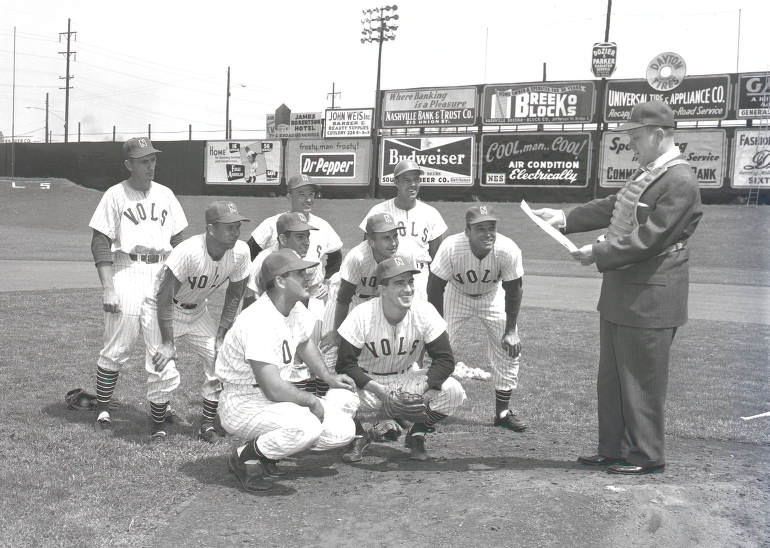
In 1957, former major-leaguer Dick Sisler assumed command of the team, and the Vols finished in third place in the Southern Association. Sisler was a player-manager and batted .332 while playing first base. Robert Kelly won 24 games to lead the league after leading the league in losses the previous season. The Sulphur Dell Historical Marker reads: “Nashville’s first (1885) professional baseball was played in the Athletic Park which formerly occupied this block. Traditionally baseball was introduced in Nashville in 1862 by soldiers of the Union army of occupation who played the game here. This low-lying area, originally called Sulphur Spring Bottom, was first called “Sulphur Dell” by local sports writer, Grantland Rice. In 1963 this was the oldest playing grounds still in use in professional baseball. Sulphur Dell was demolished in 1969.
#73 Minnie Pearl with Jim Perkins and others at Zibart’s Book Store, 1954
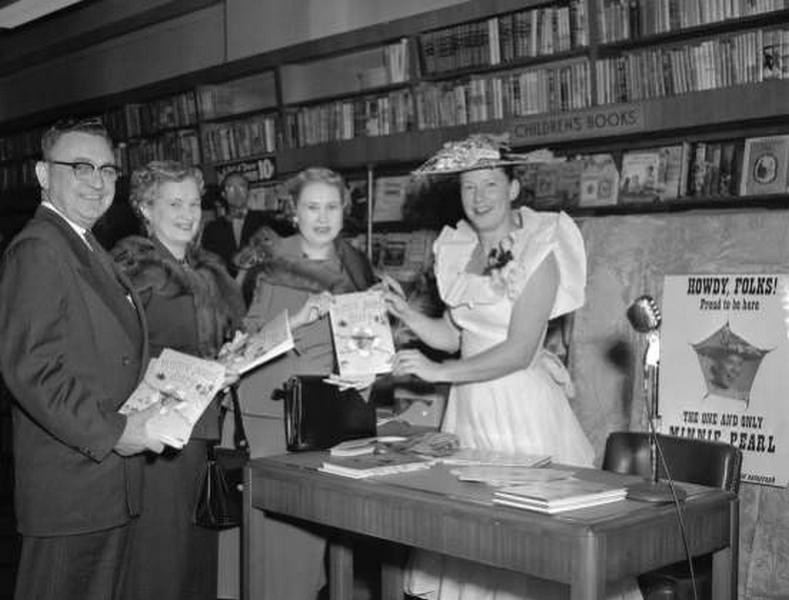
Sarah Ophelia Colley Cannon, known professionally as Minnie Pearl, was an American country comedian who appeared at the Grand Ole Opry for more than 50 years and on the television show Hee Haw from 1969 to 1991. The book signing event featured Minnie Pearl autographing copies of her book “Minnie Pearl’s Diary,” self-published in 1953.
#74 NASCAR 100-mile race at the Nashville Fairgrounds Speedway, 195
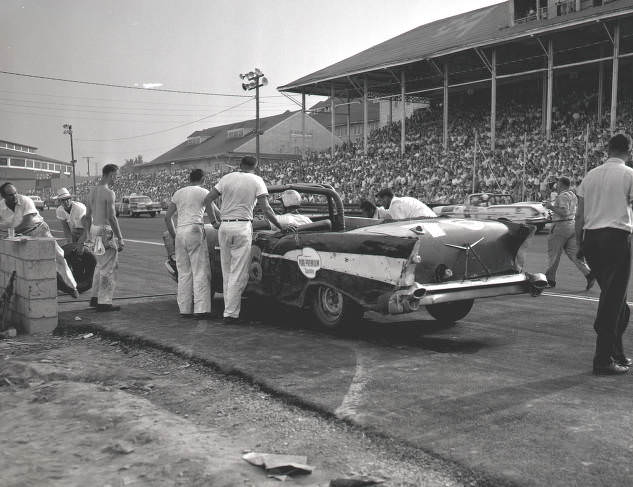
This was when the Grand National series came to the Nashville Fairgrounds’ half-mile asphalt oval. Rex White grabbed the pole in the 200-lap race but ended up with a 23rd place finish after a right front wheel break while leading in lap 162. The race was won by Joe Weatherly in a 1958 H-M Ford and he collected $1850 for his winnings. Second place went to Bob Welborn. The event was attended by a big crowd of nearly 14,000.
#75 Nashville Bridge Company barge launching on the Cumberland River, 1951
#76 Nashville Bridge Company off-street parking, 1953
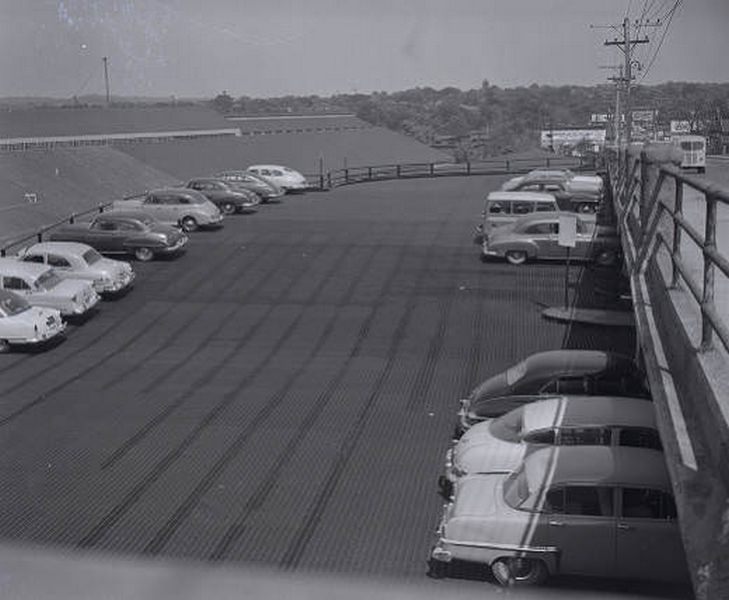
The McCann Steel Company at 400 2nd Avenue S can be seen in the background. The Cumberland Oil Company is on the right at 106 Shelby Avenue 6. The Nashville Bridge Company was organized in 1902 by Mr. A. J. Dyer. Through the years, the Company experienced a continuous and expanding development, with main operations of fabricating and erecting structural steel for buildings, bridges and towers. During World War II, there was a direction towards building combat vessels and barges for the Army and Navy. The Marine Department of the Nashville Bridge Company built barges and towboats.
#77 Nashville Bridge Company, 1953
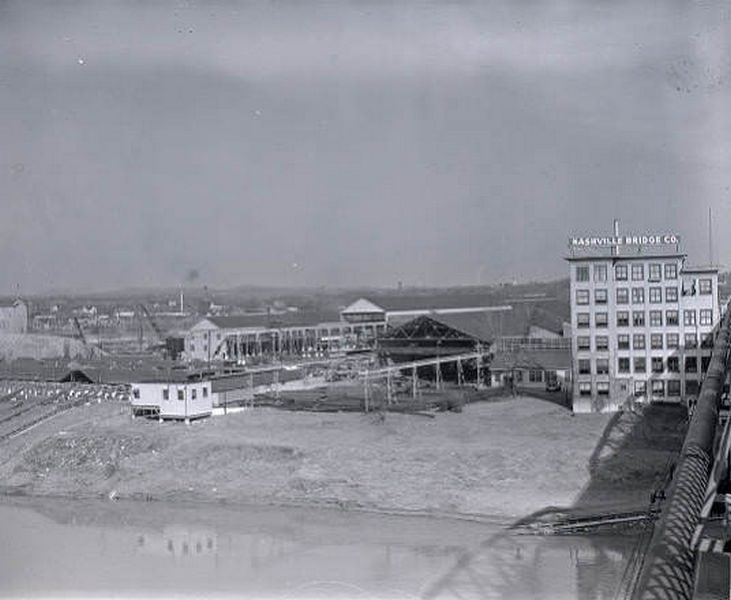
The Nashville Bridge Company was organized in 1902 by Mr. A. J. Dyer. Through the years, the Company experienced a continuous and expanding development, with main operations of fabricating and erecting structural steel for buildings, bridges and towers. The Marine Department of the Nashville Bridge Company built barges and towboats. As early as WWI, they filled contracts for the United States Navy, building ships and barges. During World War II, there was increased production of combat vessels and barges for the Army and Navy. Vultee and Nashville Bridge Company accounted for 72% of the city’s war supply contracts.
#78 Nashville Bridge Company, 1957
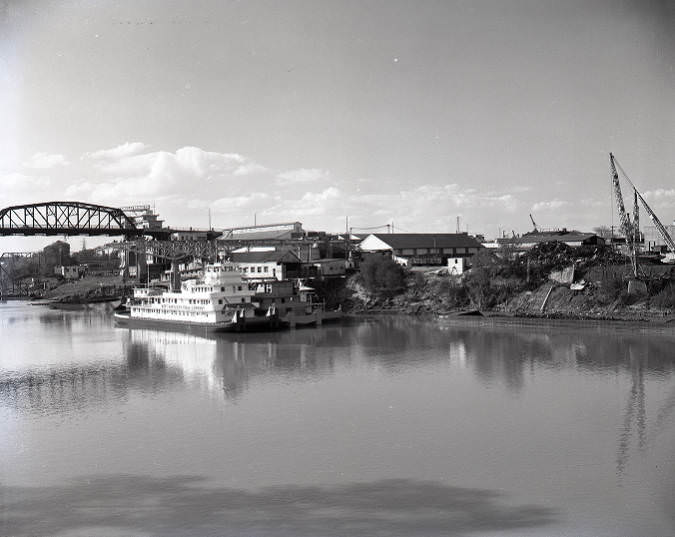
The Nashville Bridge Company was organized in 1902 by Mr. A. J. Dyer. Through the years, the Company experienced a continuous and expanding development, with main operations of fabricating and erecting structural steel for buildings, bridges and towers. The Marine Department of the Nashville Bridge Company built barges and towboats. As early as WWI, they filled contracts for the United States Navy, building ships and barges. During World War II, there was increased production of combat vessels and barges for the Army and Navy. Vultee and Nashville Bridge Company accounted for 72% of the city’s war supply contracts. The Shelby Street Bridge spans the Cumberland River.
#79 Nashville Business – Cherry’s Café, 1953
#80 Nashville Business – Nashville Photo Service, 1951
#81 Nashville Business – Neuhoff Packing Company, 1951
#82 Nashville Electric Service building, 1952
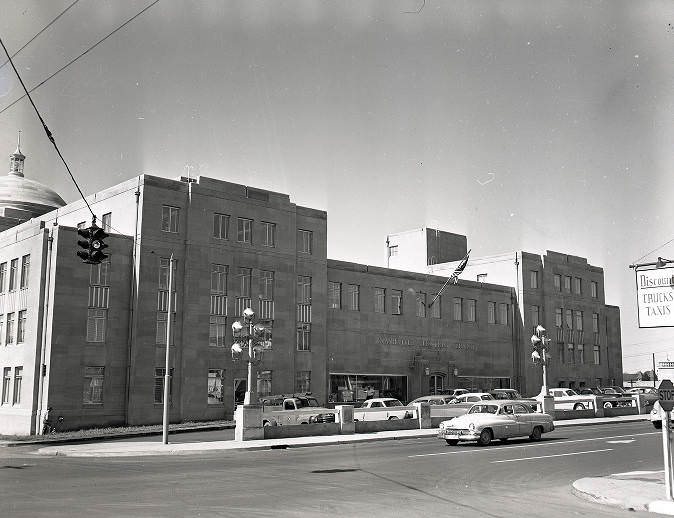
Exterior views of the Nashville Electric Service (NES) building, September 1952. The architectural design includes a large dome on top of the building. The Nashville City Directory (1954) cites Leonard Sisk, Genl. Mgr., at 1200-98 Church Street at 13th Avenue N 3. NES is one of the largest public electric utilities in the nation, founded in 1939 when the Tennessee Valley Authority purchased the assets of the Tennessee Electric Power Co. and the newly created Nashville Electric Service was established.
#83 Nashville Police Department vehicles and officers at the Parthenon, 1950s
#84 Nashville Police Department vehicles and officers at the Parthenon, 1950s
#85 Nashville Vols versus All-Star team at Sulphur Dell, Nashville, Tennessee, 1957
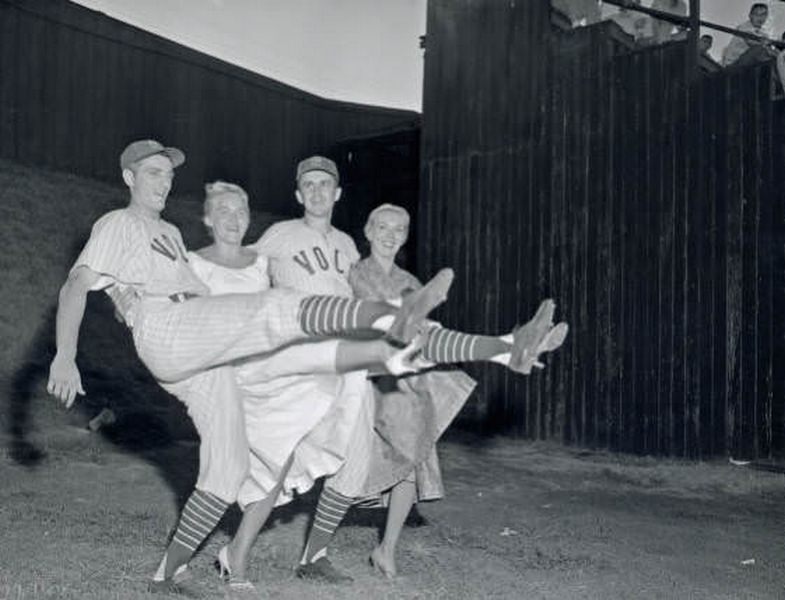
Sulphur Dell was the home of the Nashville Vols in the Southern Association from 1901 until 1961 and in the South Atlantic League in 1963. According to the Sulphur Dell historical marker: “Nashville’s first (1885) professional baseball was played in the Athletic Park which formerly occupied this block. Traditionally baseball was introduced in Nashville in 1862 by soldiers of the Union army of occupation who played the game here. This low-lying area, originally called Sulphur Spring Bottom, was first called “Sulphur Dell” by local sports writer, Grantland Rice. In 1963 this was the oldest playing grounds still in use in professional baseball.” The historical marker is on Fourth Avenue near where the centerfield fence once stood.
#86 Nashville Youth Orchestra presents their instruments, 1951
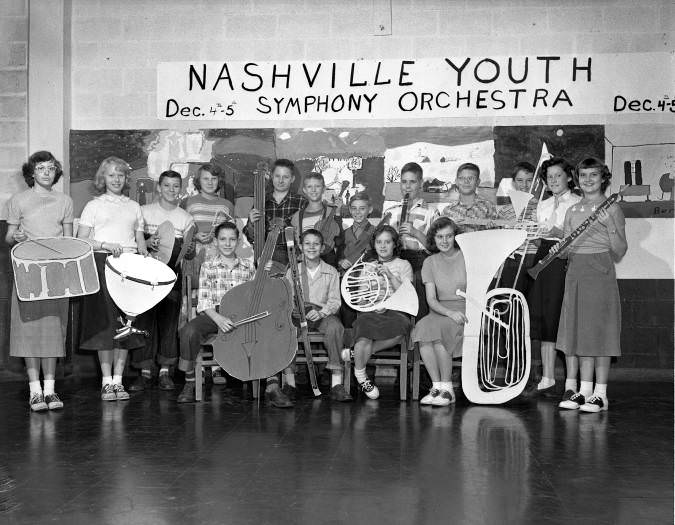
A photograph of the seventh and eighth grade Nashville Youth Orchestra holding paper replicas of their instruments made at the Julia Andrews School, in the Berry Hill neighborhood off Thompson Lane.
The Nashville Youth Orchestra gave the first of its season concerts at War Memorial Auditorium. Front row (seated, left to right): Calvin Hollon, Don Hite, Shirley Taylor, Jeannette White
Back row: Polly Ash, Barbara Ashcraft, Jimmy Newsom, Lois Tidwell, Bobby Cato, Gerald Cannon, Elmer Christian, Wylie Hembre, Henry Harris, Roger Marks, Ellen Chandler, Janie Krise.
#87 One African American in a long voting line in Clinton, Tennessee, 1956
#88 Pat Boone, King of Fire Prevention Week, 1953
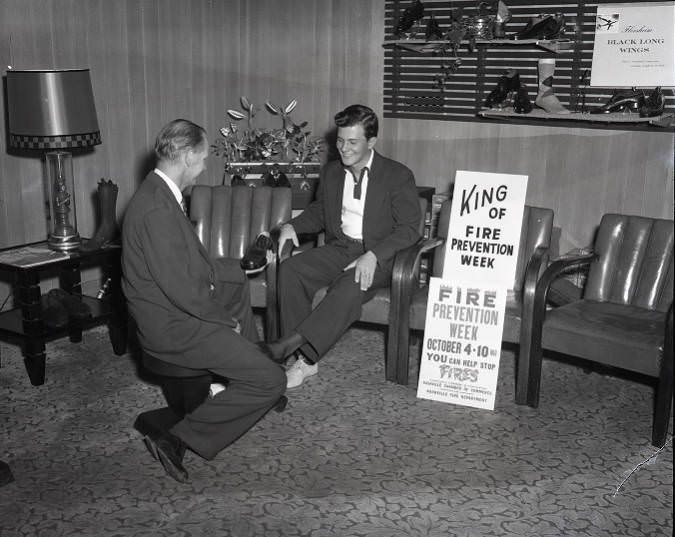
Boone was elected the King of the Fire Prevention Week in Nashville, Tennessee, held October 4th - 10th, 1953. Charles Eugene “Pat” Boone (born June 1, 1934) was born in Jacksonville, Florida and his family moved to Nashville when he was two years old. He attended and graduated from David Lipscomb High School in Nashville in 1952. Boone has claimed to be a direct descendant of the American pioneer Daniel Boone.
#89 Phil Harris at Sulphur Dell ballpark and WSM, Nashville, Tennessee, 1951
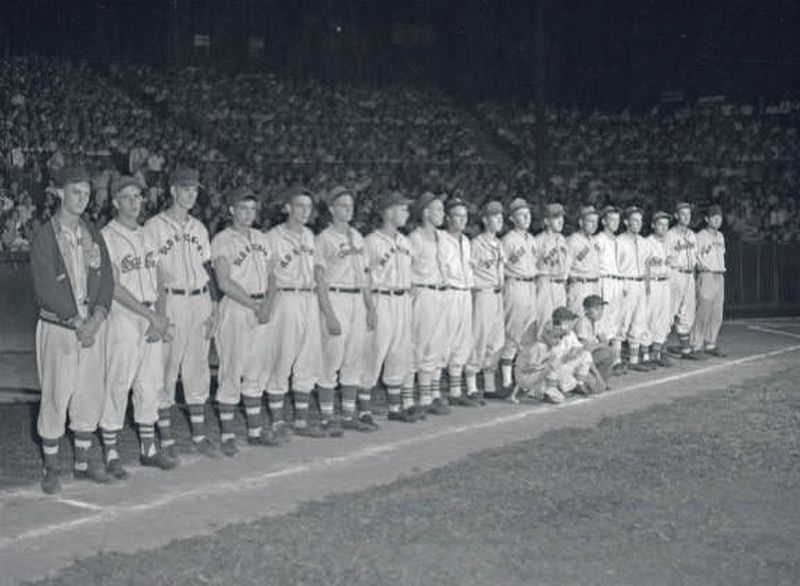
Harris was presented a “Phil Harris Day” proclamation by Mayor Ben West on July 27th, 1951, and there was lots of entertainment including baseball and clowns, with an evening show that featured singer Phil Harris and the band performing music that was broadcast live via WSM radio. Phil Harris (birth name: Wonga Philip Harris) was born in Indiana and grew up in Nashville, Tennessee.
He led a distinguished career as a bandleader, singer, musician, actor, and comedian. Harris became a very well-known voice actor for animated films, such as Disney’s “The Jungle Book” and “Robin Hood” and “The AristoCats.” Harris has two stars on the Hollywood Walk of Fame.
#90 A second story window and the porchtop of Lynnlawn mansion in Nashville, Tennessee, 1959
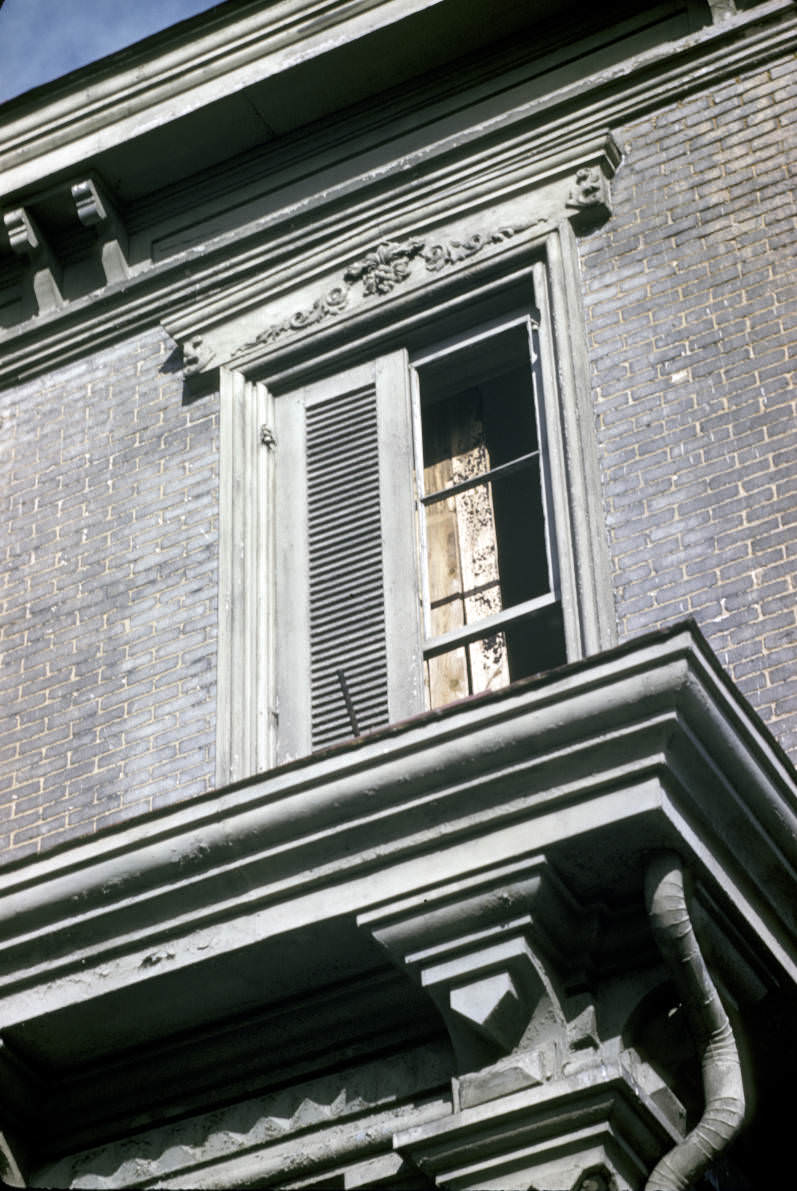
Designed in the Italian Renaissance style, the facade of the architecture has been attributed to William Strickland. The mansion was located at 617 Gallatin Road, between Stratton and Eastland, adjacent to 12th Street. It remained in the Stratton family until sold to H. G. Hill in the late 1950's. The structure was razed for commercial development.
#91 Du Pont, Old Hickory rayon plant is “World’s Safest Plant,” 1953
#92 Easter Egg Hunt at the Colemere Club, Nashville, Tennessee, 1958
#93 Fairgrounds Speedway, Nashville, Tennessee, 1958
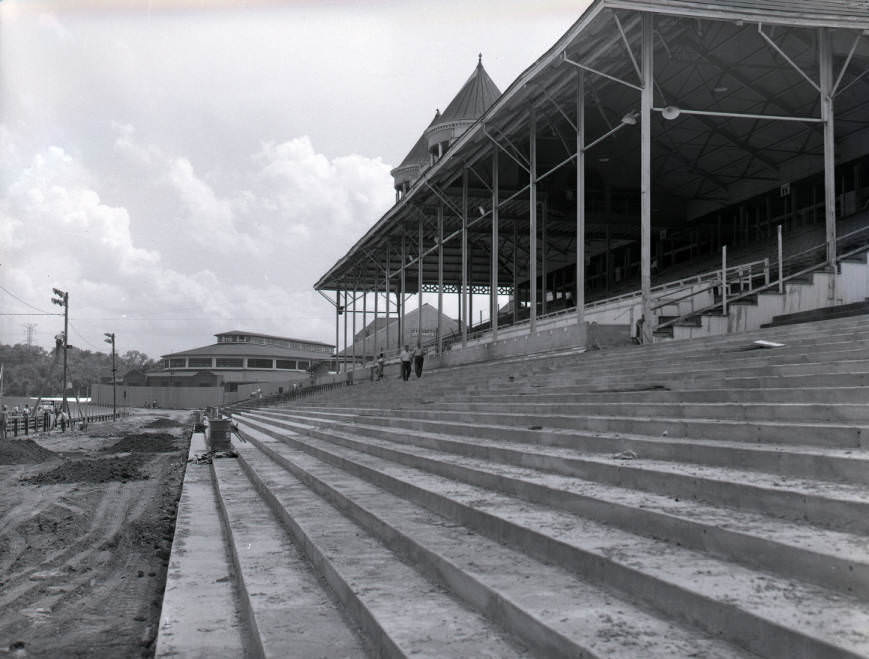
This was during a facility improvement period with new seats, new layout, and a new track. The fairgrounds, located approx. one mile south of downtown Nashville, opened in 1891 as Cumberland Park. The park was built as a harness racing track with a grandstand that seated 7,000 people. In 1904 the harness racing track hosted its first automobile race. In 1906 the first Tennessee State Fair was held. Over the years, the fairgrounds have been host to nighttime airplane rides, a swimming pool, an amusement park, and stock car races, among other things. In 1965 a fire at the fairgrounds destroyed several buildings, the grandstands and numerous restaurants. Today the fairgrounds are used for various conferences, expos, and trade shows, along with the annual Tennessee State Fair.
#94 Fairgrounds Speedway, Nashville, Tennessee, 1958
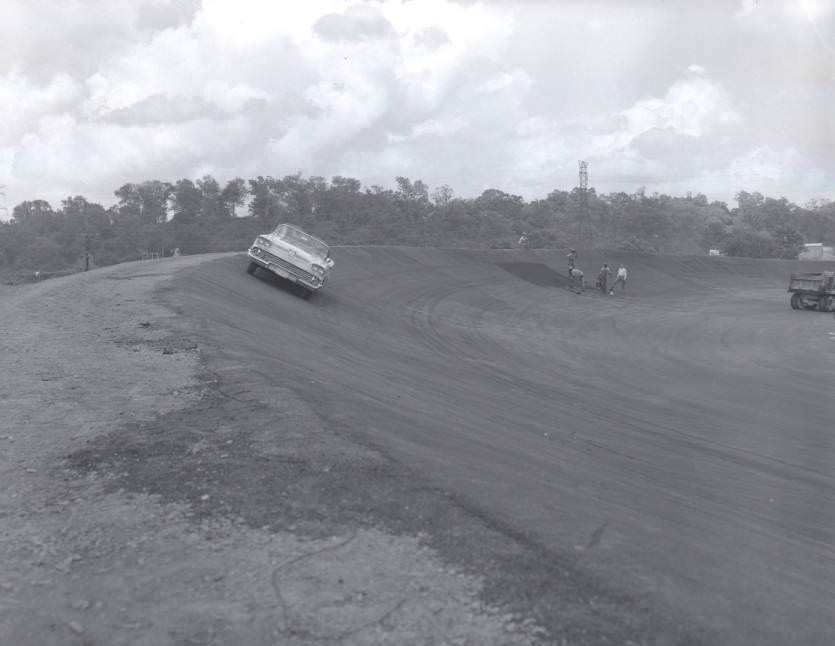
In this photo “starter Bennie Goodman illustrates the steep half-mile banked turns in his car.” This was during a facility improvement period with new seats, new layout, and a new track. The fairgrounds, located approx. one mile south of downtown Nashville, opened in 1891 as Cumberland Park. The park was built as a harness racing track with a grandstand that seated 7,000 people. In 1904 the harness racing track hosted its first automobile race.
#95 Fairgrounds Speedway, Nashville, Tennessee, 1958
#96 Felts Grocery, East Nashville, 1956
#97 Felts Grocery, East Nashville, 1956
#98 Victory Memorial Bridge steel erection, Nashville, Tennessee, 1953
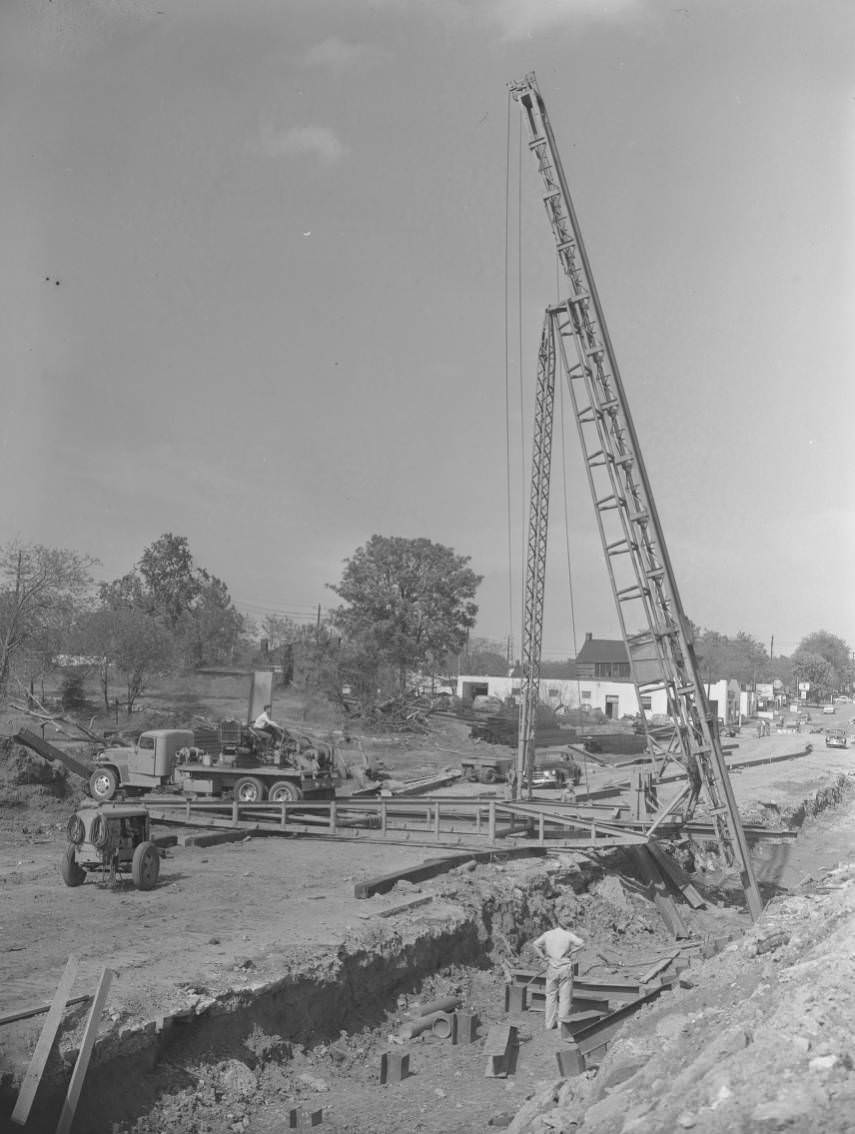
This bridge connects the public square and the central business district, on the western side of the Cumberland River, to Main Street in East Nashville. M. S. Poteat’s firm was contracted to building the bridge approaches, as well as the bridge substructure. For the final phase, the superstructure and decking, the contract went to the Nashville Bridge Company. State engineer Roy Higgs was in charge of the project.
The Victory Memorial Bridge originated in part from a 1948 public movement to recognize Nashville and Davidson County military soldier casualties from World War II; officials later favored a joint memorial including Korean war names. Constructed of 1,900 feet of modern steel in stone, it officially opened May 19, 1956, with Mayor Ben West cutting the ribbon and reading a poem titled “The Bridge Builder” by local poet Miss Will Allen Dromgoole.
#99 Waiting room at Union Station, Nashville, Tennessee, 1958
#100 Warmth of Nativity scene enfolds throng at Centennial Park scene, Nashville, Tennessee, 1956
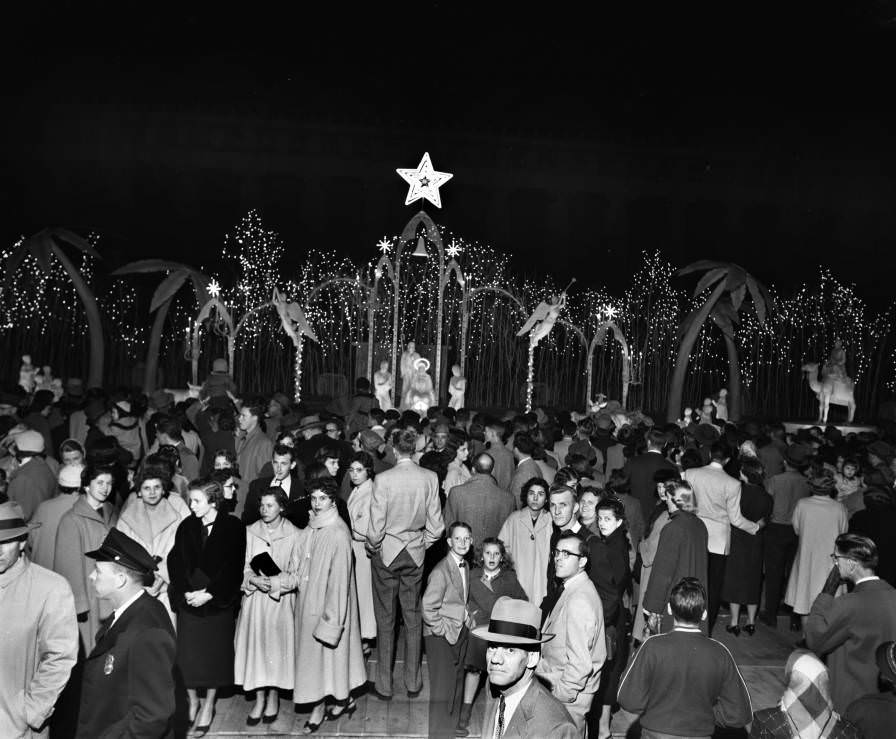
This article appeared in the Nashville Banner newspaper with similar photographs on December 3, 1956: "Nashvillians by the thousands took part in a pilgrimage Sunday night - drawn to Centennial Park by the beauty of the Nativity Scene … approximately 10,000 people stood on the wide lawn before and at the sides of the display or remained in cars parked in every space. Automobiles turning into roads bringing them to and before the scene, created with their slow-moving headlights the effect of a gigantic candlelight service."
#101 West End Avenue at Seventeenth, Nashville, Tennessee, 1951
#102 West End Avenue at Seventeenth, Nashville, Tennessee, 1951
#103 West End Avenue at Seventeenth, Nashville, Tennessee, 1951
#104 Marine rocket crew in action, 1951 August
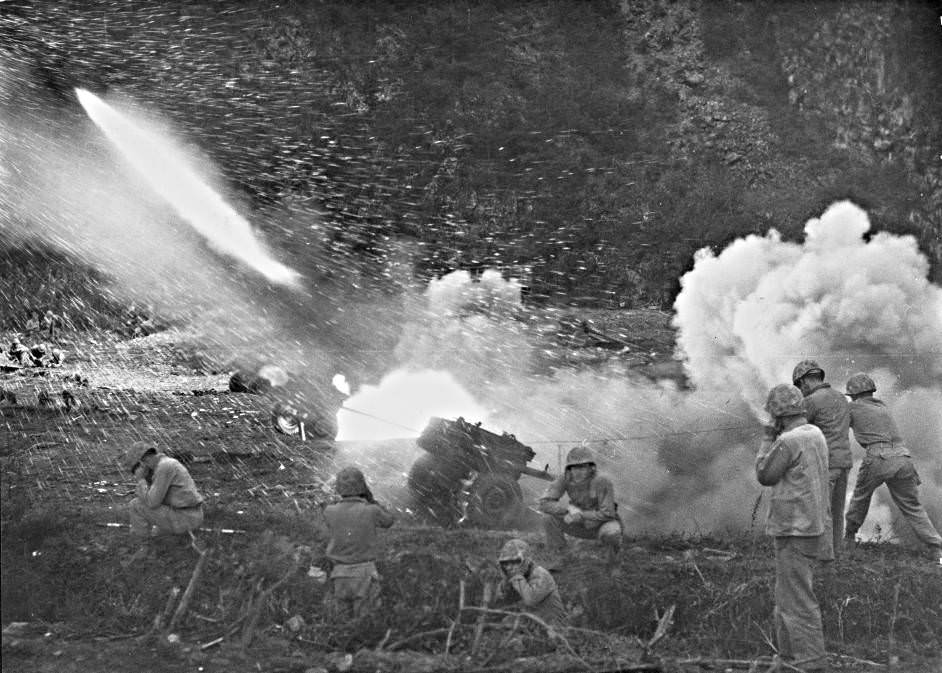
Scene shows smoke, sparks, and flame from launched rocket, as well as seven Marines squatting and standing next to rocket launcher. This unit fired 122 rockets in a single evening when the photograph was taken. The photograph was taken by Bill Goodman, a Marine Corps combat photographer with the First Marine Division in both South and North Korea in 1951 during the Korean War. He was later employed by the Nashville Banner newspaper as a photographer from 1955 to 1990.
#105 Mrs. Coretta Scott King , Reverend Kelly Miller Smith, and Mrs. D. Conrad Gandy, First Baptist Church, Nashville, 1958
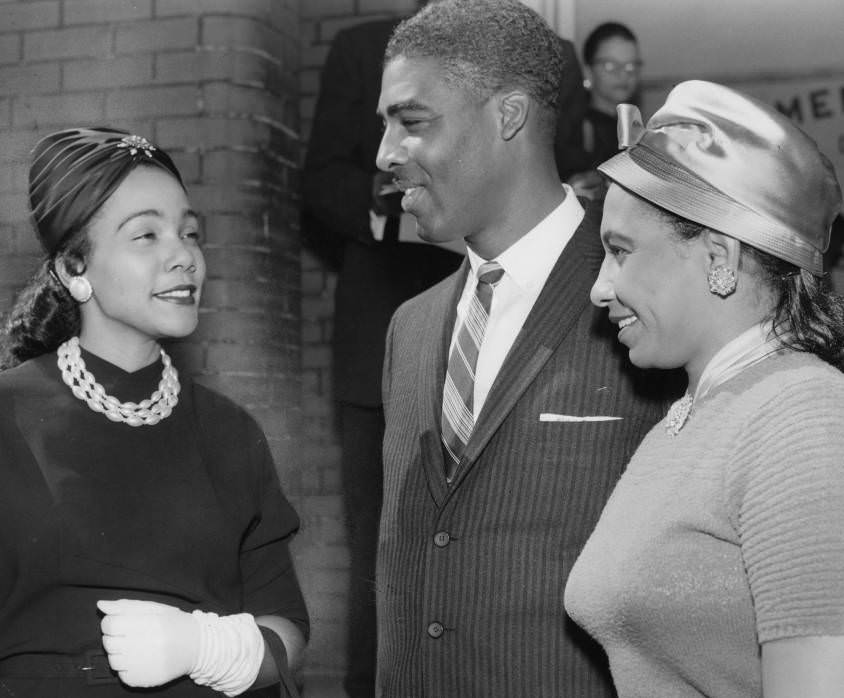
A photograph of Coretta Scott King, Reverend Kelly Miller Smith and Mrs. D. Conrad Gandy at First Baptist Church, Nashville, Tennessee, October 20, 1958. Mrs. King addressed the group at a Women's Day program at First Baptist Church, 8th Avenue North, Nashville, Tennessee. During her speech, Mrs. King said: "We must not stop until freedom becomes a reality." Her appearance in Nashville was just weeks after her husband, Dr. Martin Luther King, Jr. was stabbed in New York City.
#106 Photograph of Nashville ice storm, 1951
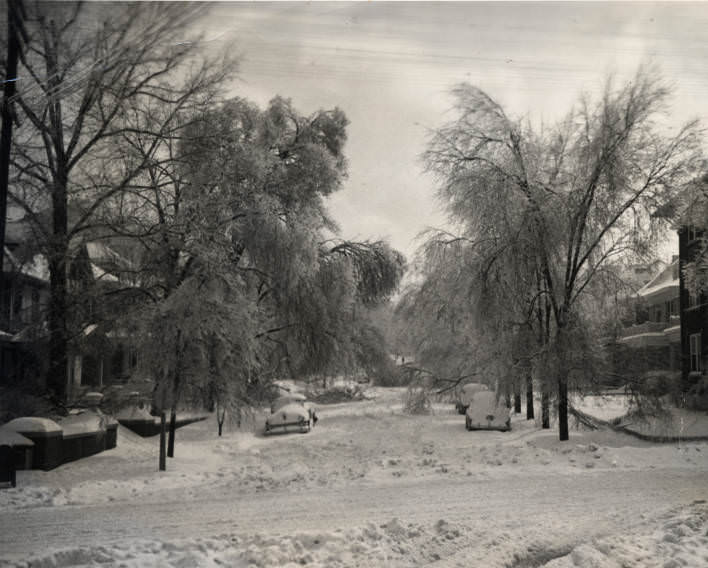
A photograph of a residential street in the Hillsboro/Belmont area during the record breaking snow and ice storm of 1951. Bone chilling weather brought sub-zero temperatures to most of Tennessee during a winter storm spanning January 31st through February 2nd of 1951. This three-day storm blanketed the western two-thirds of the state with eight inches of snow and ice. Nashville's temperature reached a low of 13 degrees below zero on February 2nd according to the official U.S. Weather Bureau thermometer. An estimated 20,000 homes were left without power, while approximately 1,500 telephones were out of service. Nashville's public transportation system was shut down, and only a handful of private automobiles were able to move along the snow and ice covered roads.
#107 Nashville Public Library staff members shelving books in the bookmobile, 1955
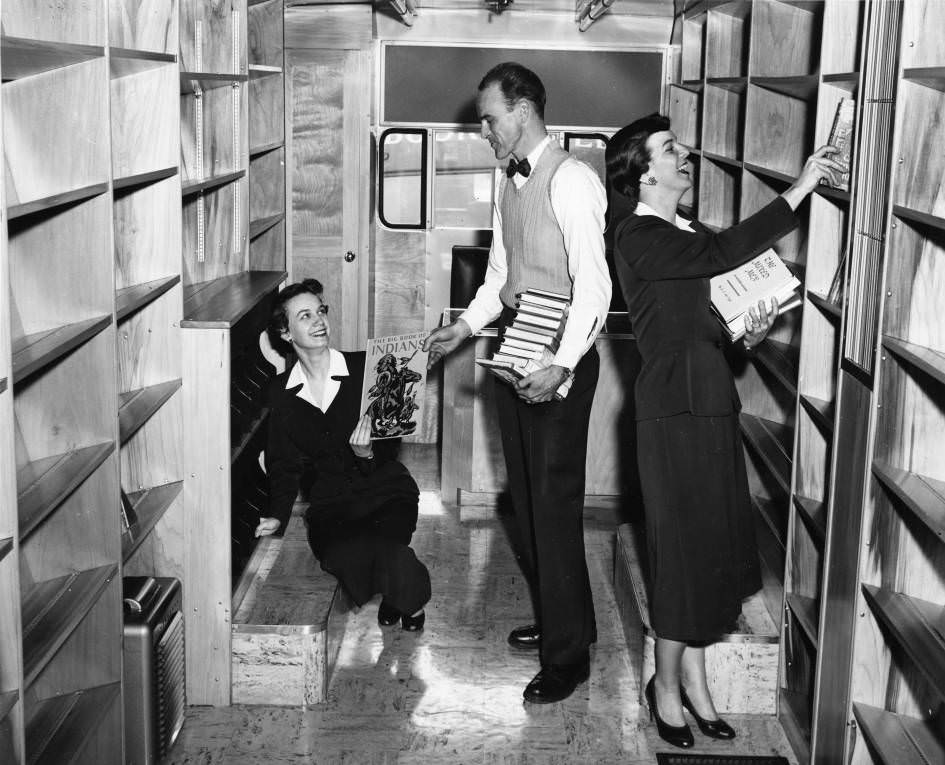
A photograph of Nashville Public Library staff members placing books on the shelves of the Nashville Public Library bookmobile, circa April 1955. This particular bookmobile was in service from 1954-1973, with approximately 3000 volumes aboard the vehicle. The staff members pictured in the photograph (from left to right) are Miss Diane O'Donnell, assistant librarian, Paul Law, driver and assistant; and Mrs. Grace Darden, librarian. The bookmobile service in Davidson County, Tennessee originally began in the 1940's, when the State Library Project furnished a bookmobile which made weekly demonstration rounds through the county. In 1947, the Nashville Public Library initiated the "library-on-wheels" bookmobile service; by 1956, service had been extended to all of Davidson County.
#108 Staff members in front of a Nashville Public Library bookmobile, 1955
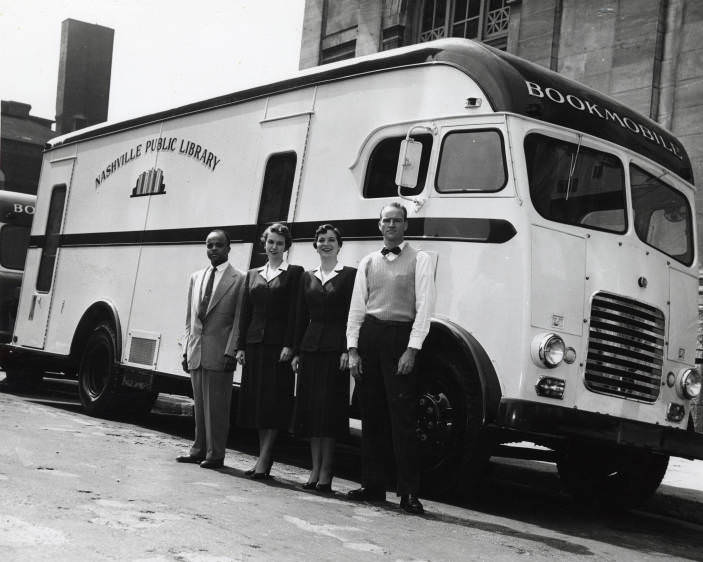
This particular bookmobile was in service from 1954-1973, with approximately 3000 volumes housed aboard the vehicle. Bookmobile staff (pictured from left to right) are an unidentified person, Miss Diane O'Donnell, Mrs. Grace Darden, and Paul Law, Driver. The bookmobile service in Davidson County, Tennessee began in the 1940's, when the State Library Project furnished a bookmobile which made weekly demonstration rounds through the county. In 1947, the Nashville Public Library initiated the bookmobile service; by 1956, service had been extended to all of Davidson County. Approximately 3000 volumes were housed aboard the vehicle.
#109 Tennessee Governor Frank Clement and son Robert, 1955
#110 The circulation desk of the Nashville Public Library, 1955
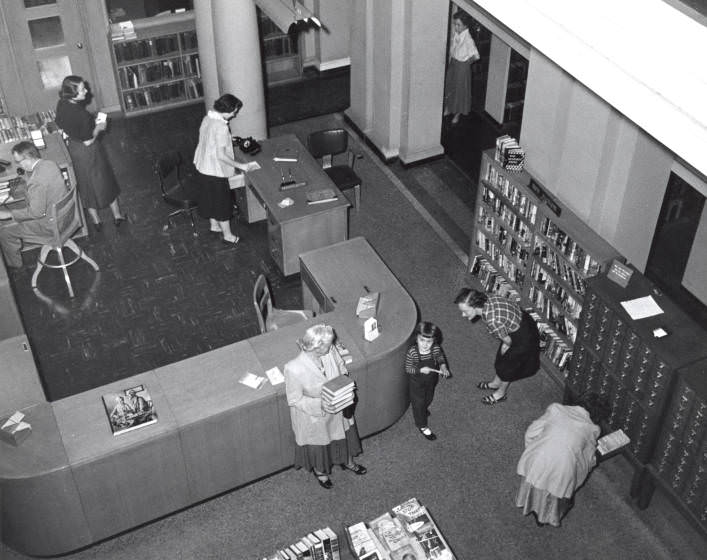
Originally established as the Carnegie Library of Nashville, the building was located at 8th Avenue North and Union Street in Nashville, Tennessee. Pictured in the photograph are Dr. Robert S. Alvarez, Director, Peggy Benson, Mary Stone, and Lillias Burns. The pubic library building was constructed with a $100,000 grant from philanthropist Andrew Carnegie, and the cornerstone was laid on April 27, 1903. Officially opened to the public on September 19, 1904, the building was located at 8th Avenue North and Union Street. The Carnegie Library of Nashville was renamed the Nashville Public Library in 1934, being active at this location until 1963, when the new Metropolitan Government began construction on a new main library upon the site.
#111 Interior of the Nashville Public Library bookmobile, 1957
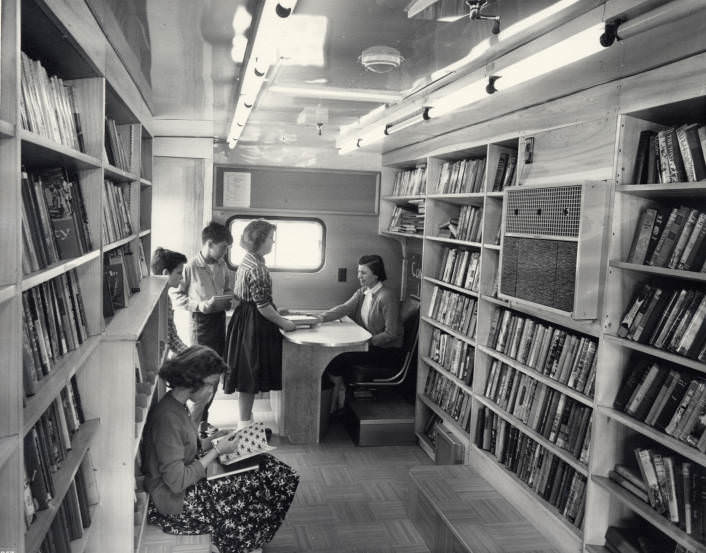
The bookmobile service in Davidson County, Tennessee originally began in the 1940's, when the State Library Project furnished a bookmobile which made weekly demonstration rounds through the county. In 1947 the Nashville Public Library initiated the "library-on-wheels" bookmobile service; by 1956, service had been extended to all of Davidson County.
#112 The Nashville Public Library bookmobile, 1957
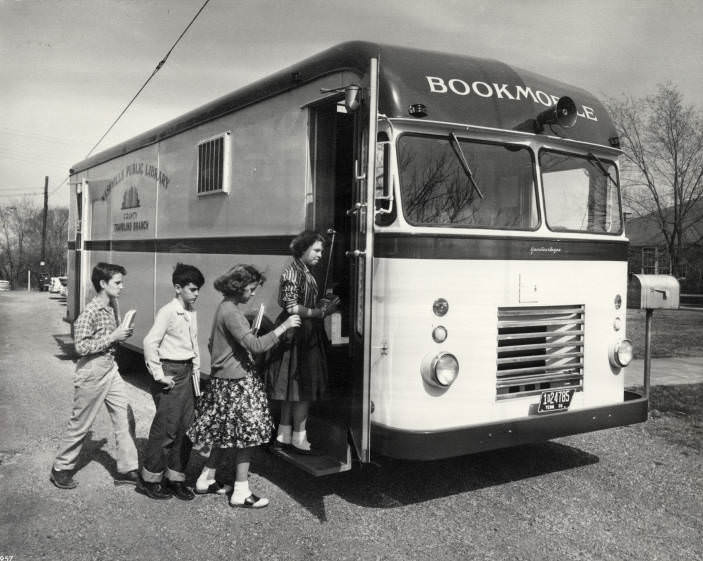
A photograph of eager young readers boarding the "traveling branch" bookmobile of the Nashville Public Library, circa 1957. The bookmobile service in Davidson County, Tennessee originally began in the 1940's, when the State Library Project furnished a bookmobile which made weekly demonstration rounds through the county. In 1947, the Nashville Public Library initiated the "library-on-wheels" bookmobile service; by 1956, service had been extended to all of Davidson County.
#113 Old Elks Lodge in downtown Nashville, Tennessee, 1959
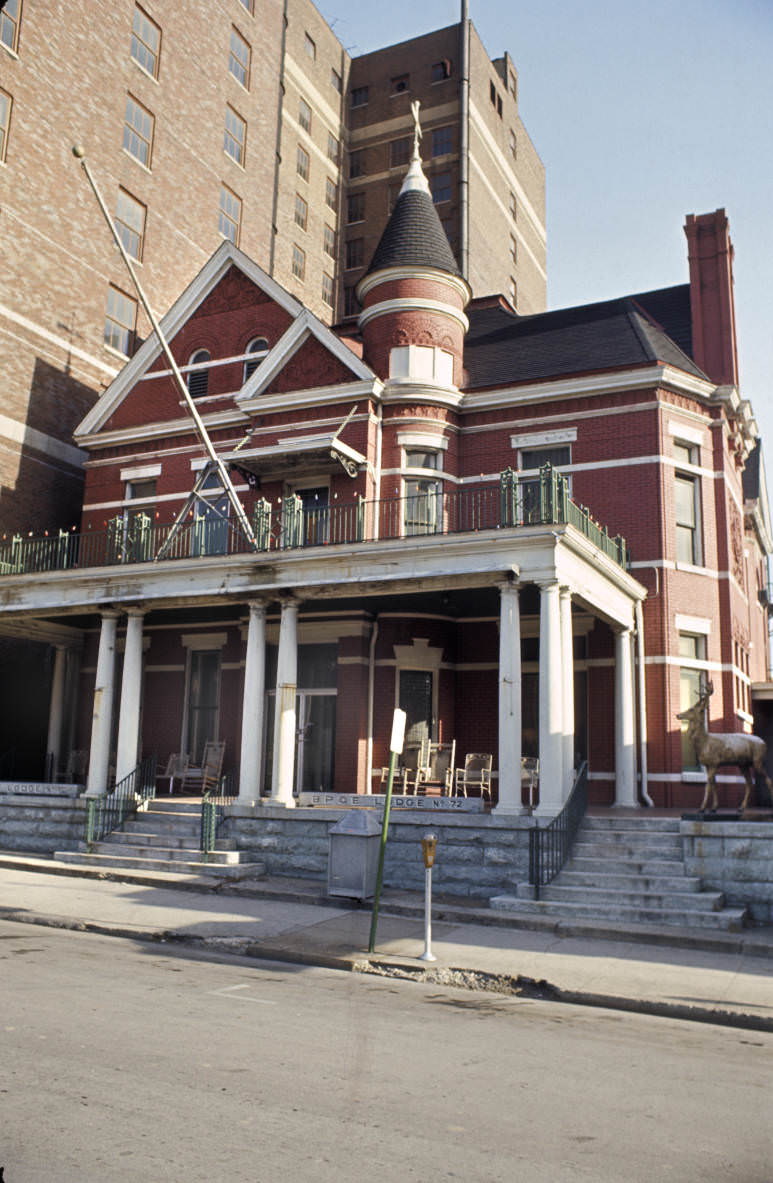
A photograph of the old Elks Lodge no. 72, located at 310 6th Avenue North, bordered by Deaderick Street, in downtown Nashville, Tennessee. The lodge was home to the Elks, beginning in 1904, serving numerous community functions and charity projects for the next several decades. The adjacent high-rise building is the Andrew Jackson Hotel. Both the Andrew Jackson Hotel and the old Elks Club lodge are non-extant architecture. The exact date of the construction of the Elks Lodge is unknown, although it appears as a dwelling on the 1888 fire insurance maps. The building housed the lodge offices, a library, and entertainment facilities.
#114 The porch of Lynnlawn mansion in Nashville, Tennessee, 1959
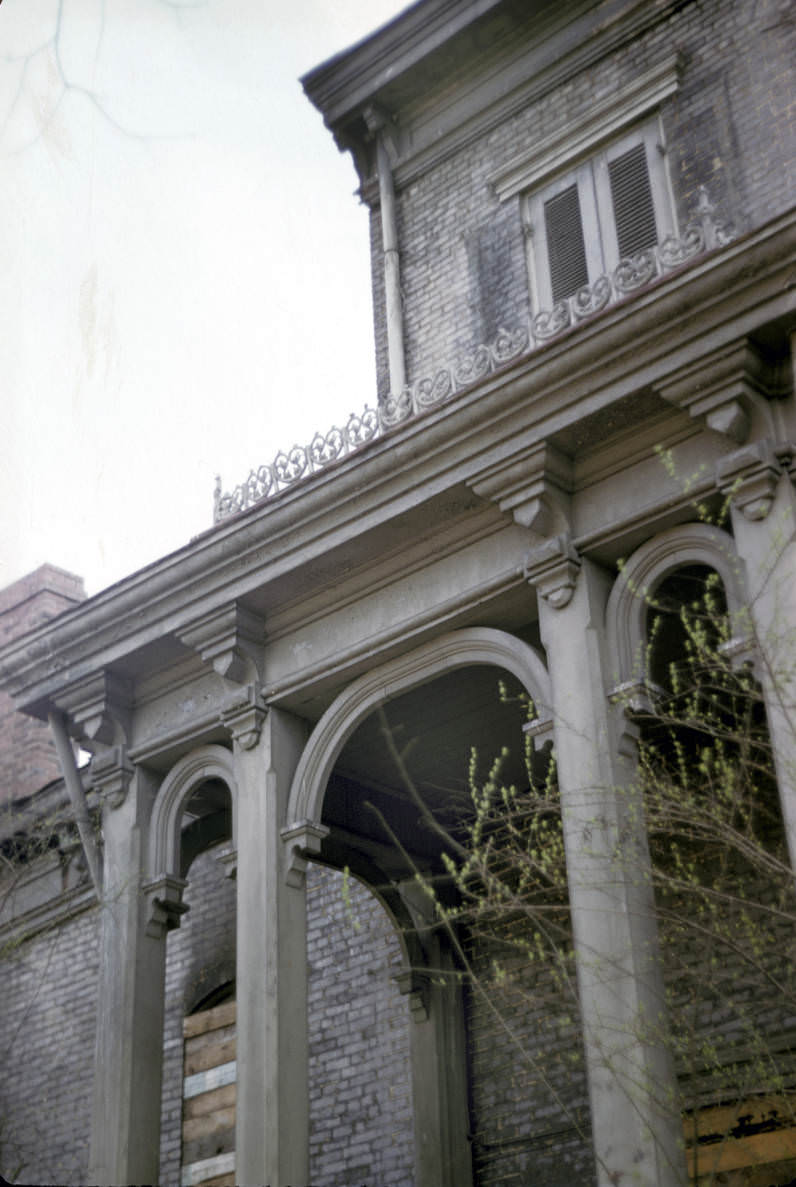
Designed in the Italian Renaissance style, the architectural facade has been attributed to William Strickland. The mansion was located at 617 Gallatin Road, between Stratton and Eastland, adjacent to 12th Street. It remained in the Stratton family until sold to H. G. Hill in the late 1950's. The structure was razed for commercial development.
#115 The reading room of the Nashville Public Library, 1953
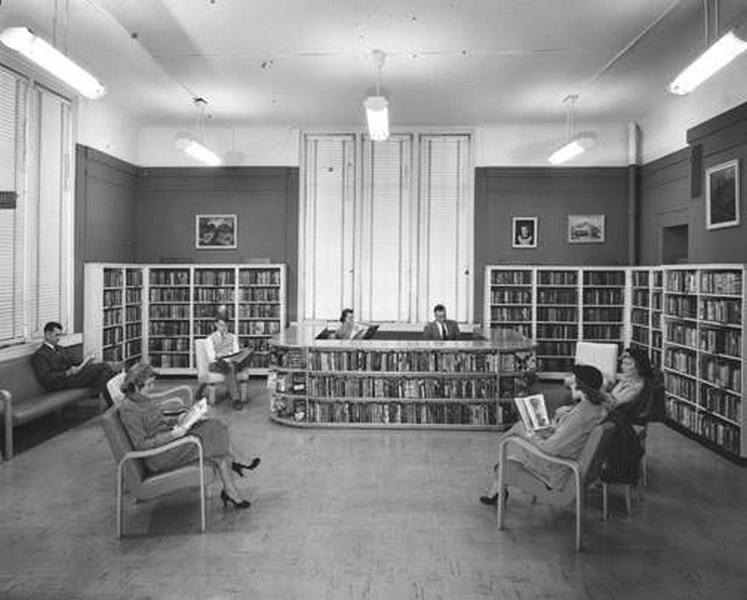
The patrons are reading books, with the staff on duty at the service desk. The public library building was constructed with a $100,000 grant from philanthropist Andrew Carnegie, and the cornerstone was laid on April 27, 1903. Officially opened to the public on September 19, 1904, the building was located at 8th Avenue North and Union Street. The Carnegie Library of Nashville was renamed the Nashville Public Library in 1934, being active at this location until 1963, when the new Metropolitan Government began construction on a new main library upon the site.
#116 Workshop participants at Highlander Folk School, Monteagle, Tennessee, 1957
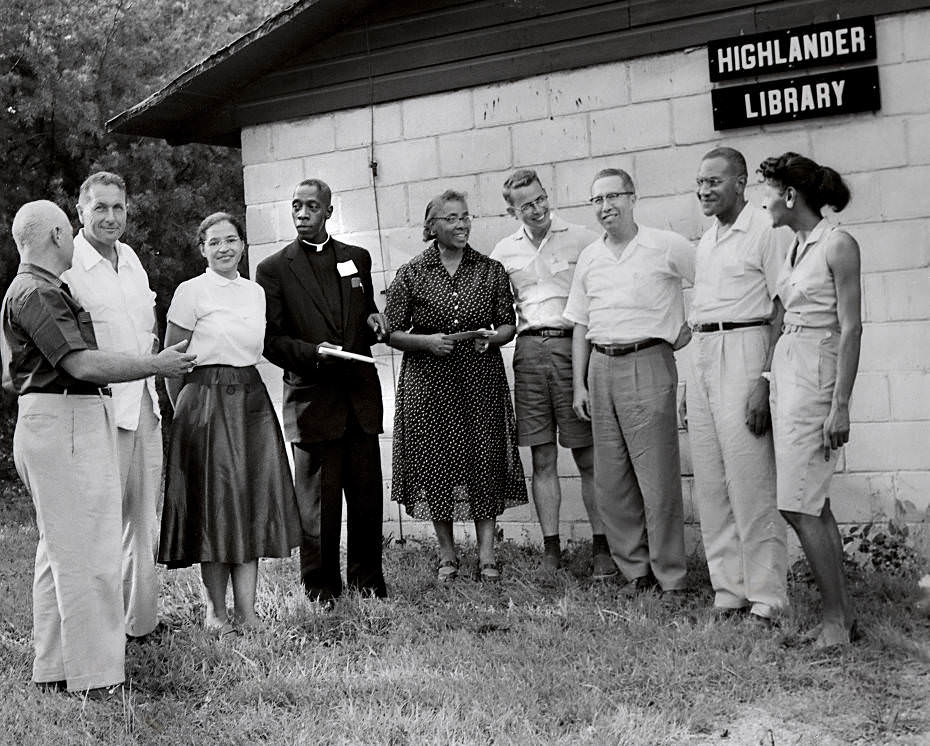
Myles Horton and Don West founded Highlander Folk School in Grundy County, Tennessee, 1932. Highlander became a center for biracial meetings and workshops, where some of the most important figures of social movements studied. Pictured from left to right: Ralph Helstein, Myles Horton, Rosa Parks, unidentified man, Septima Poinsette Clark, unidentified man, unidentified man, Charles Gomillion, and Bernice Robinson.
#117 Printer’s Alley, Nashville, Tennessee, 1953
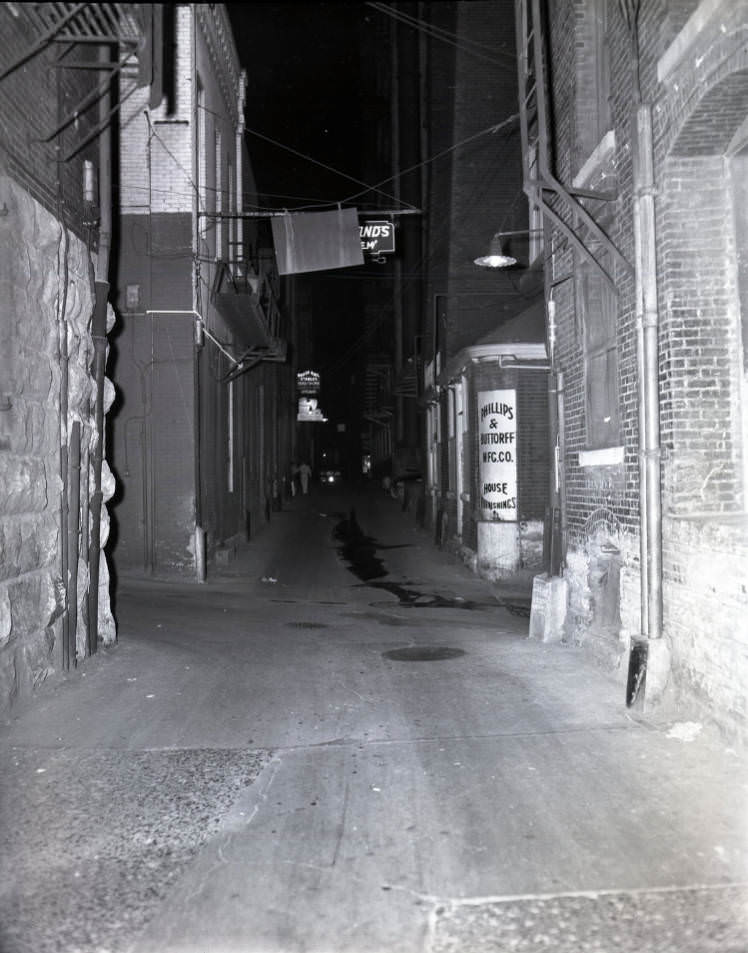
Printer’s Alley is named for Nashville’s publishing and printing industry that started in this immediate area before the turn of the twentieth century. During the 1920s’ Prohibition, there were several speakeasies in the alley. During the 1940s, nightclubs opened in the alley when the entertainment district was a showcase for the talents of performers such as Boots Randolph, Chet Atkins, Waylon Jennings, Dottie West, Hank Williams, Barbara Mandrell, and Jimi Hendrix. Printer’s Alley continues to be a popular entertainment destination for both locals and tourists. Printer’s Alley is a National Register Historic District.
#118 Printer’s Alley, Nashville, Tennessee, 1958 February
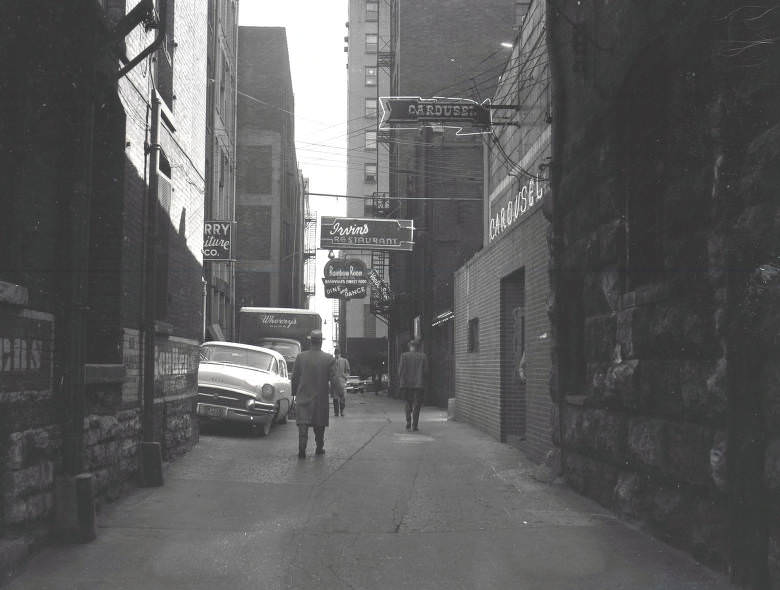
The businesses pictured in this photo are: Irvin’s Restaurant, Rainbow Room, Carousel, Wherry Furniture Company, and the VooDoo Room. Printer’s Alley is named for Nashville’s publishing and printing industry that started in this immediate area before the turn of the twentieth century. During the 1920s’ Prohibition, there were several speakeasies in the alley. During the 1940s, nightclubs opened in the alley when the entertainment district was a showcase for the talents of performers such as Boots Randolph, Chet Atkins, Waylon Jennings, Dottie West, Hank Williams, Barbara Mandrell, and Jimi Hendrix.
#119 Ribbon cutting for the American Airlines office at Sixth Avenue, Nashville, Tennessee, 1958
#120 Richard Nixon visits Nashville during campaign, 1952
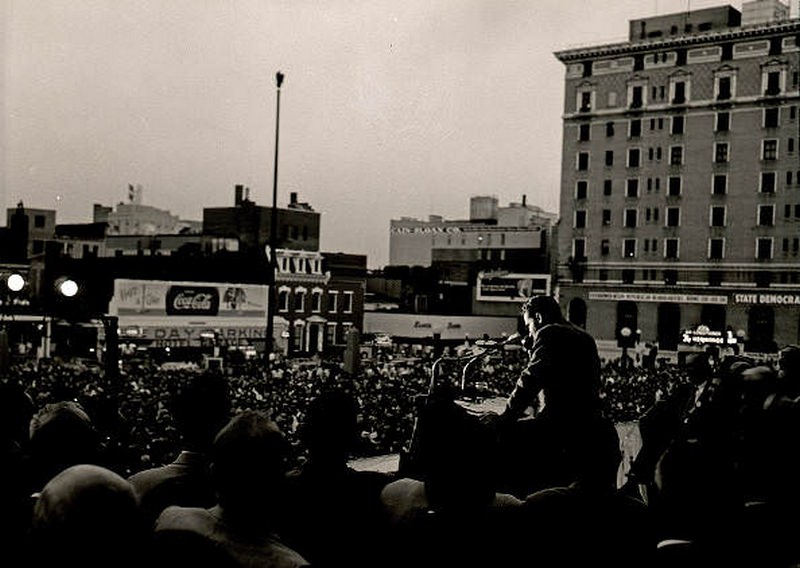
Vice-presidential candidate Richard Nixon and wife Patricia visited Nashville during his campaign rally and public address at Memorial Square in downtown Nashville on September 27, 1952. Nixon was Dwight D. Eisenhower’s running mate, as the vice-presidential candidate. Only a few days before his arrival in Nashville, Nixon had appeared on television to publicly deny improper use of funds in the famous “Checkers” speech televised on September 23rd. The Republican Eisenhower-Nixon ticket defeated the Democratic ticket of Adlai Stevenson II and John Sparkman. Nixon became vice-president on January 20, 1953. The election was the first since 1928 in which the Republican presidential nominee was elected in a decisive victory, taking over 55% of the popular vote and winning 39 of the 48 states.
#121 Sam Levy Homes, Nashville, Tennessee, 1950s
#122 Church Street at Seventh Avenue North, 1950s
#123 Street Scene, Fourth Avenue South at Lafayette Street, 1950s
#124 Sulphur Dell Baseball Park, 1957
#125 Students inspect an Eastern Airlines plane at Nashville’s Airport, 1954
#126 Tennessee Theatre exterior, marquee and neon sign on opening night, 1952
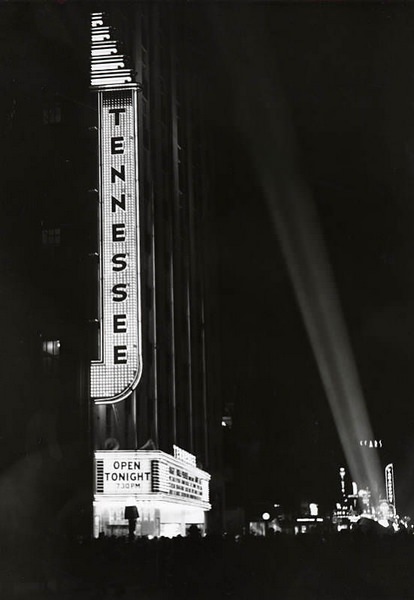
A photograph of the grand opening of the million-dollar Tennessee Theatre (built on the first floor of the 1930's Sudekum building) on February 28, 1952, featured appearances by state and local politicians, celebrities and the cast of the movie About Face, which had its premier that evening. The Tennessee, built into the first floor of the 1930s Sudekum building, seated 2,020 people and was hailed as the fulfillment of a dream of the late Tony Sudekum, founder of the Crescent Amusement Company that built the theatre, and as a keystone in Nashville's growth and development. Live performances as well as motion pictures were featured at the Tennessee. The American Ballet Theatre appeared there on October 25, 1957. Its orchestra director was Kenneth Schermerhorn, future conductor of the Nashville Symphony. The theatre which stood on the corner of 6th Avenue and Church Street was demolished in 1990.
#127 Tennessee Theatre on Church Street, Nashville, Tennessee, 1952
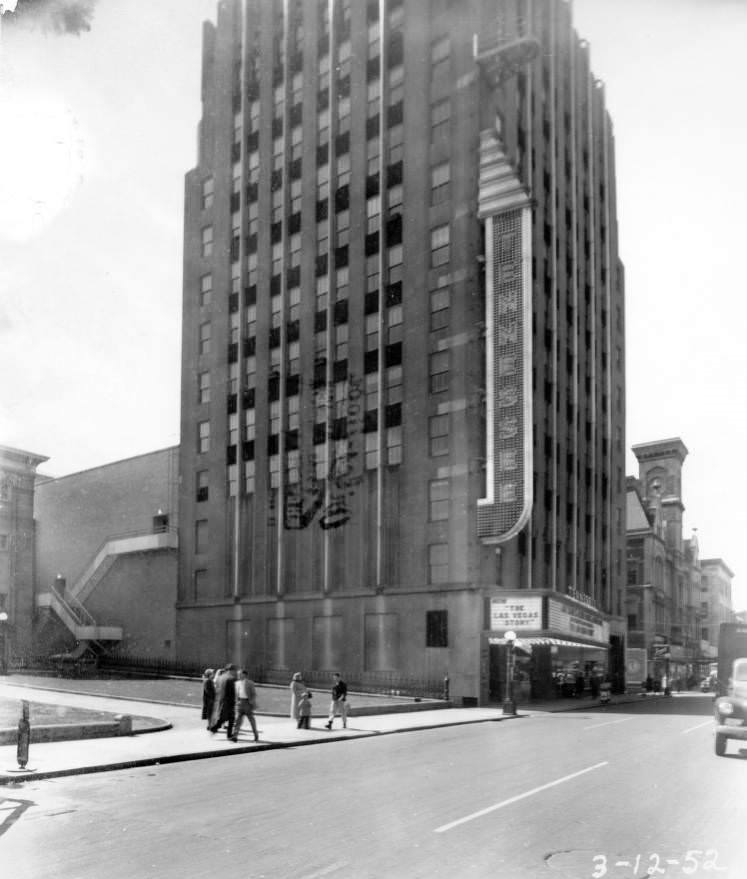
This palatial Art Deco movie palace opened on February 28th, 1952. It featured a 2,000-seat auditorium adjoining the Sudekum Building (Warner Building). This new portion of the building was done by Marr & Holman, architects and Foster-Creighton, General Contractors. The theatre sign was nine stories high. Both the theatre and Sudekum Building were razed in the late 1980s to make way for a new highrise.
The Foster & Creighton construction contracting firm was founded in 1885 by Wilbur F. Foster and Robert T. Creighton, who had both served as City Engineer of Nashville.
#128 Tennessee welcomes Hollywood at the Tennessee Theater, Nashville, Tennessee, 1952
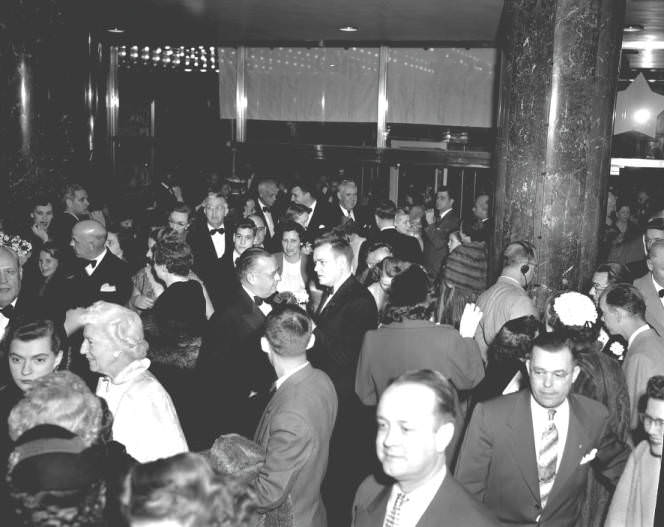
The Tennessee Theater opened circa February 28, 1952 in Nashville, Tennessee. This palatial Art Deco movie palace was located in downtown Nashville at 527 Church Street. It featured a 2,000-seat auditorium adjoining the Sudekum Building. The gala opening featured a Technicolor musical called “About Face” and many onlookers watched the arrival and announcement of movie stars such as Gordon MacRae, Phyllis Kirk, Lex Barker, and others. Many local VIPS attended the gala ceremony and Owen Bradley and his orchestra played inside on stage that night. Some of the outside activities included broadcasts by WSIX radio and WSM television, a concert by the American Legion Post 5 band, and the arrival of the honored celebrities.
#129 Tennessee welcomes Hollywood at the Tennessee Theater, Nashville, Tennessee, 1952
#130 Tennessee welcomes Hollywood at the Tennessee Theater, Nashville, Tennessee, 1952
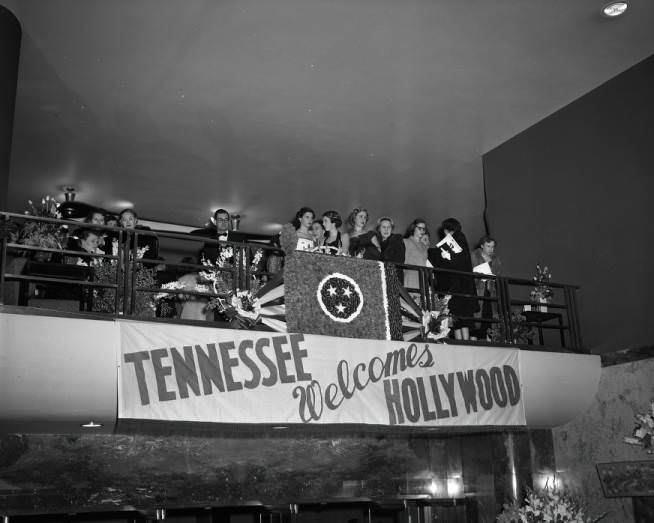
A view of the lobby, celebrities, and patrons at the Tennessee Theatre in downtown Nashville, Tennessee, circa 1952. The banner reads: “Tennessee Welcomes Hollywood.” The Tennessee Theater opened circa February 28, 1952 in Nashville, Tennessee.
This palatial Art Deco movie palace was located in downtown Nashville at 527 Church Street. It featured a 2,000-seat auditorium adjoining the Sudekum Building.
#131 A group of junior choir members at Shelby Avenue Baptist Church, 1951
#132 Three-dimensional model train exhibit at the Nashville Children’s Museum in Nashville, Tennessee, 1954
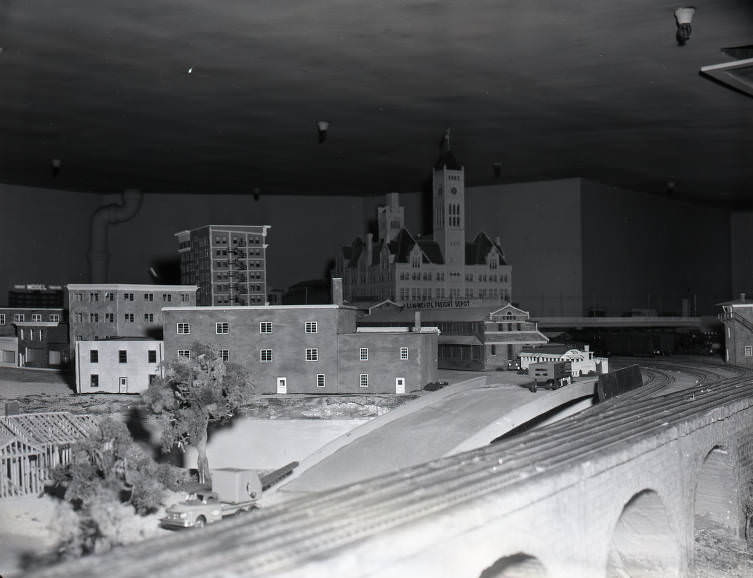
This was a joint project of the Nashville Association of Model Engineers, the board of directors of the Museum, and the three railroads serving Nashville representing the city’s transportation system and major landmarks, such as Union Station. Mayor Ben West, with his hobby of model trains, helped raise funds for the exhibit. The museum’s collection was housed in a large cut-stone building at 724 Second Avenue South that had once served as the University of Nashville. In addition to educational programming the museum included special exhibits of North American animals, birds, flowers, minerals, fossils, and local history. The museum was active at this site from 1944 to 1973. The children’s museum closed and reopened as the Cumberland Science Museum at the bottom of the hill containing the ruins of Fort Negley.
#133 Tulane Hotel demolition in downtown Nashville, Tennessee, 1957
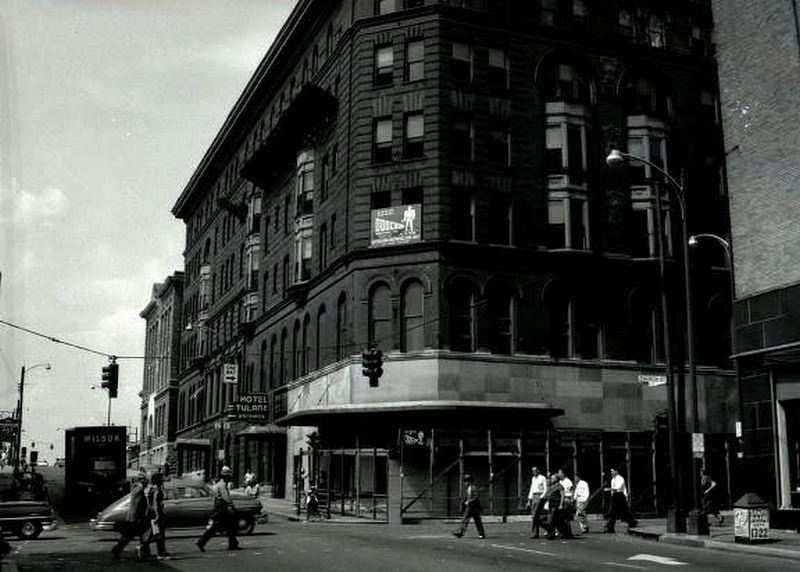
This hotel, built in the renaissance revival style, was erected in 1894 as the Nicholson Hotel on the site of the old Nicholson House, a fancy boarding housing beginning in the 1860s and the residence of I. C. Nicholson. In 1896, the hotel, with its renovation and expansion, was renamed the “Tulane” for one of the new owner’s relatives. In 1897, during the Tennessee Centennial Exposition, it held visitors from all over the world. In 1911, Anne Dallas Dudley and several other women met in a parlor of the Tulane Hotel and founded the Nashville Equal Suffrage League, an activist organization in support for the right of women to vote. During the 1940s there were many elegant formal balls, election year celebrations, Christmases, and entertainment for soldiers during World War II. In 1947, Castle Studio, Nashville first major recording studio was established at the site. In the 1950s, National Life and Accident Insurance purchased the building for approximately $850,000. The Tulane closed its doors April 1956 and a few months later this hotel was razed to make way for a parking lot.
#134 Tulane Hotel demolition in downtown Nashville, Tennessee, 1957
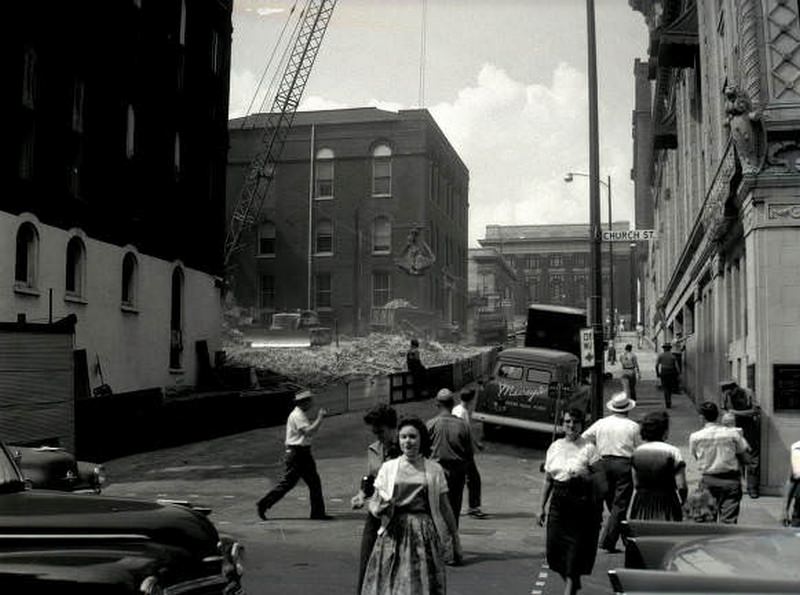
This hotel, built in the renaissance revival style, was erected in 1894 as the Nicholson Hotel on the site of the old Nicholson House, a fancy boarding housing beginning in the 1860s and the residence of I. C. Nicholson. In 1896, the hotel, with its renovation and expansion, was renamed the “Tulane” for one of the new owner’s relatives. In 1897, during the Tennessee Centennial Exposition, it held visitors from all over the world. In 1911, Anne Dallas Dudley and several other women met in a parlor of the Tulane Hotel and founded the Nashville Equal Suffrage League, an activist organization in support for the right of women to vote. During the 1940s there were many elegant formal balls, election year celebrations, Christmases, and entertainment for soldiers during World War II. In 1947, Castle Studio, Nashville first major recording studio was established at the site.
#135 Tulane Hotel demolition in downtown Nashville, Tennessee, 1957
#136 Union Station, Nashville, Tennessee, 1951
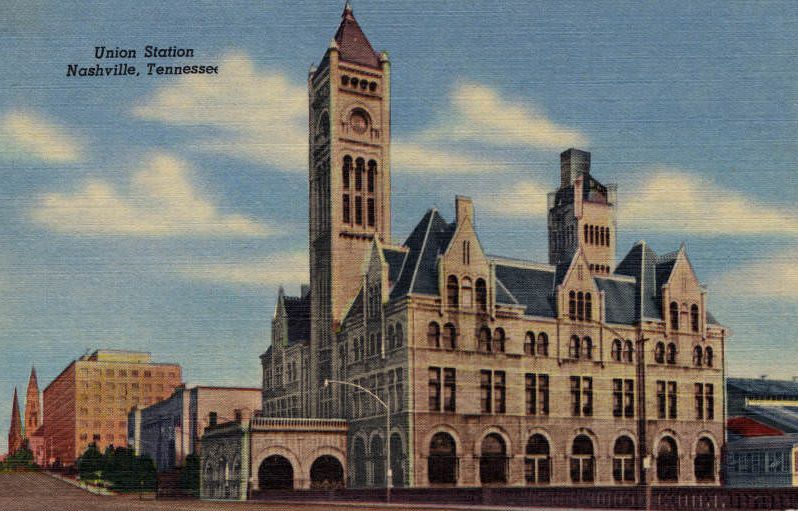
The station is located on Broadway at Tenth Avenue. The station is an example of late-Victorian Gothic Revival architecture. The tower was originally topped by a bronze statue of the Roman god Mercury, but this ornamentation was toppled in a storm in 1951. Station usage reached its peak during World War II when it was the shipping-out point for tens of thousand of U.S. troops and the site of a USO canteen. Usage declined steadily after the war. By the late 1970s service was discontinued and the station was abandoned entirely. In the 1980s the main structure reopened as a historic hotel. Finding a modern use for the train shed where passengers had waited to board proved to be a more difficult challenge. When plans of creating a farmers market with the shelter failed to come to fruition, the structure was demolished after its design had been carefully recorded. In 1969 Union Station was added to the National Register of Historic Places.
#137 Vacant building at 116 Fourth Avenue South, Nashville, Tennessee, 1956
#138 Varallo’s Restaurant at 817 Church Street, Nashville, Tennessee, 1958
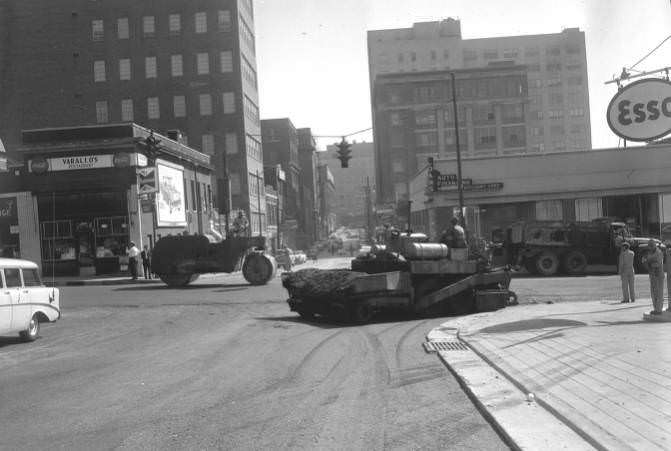
Also pictured is an asphalt pavement roller and equipment making road improvements on Church Street and Ninth Avenue. Nashville’s oldest restaurant was founded by Frank Varallo, Sr., a traveling violinist from Viggiano, Italy, who opened a restaurant in 1907 featuring a secret bean soup recipe called “chile” (then located on Broadway near Hume-Fogg Academic High School). Frank Varallo, Jr. and his brother Nick took over from their father in 1937, and Frank became sole owner soon after. He and his wife, Eva, with many of the Varallo family have worked in the restaurant over the years. The restaurant closed operation on Church Street in December 1998, but was continued at a new location on Fourth Avenue N, downtown, headed by Todd Varallo, the great-grandson of the founder. Forms part of Record Group 3, Metro Davidson County Photographer.
#139 Victory Memorial Bridge construction, Cumberland River views, Nashville, Tennessee, 1950s
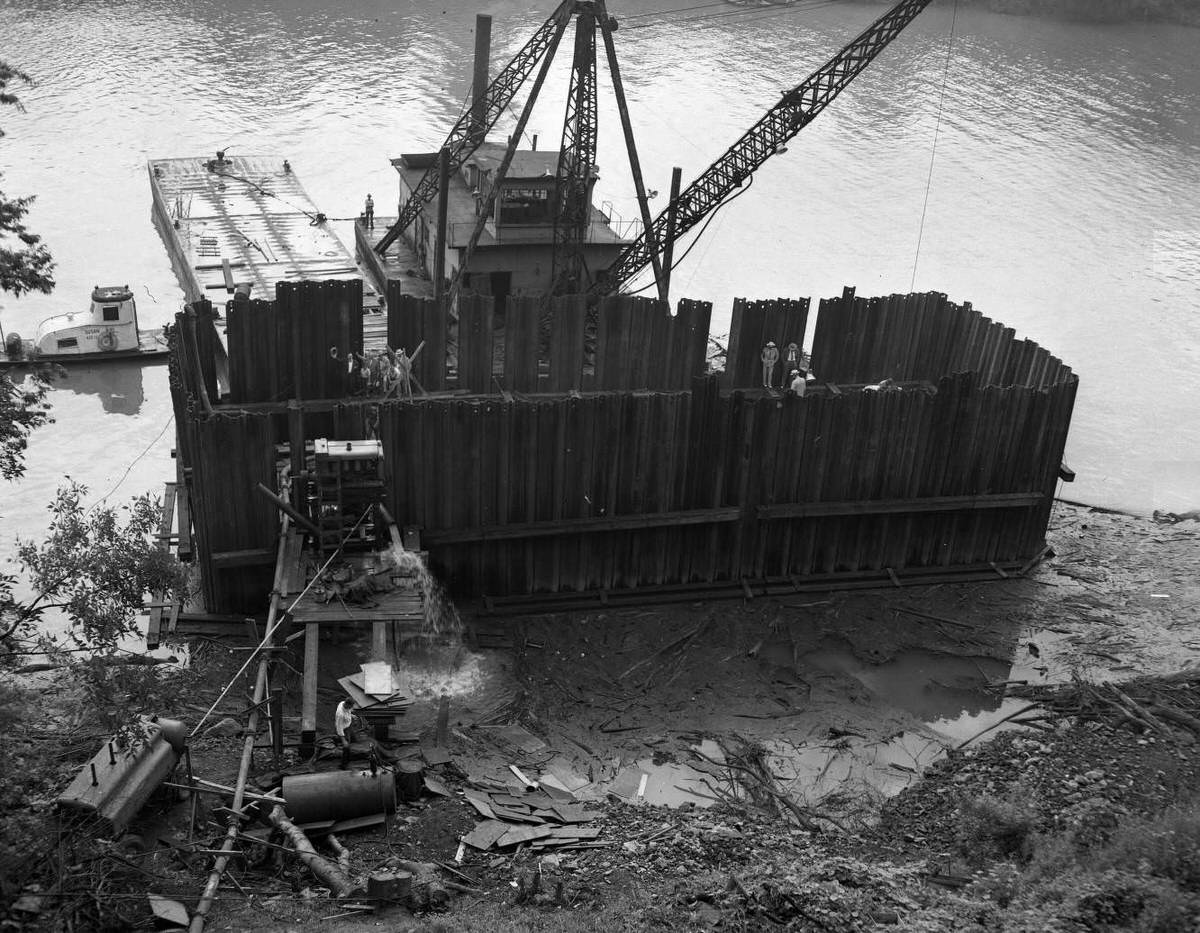
The bridge connects the public square and the central business district, on the western side of the Cumberland River, to Main Street in East Nashville. M. S. Poteat’s firm was contracted to building the bridge approaches, as well as the bridge substructure. For the final phase, the superstructure and decking, the contract went to the Nashville Bridge Company. State engineer Roy Higgs was in charge of the project.
The Victory Memorial Bridge originated in part from a 1948 public movement to recognize Nashville and Davidson County military soldier casualties from World War II; officials later favored a joint memorial including Korean war names. Constructed of 1,900 feet of modern steel in stone, it officially opened May 19, 1956, with Mayor Ben West cutting the ribbon and reading a poem titled “The Bridge Builder” by local poet Miss Will Allen Dromgoole.
#140 Victory Memorial Bridge construction, Nashville, Tennessee, 1950s
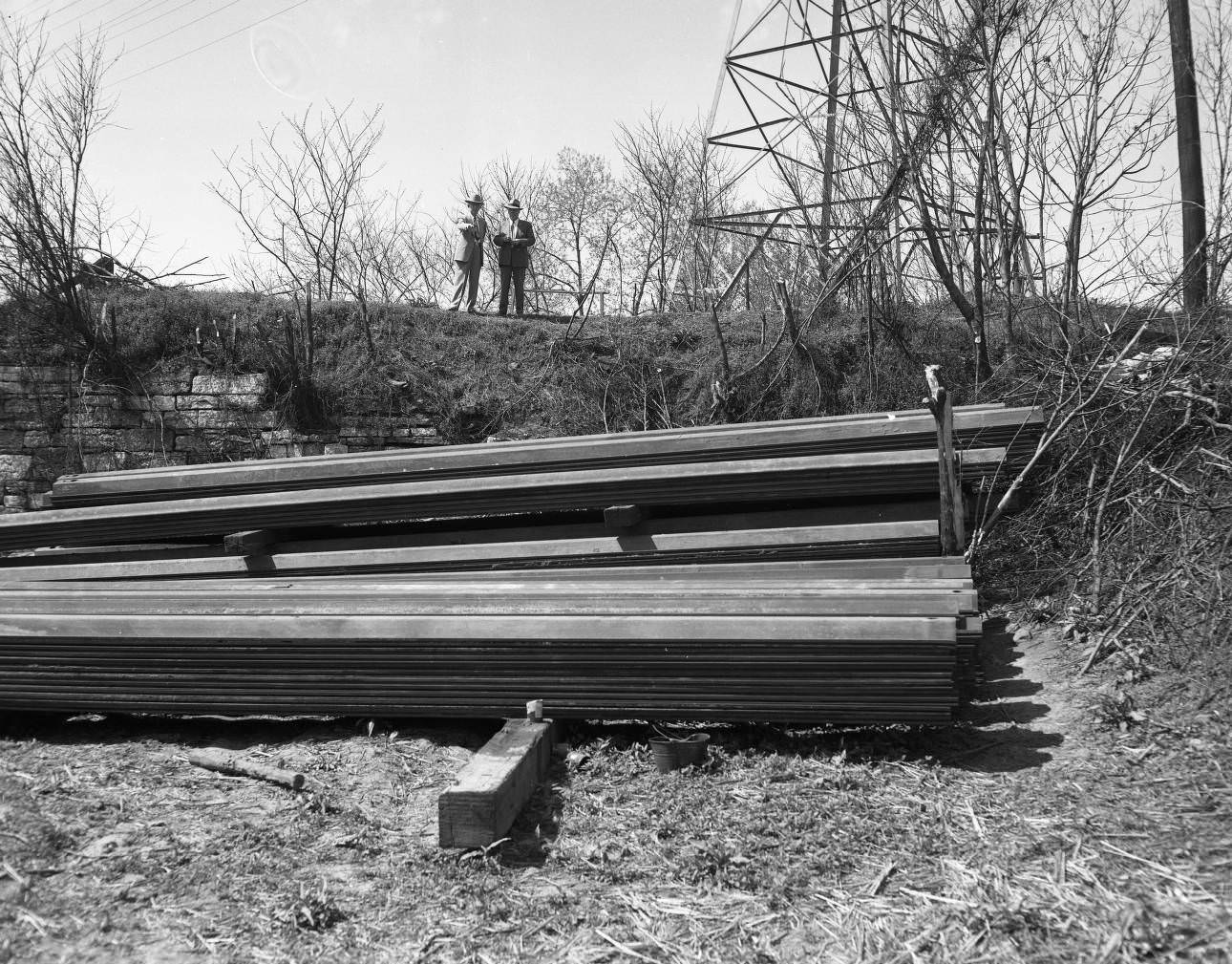
The bridge connects the public square and the central business district, on the western side of the Cumberland River, to Main Street in East Nashville. M. S. Poteat’s firm was contracted to building the bridge approaches, as well as the bridge substructure. For the final phase, the superstructure and decking, the contract went to the Nashville Bridge Company. State engineer Roy Higgs was in charge of the project. The Victory Memorial Bridge originated in part from a 1948 public movement to recognize Nashville and Davidson County military soldier casualties from World War II; officials later favored a joint memorial including Korean war names. Constructed of 1,900 feet of modern steel in stone, it officially opened May 19, 1956, with Mayor Ben West cutting the ribbon and reading a poem titled “The Bridge Builder” by local poet Miss Will Allen Dromgoole.
#141 Victory Memorial Bridge excavation on east side of Cumberland River, Nashville, 1953
#142 A gargoyle on the front archway column of the old Chamber of Commerce building in Nashville, 1959
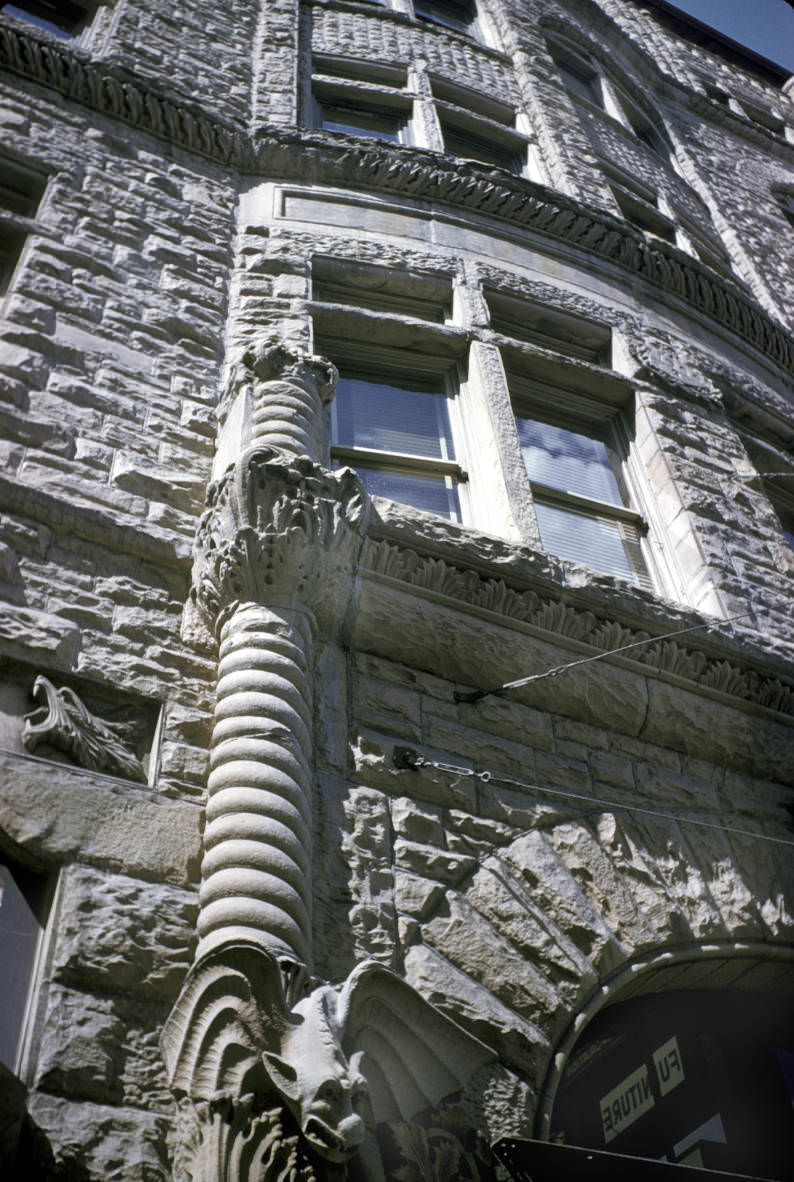
Prior to the building's razing in the early 1970's, it housed the Vanderbilt Law Department and part of the Vanderbilt School of Dentistry in the late 1800's and early 1900's. By 1919, an addition was completed, when it became the site of the Commercial Club and subsequently the Nashville Chamber of Commerce, which occupied the building for a span of decades. There was a Business Branch of the Carnegie Library at the Chamber of Commerce building that officially opened in 1931. The Chamber of Commerce occupied several addresses over the decades, in the downtown central business district, while both departments of Vanderbilt moved to the main campus, west of the city.
#143 Al Menah Temple Shriners leaving Union Station Nashville, Tennessee, for Southeastern Convention, 1959
#144 Buildings on the north side of the Public Square in Nashville, Tennessee, 1959
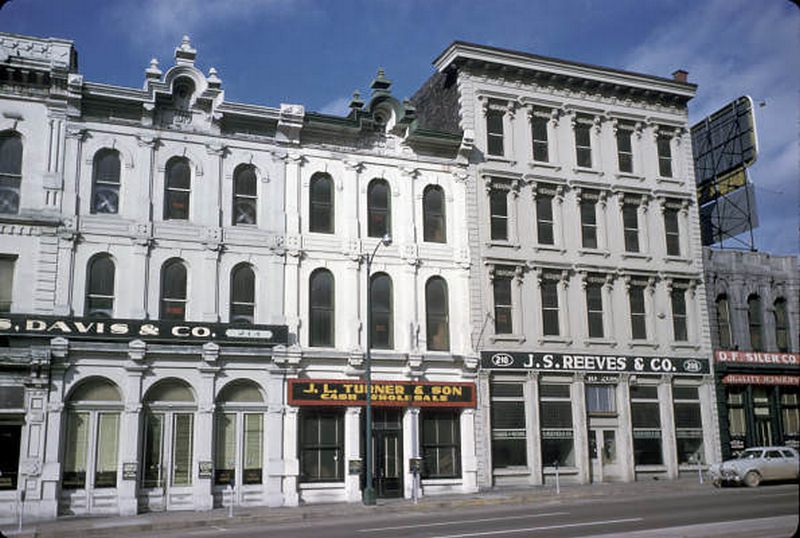
The square, with the county courthouse, city hall and market center, was a focus of wholesale commerce and political activity for the city for many years. The old city hall, dating from the 1850s, was replaced by a new city hall and courthouse in 1937. Most of the remaining buildings were destroyed in the 1970s as part of urban renewal projects. These buildings, located at 206-216 Public Square North, formed part of the north side of the square, running west from 2nd Avenue North. Among them are the last of the perimeter buildings to be demolished. The Reeves Building, 208-210 Public Square North, is believed to have been constructed in the late 1850s. It was built by Samuel D. Morgan to as a home to his wholesale dry goods business. Iron cores were used in the columns of the building. J. S. Reeves purchased the building, which became the home of his dry goods business until 1964. It, along with the buildings to the left of it in the picture, was demolished in 1975. The building located at 206 Public Square North, occupied by D. F. Siler Company in the picture, had a cornerstone that dated it to 1882 and it once housed the Sunday School Union of the African Methodist Episcopal Church
#145 Fehr Elementary School, corner of Fifth Avenue and Garfield Street, Nashville, Tennessee, 1957
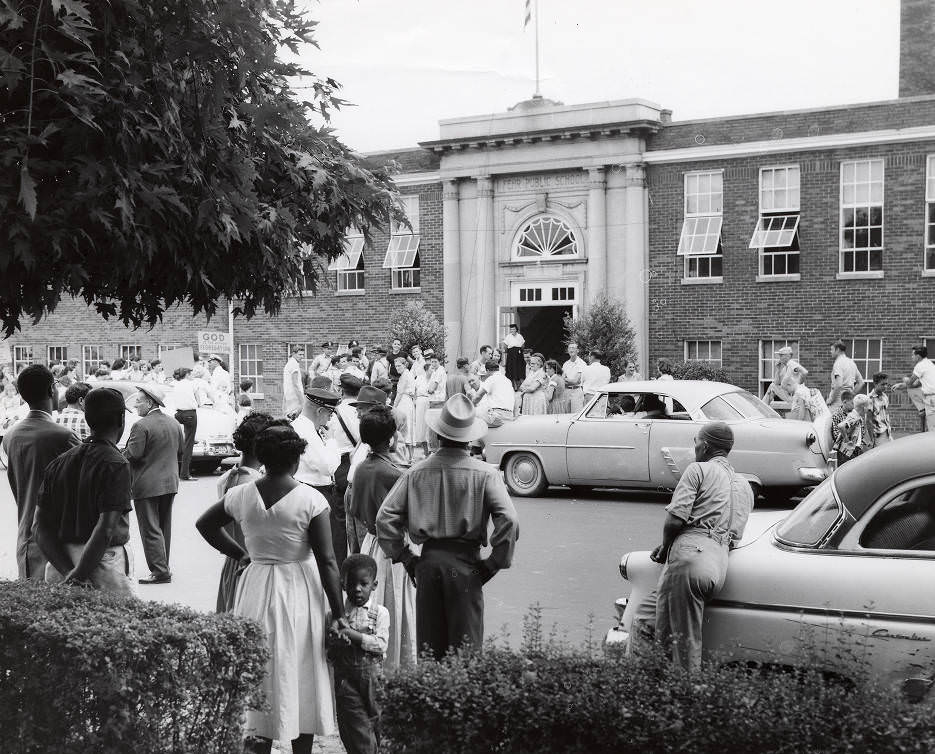
A photograph of irate segregationists exchanging words with supporters of desegregation at Fehr Elementary School, Nashville, Tennessee, 9 September 1957. Police officers escorted African American students into the school, marking the first day of public school desegregation in Nashville, Tennessee and what was known as the Nashville Plan, a plan to desegregate one grade per year starting with the first grade.
#146 Fire hall and staff of Engine Company 11, Nashville Fire Department, Nashville, 1956
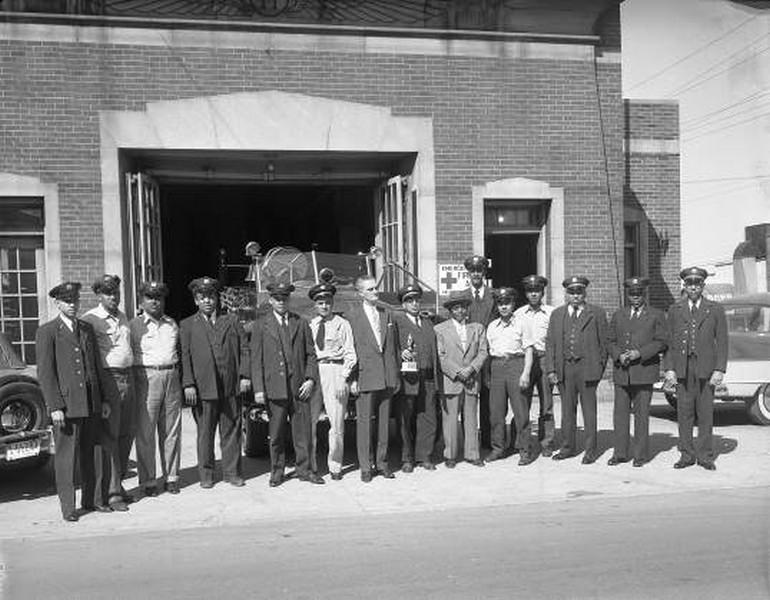
A photograph of the men of Engine Company 11 (located at 1204 Jefferson Street) standing in front of their fire hall honoring their leader, Captain Robert Campbell (holding award), who was retiring after being on the company roster 31 years as pipeman, lieutenant, and captain.
#147 Former Nashville Mayor Ben West at his desk, August 1958
#148 Grace McKinley walking her daughter, Linda Gail McKinley to Fehr Elementary School, Nashville, 1957
#149 Gerst House, Second Avenue, Nashville, Tennessee, 1950s
#150 C. T. Kirkpatrick Elementary School, Nashville, Tennessee, 1955
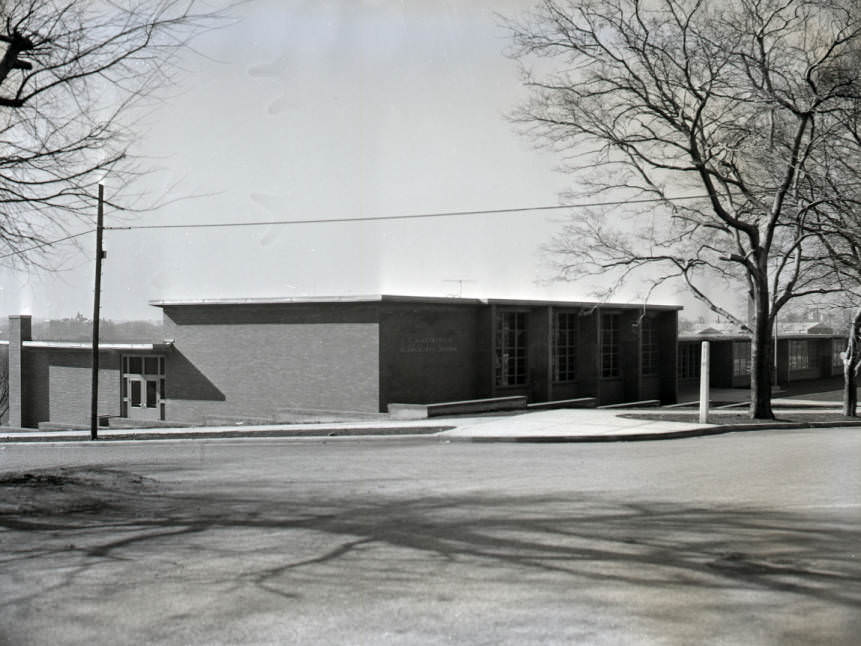
Kirkpatrick Elementary School opened in December 1952, named for C. T. Kirkpatrick who graduated from Fogg High School and Vanderbilt University, taught Latin at Fogg High School, and served as principal of Hume-Fogg High School from 1914 until his retirement in 1940. Kirkpatrick School offered grades 1-6 until 1971. At that time the school was paired with Warner School.


